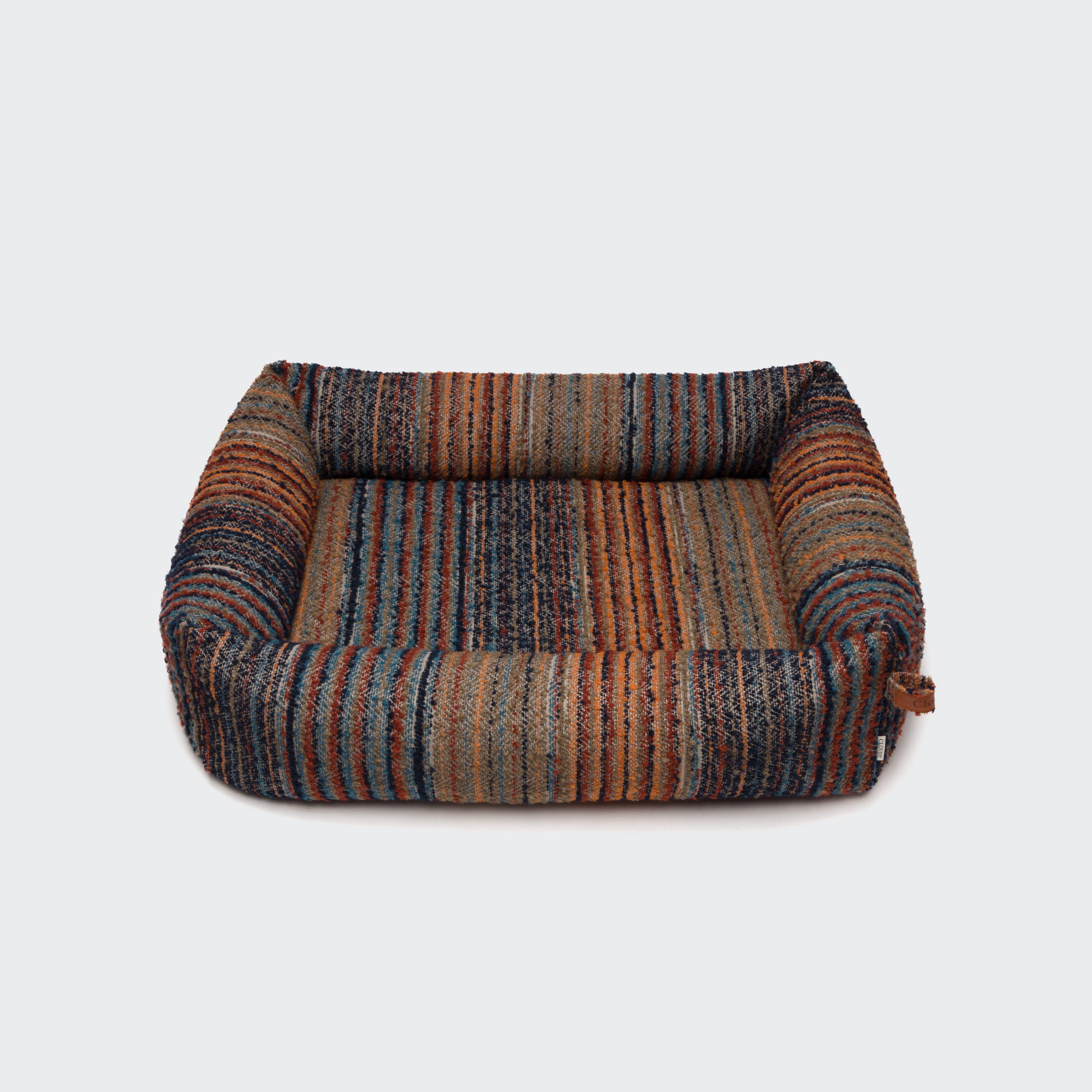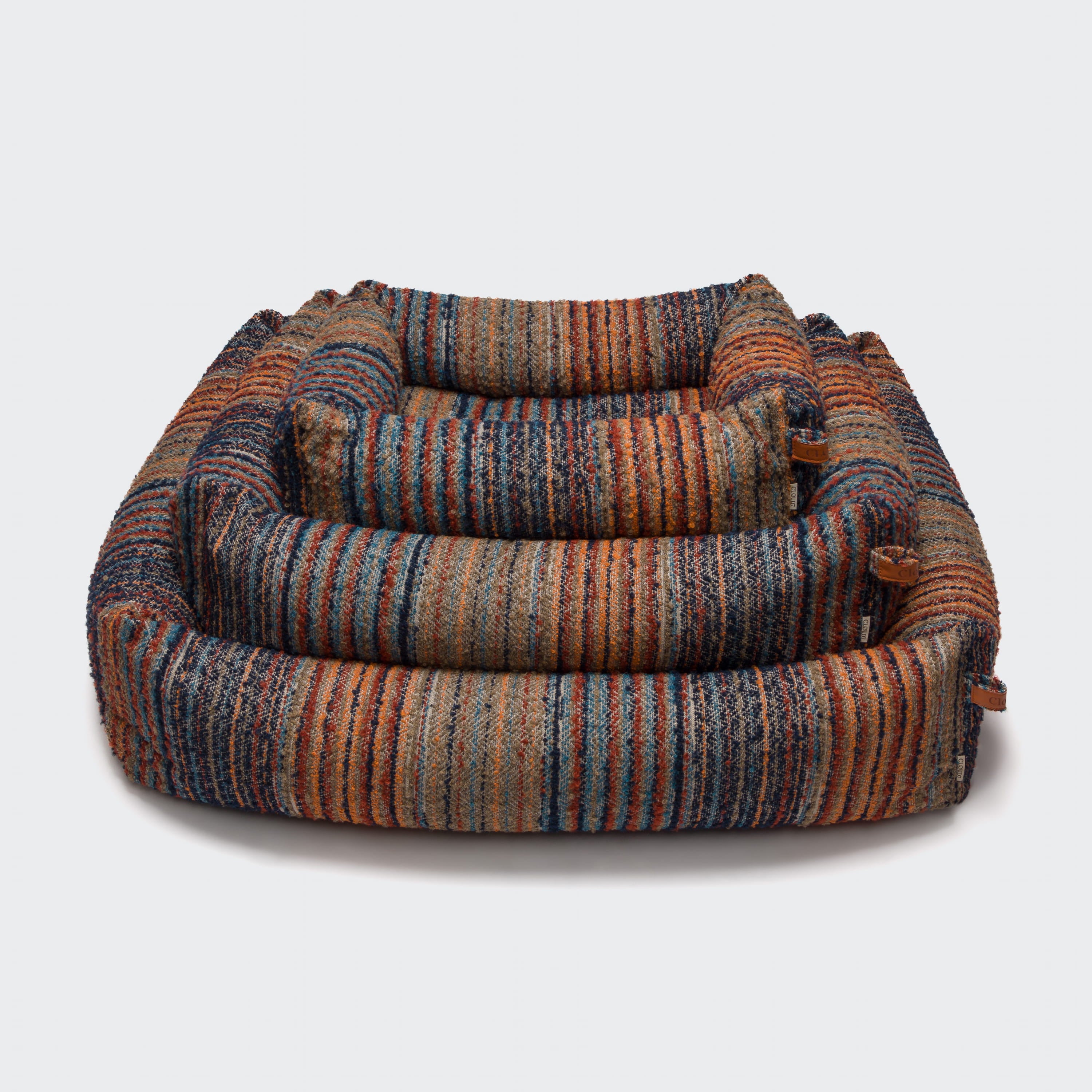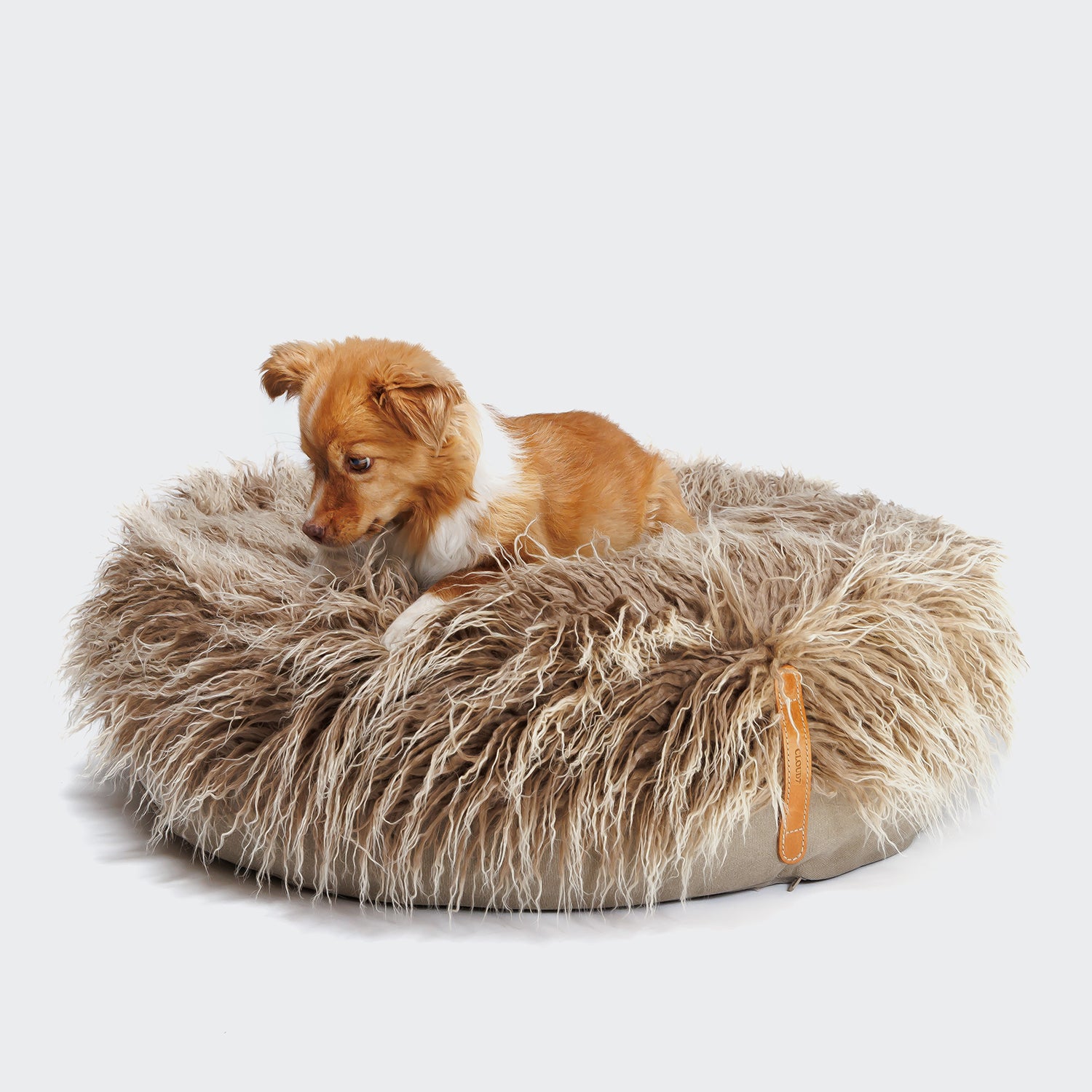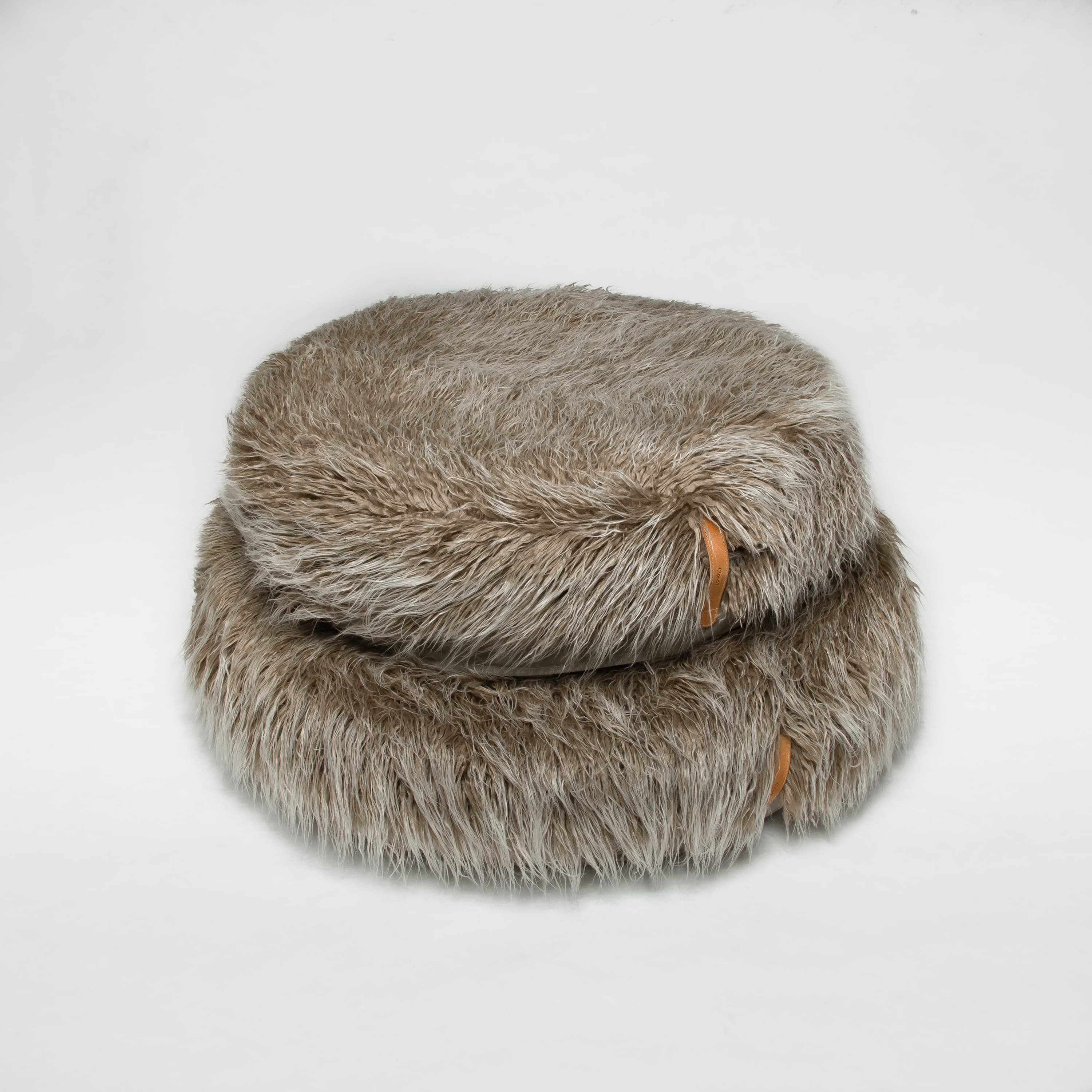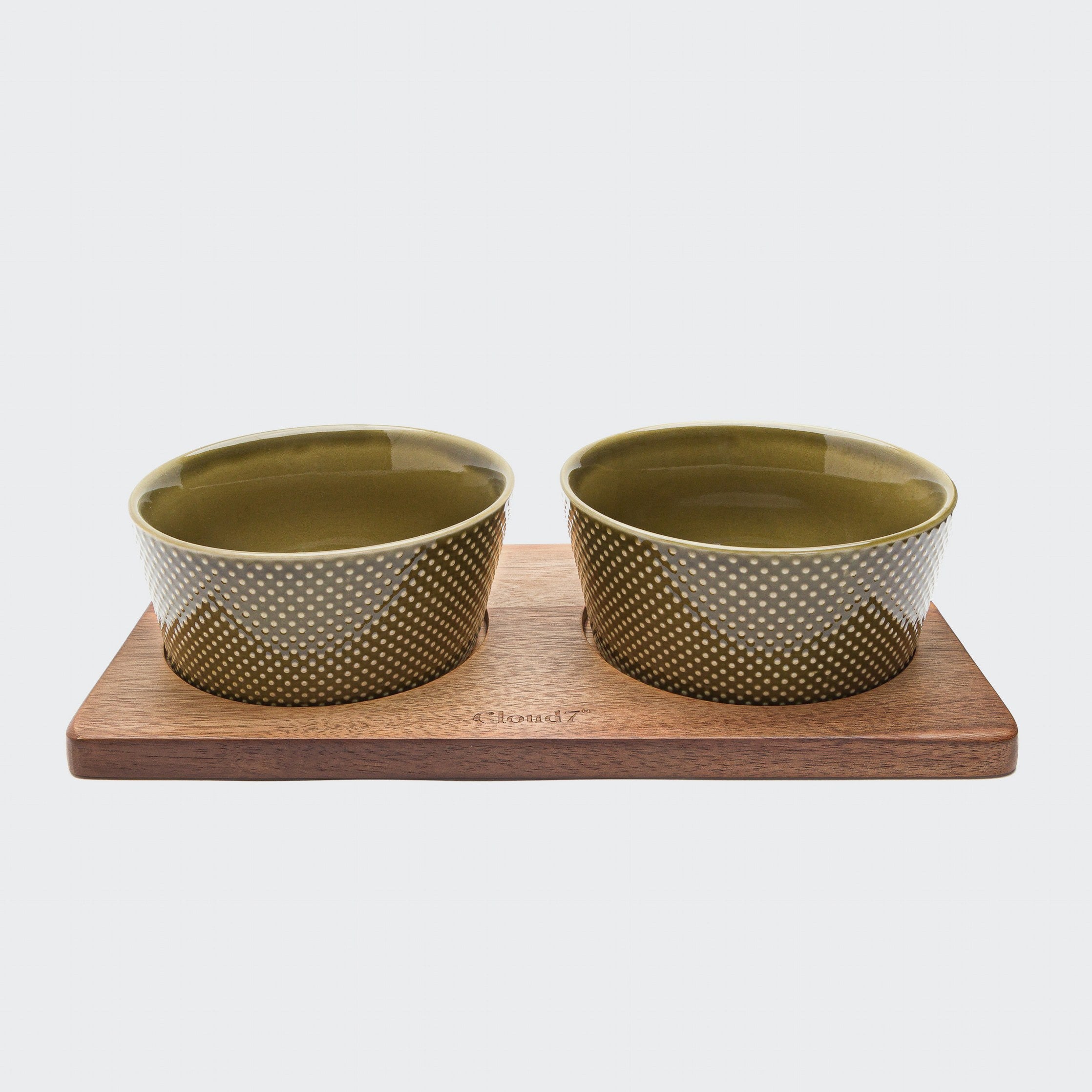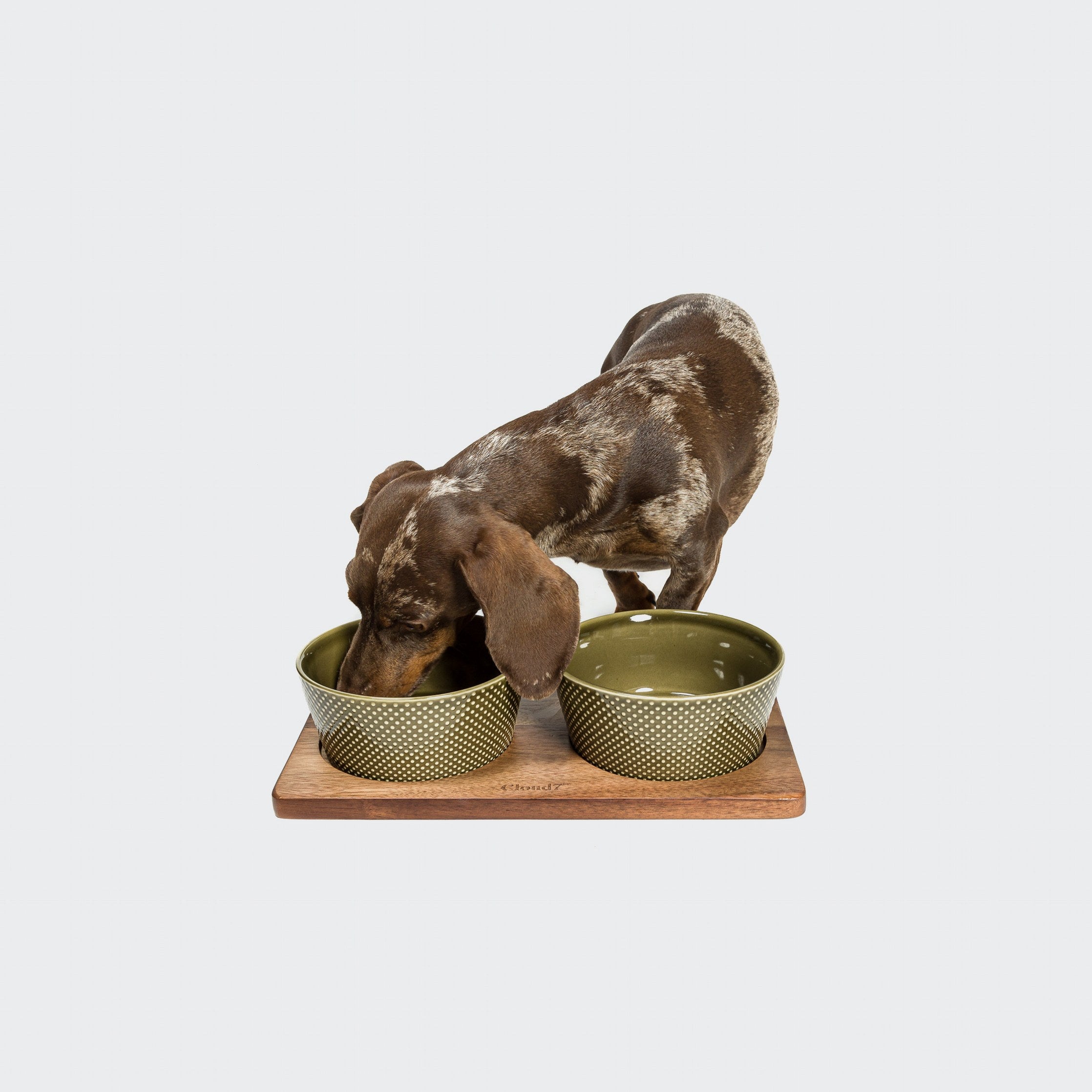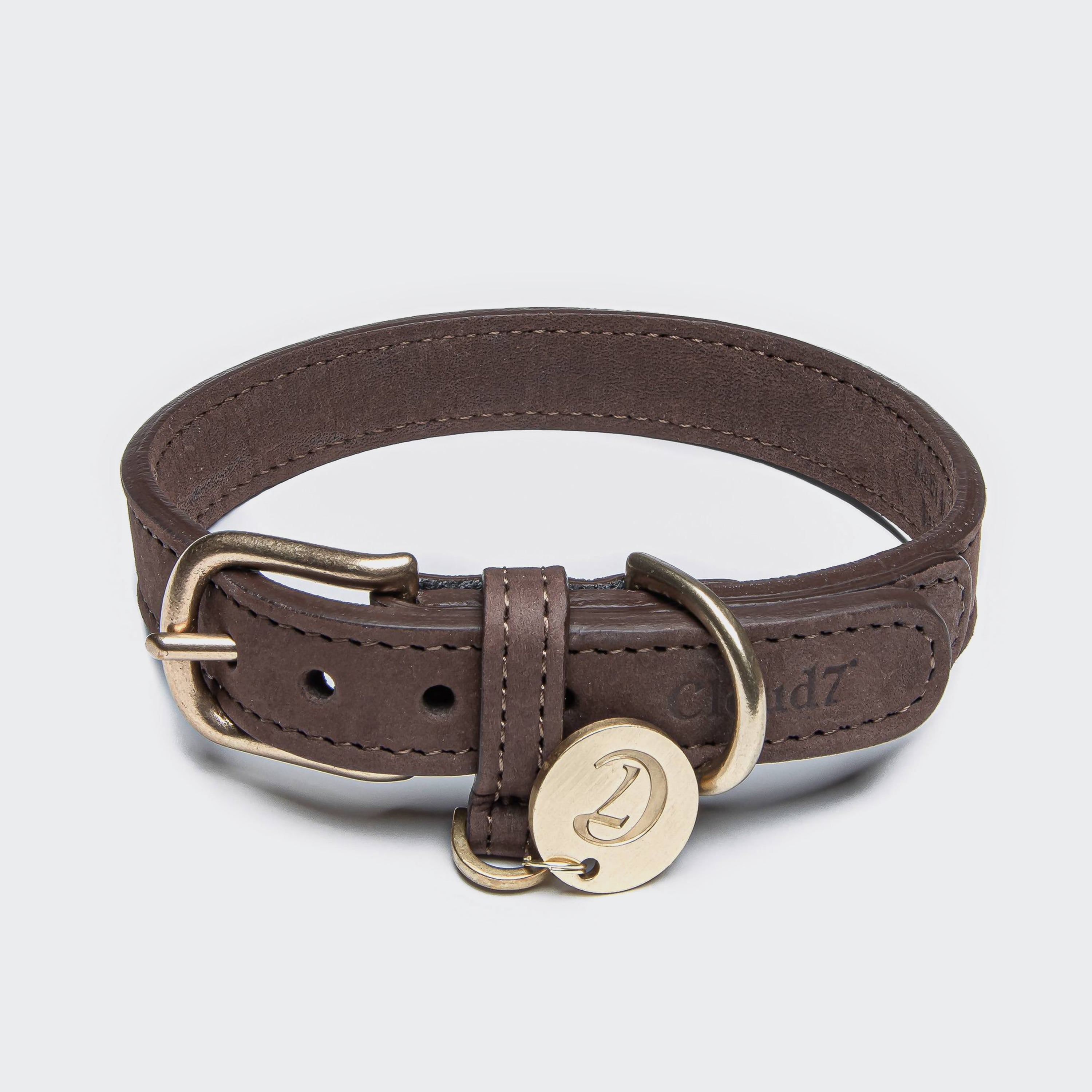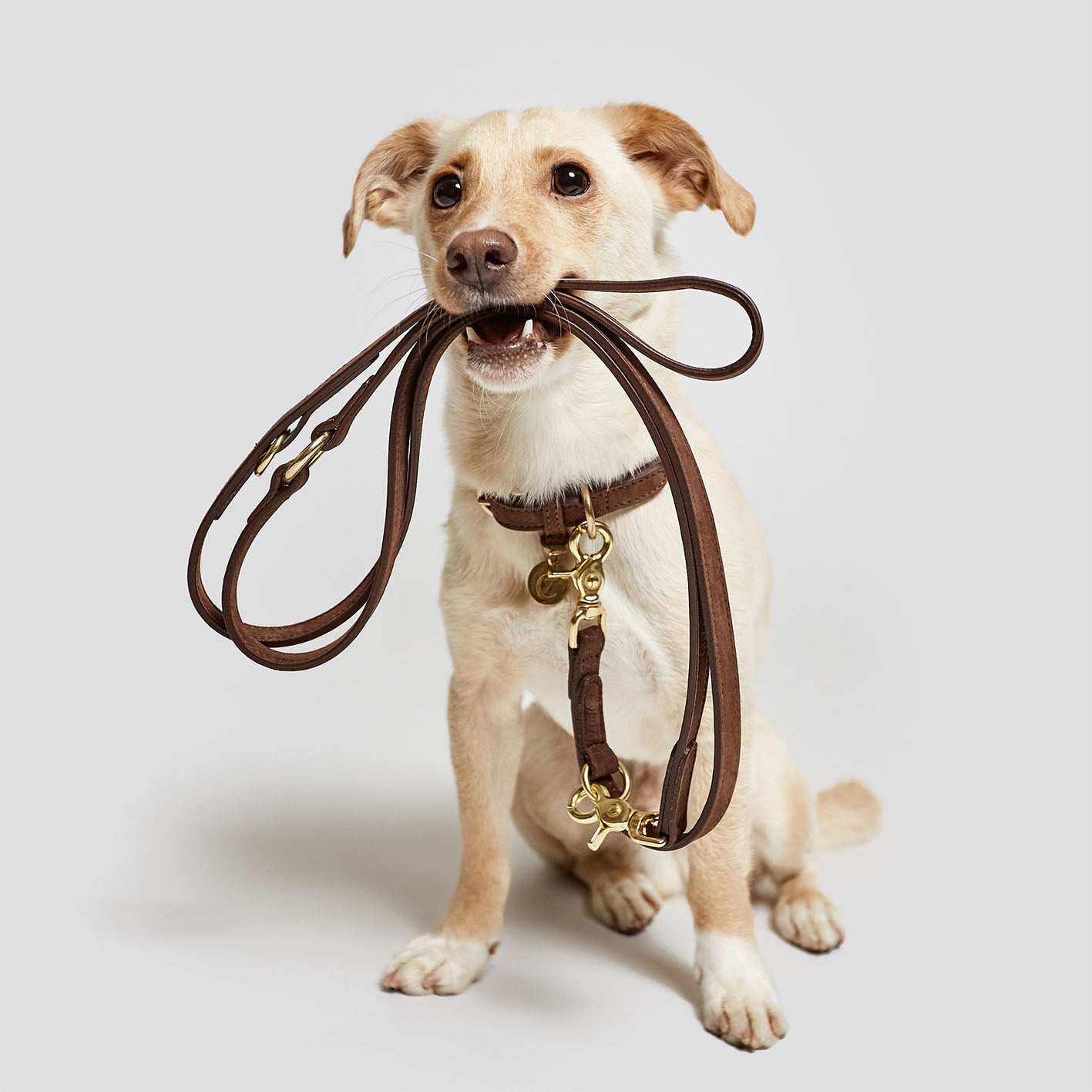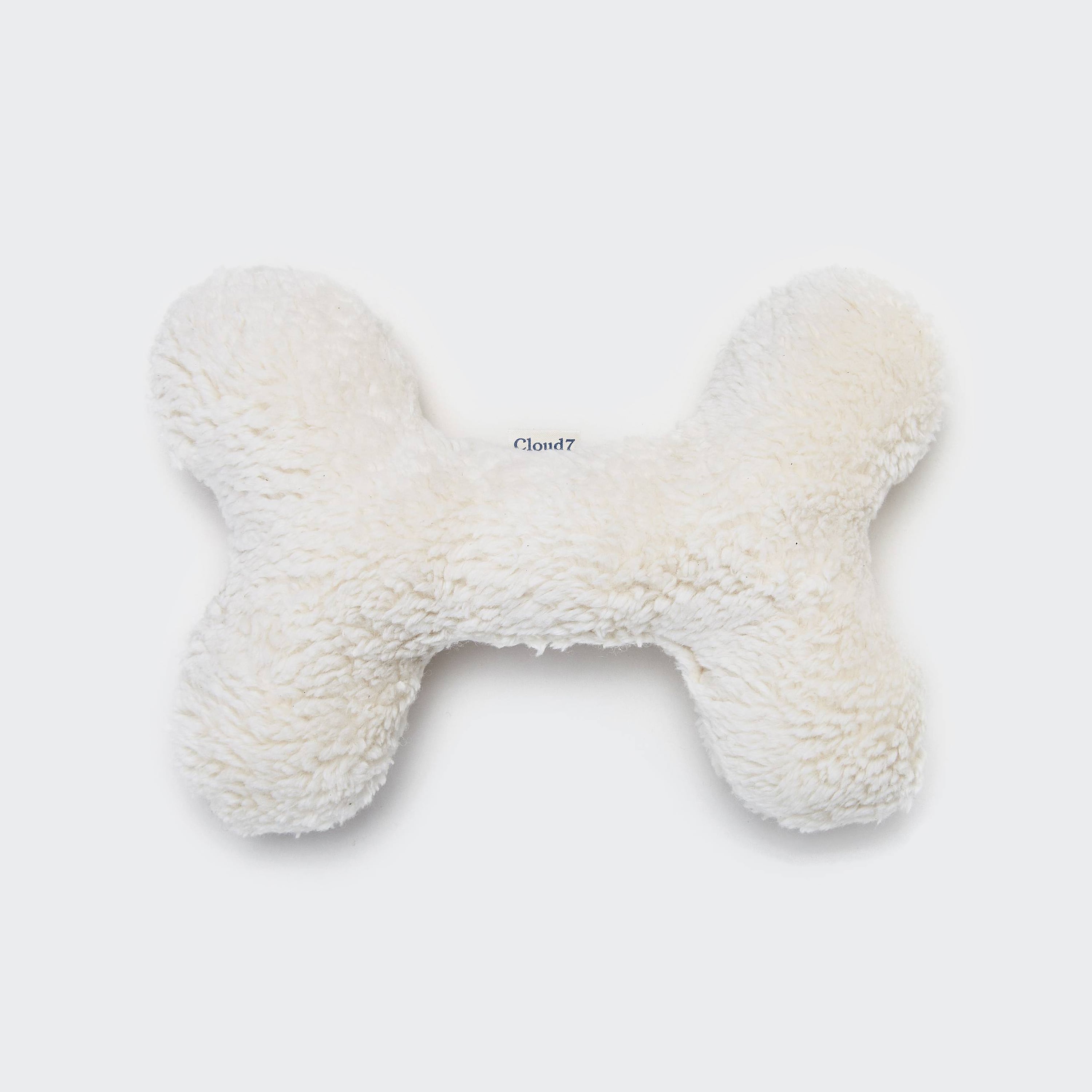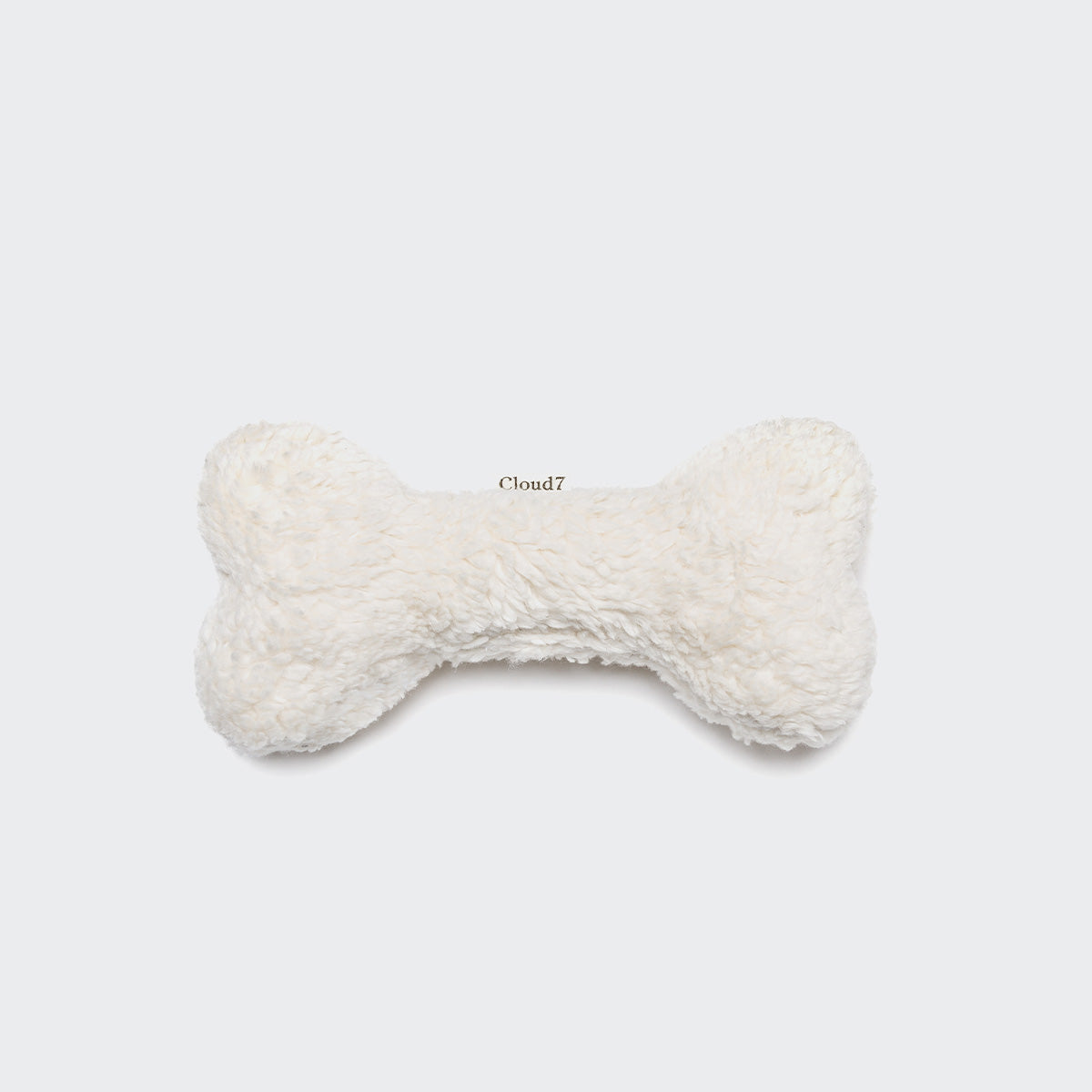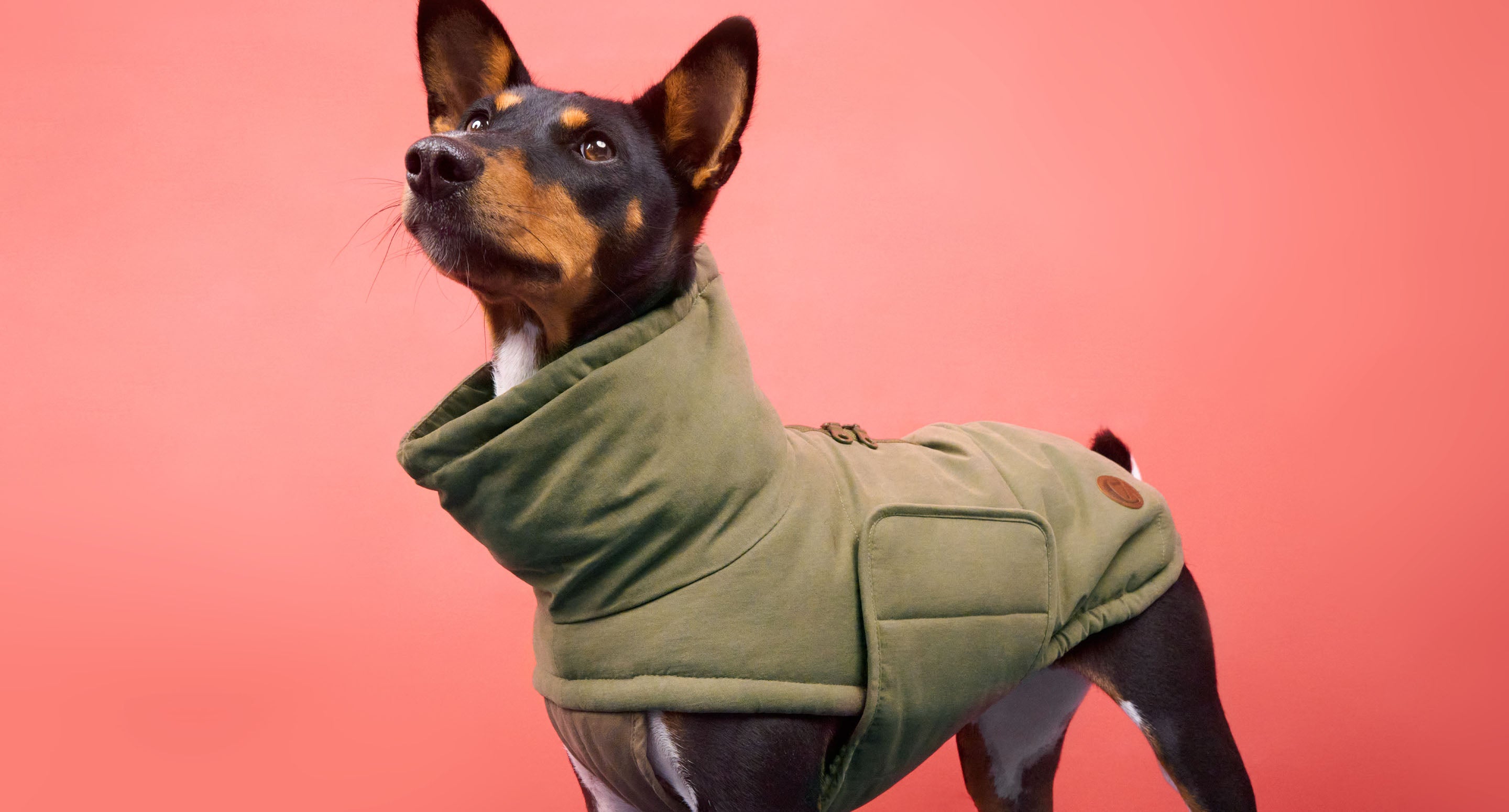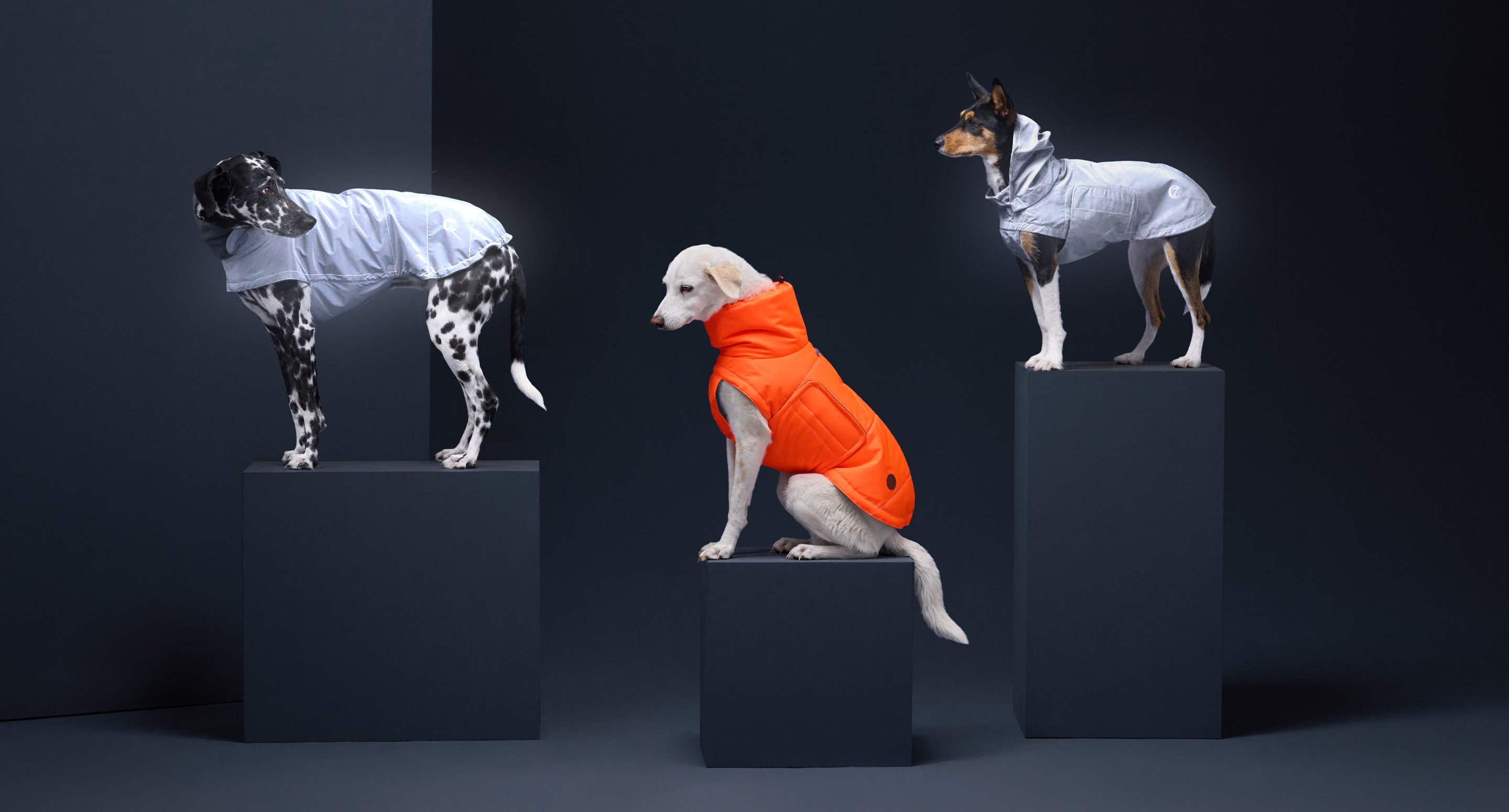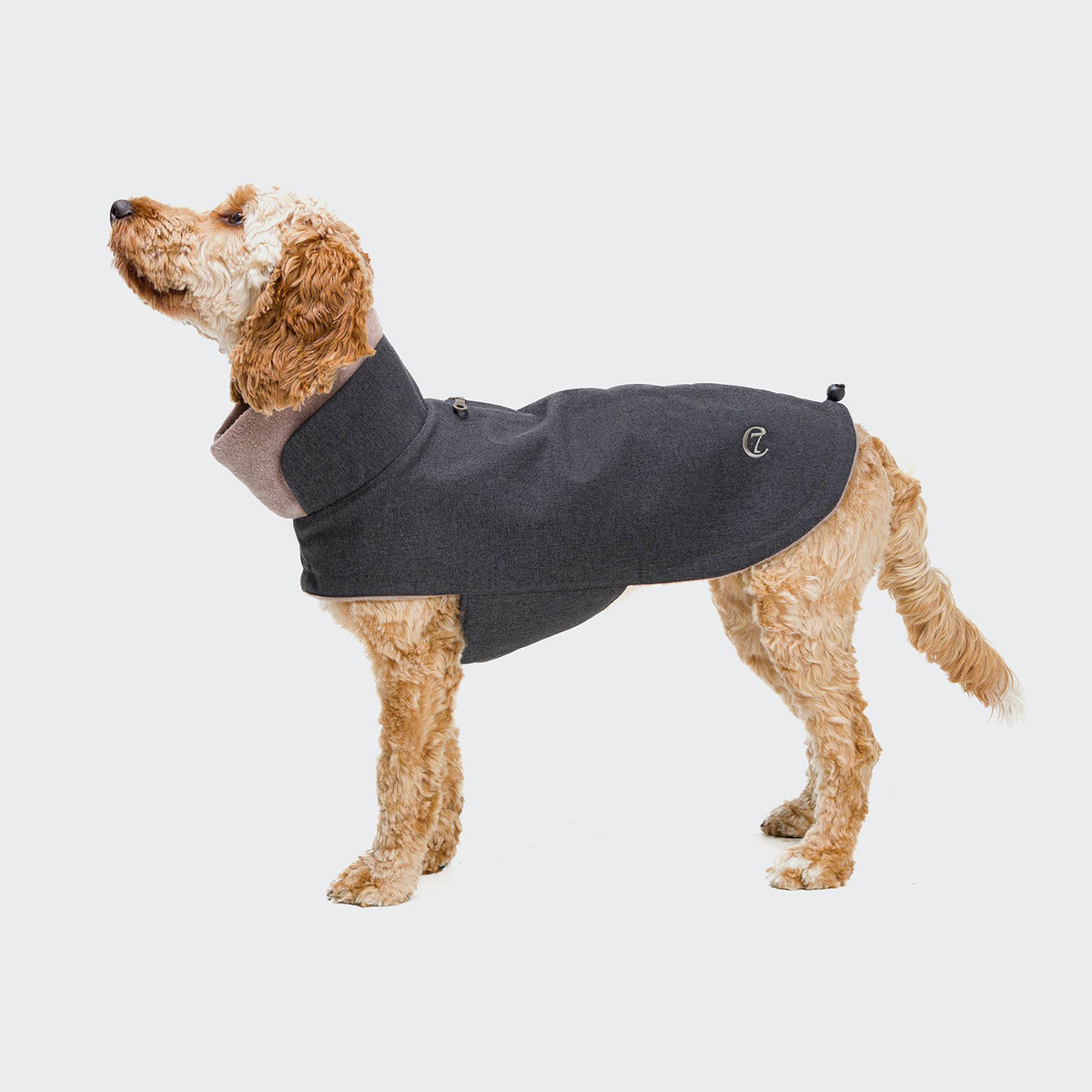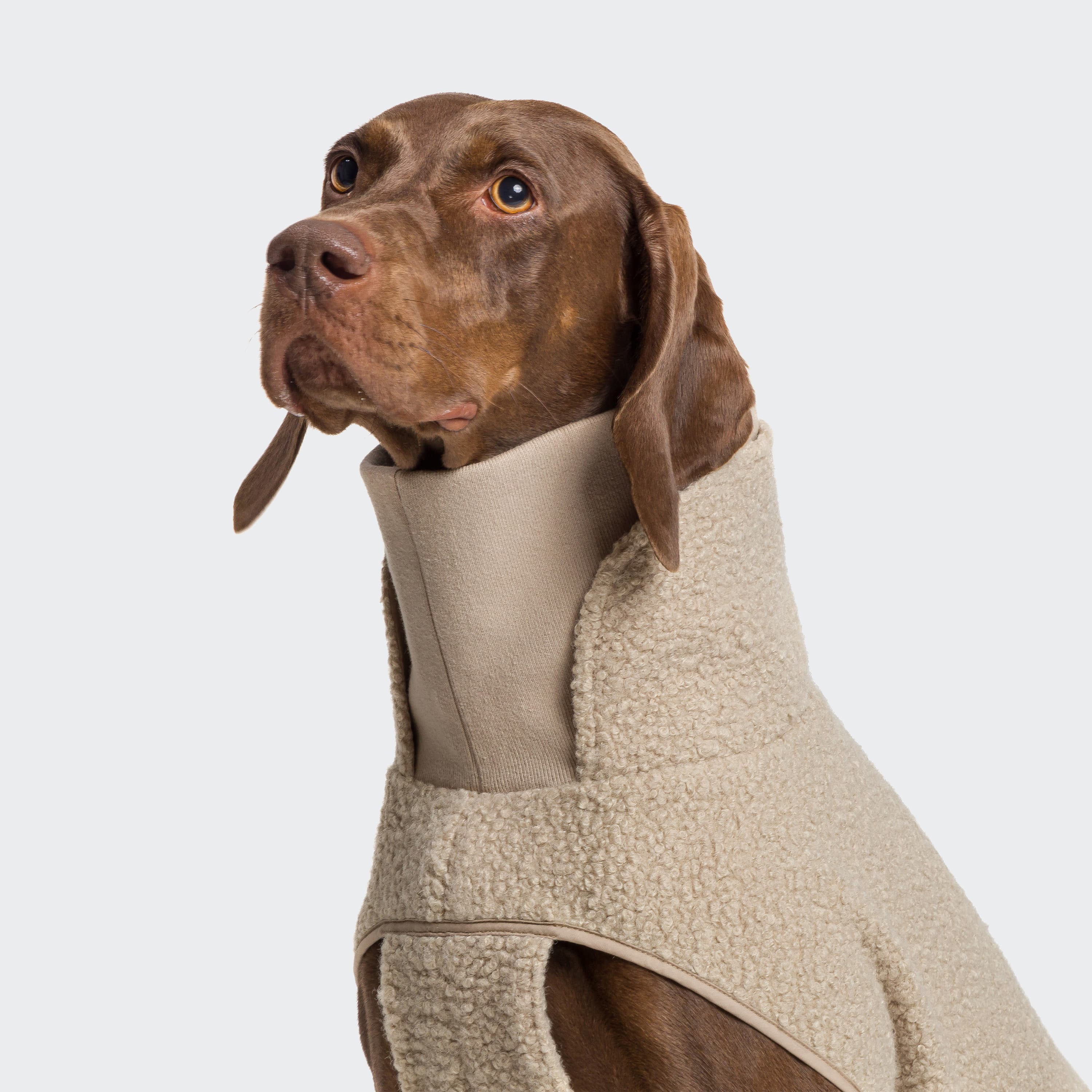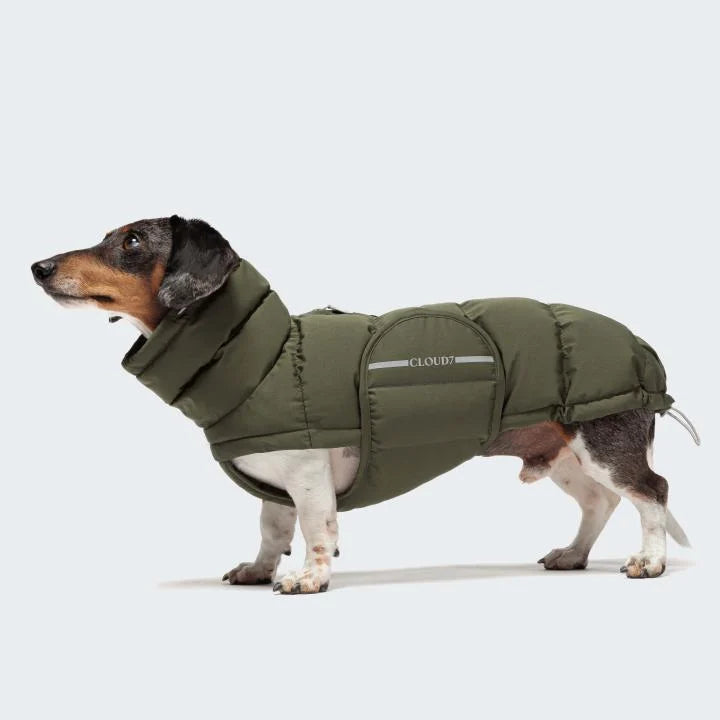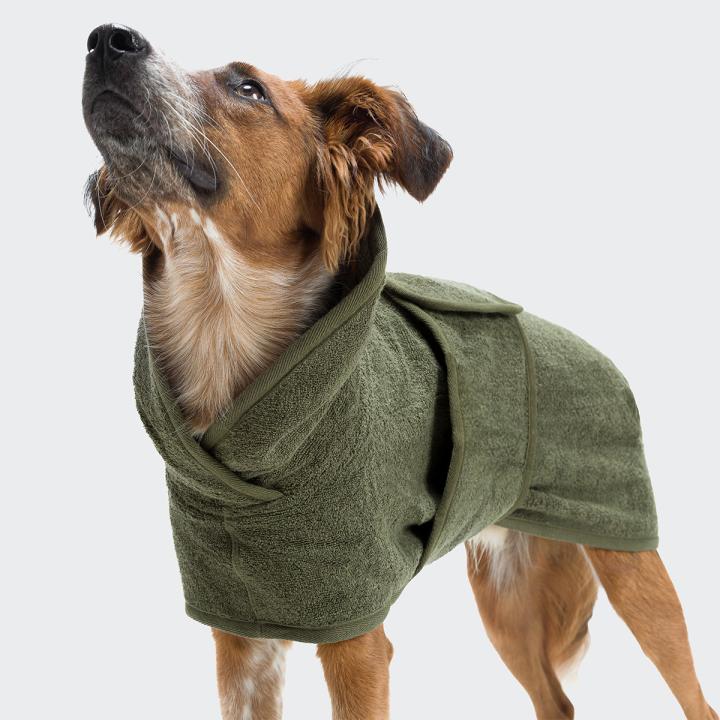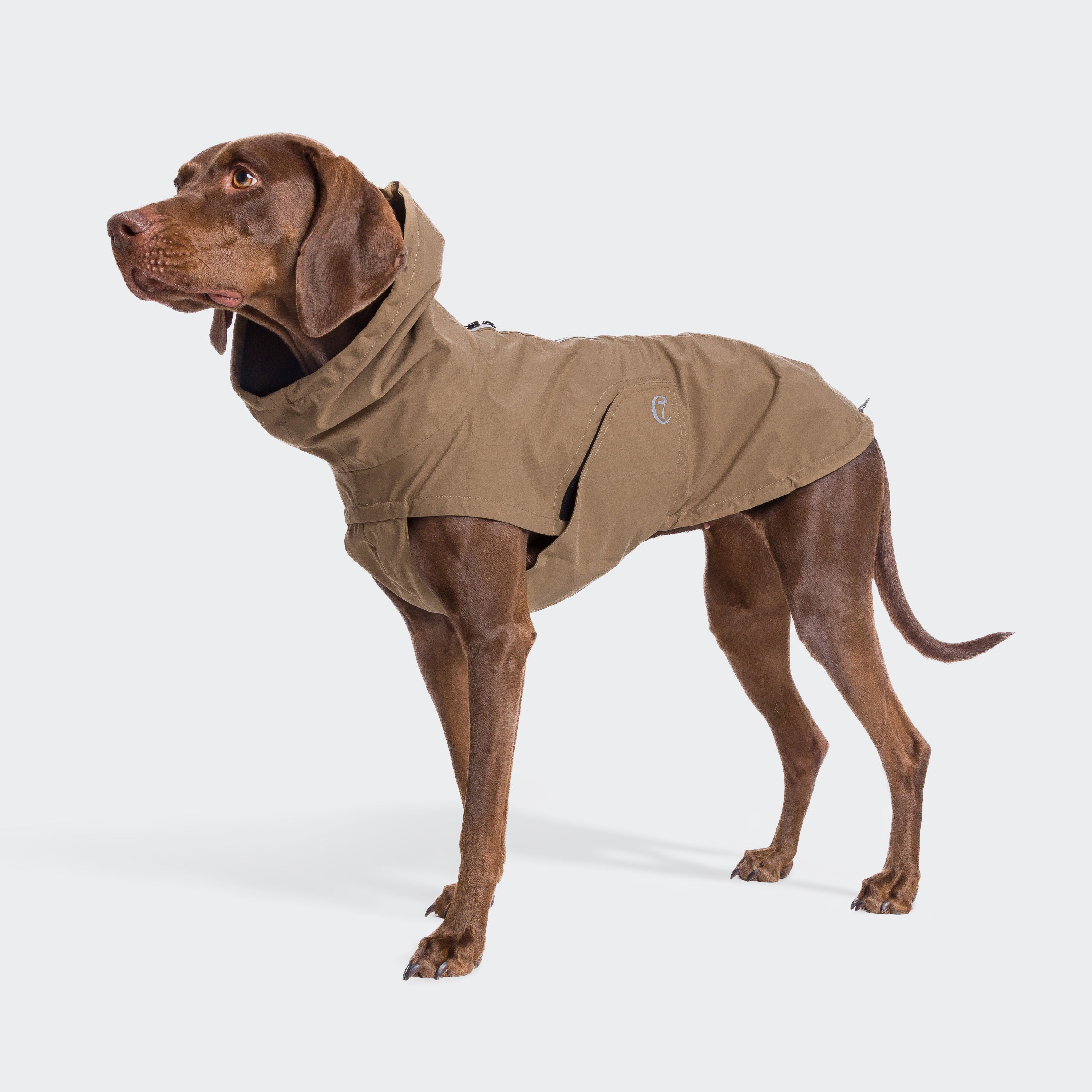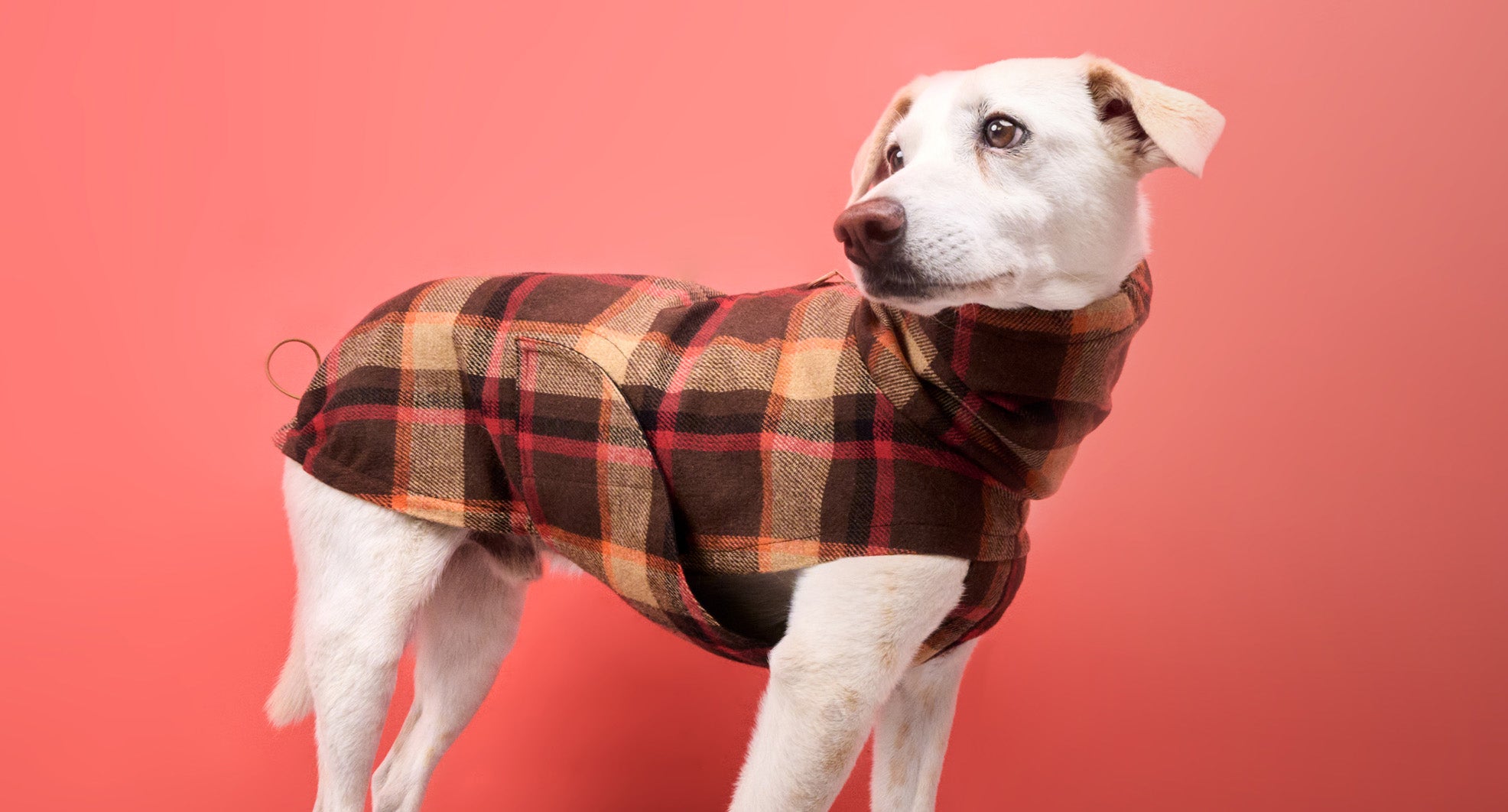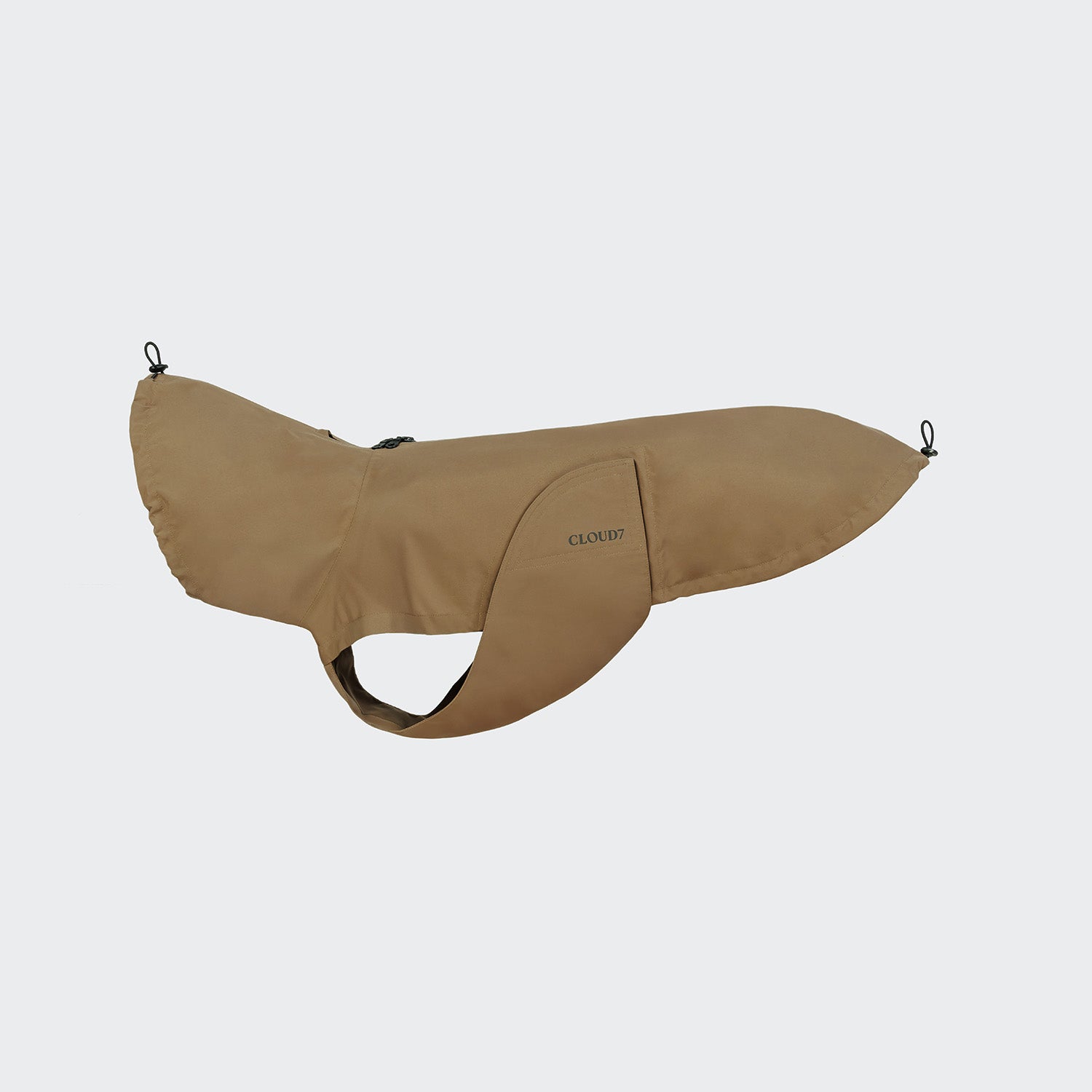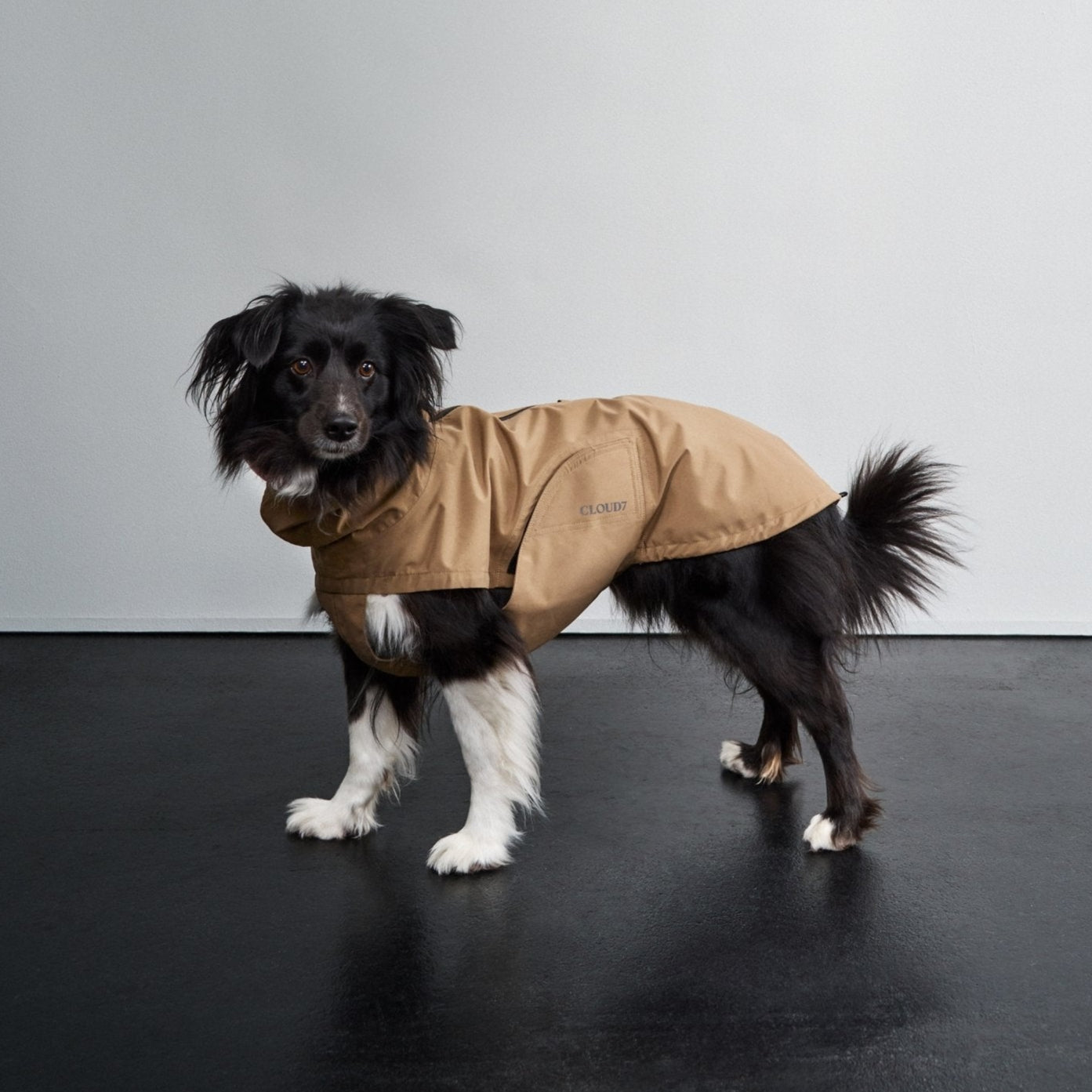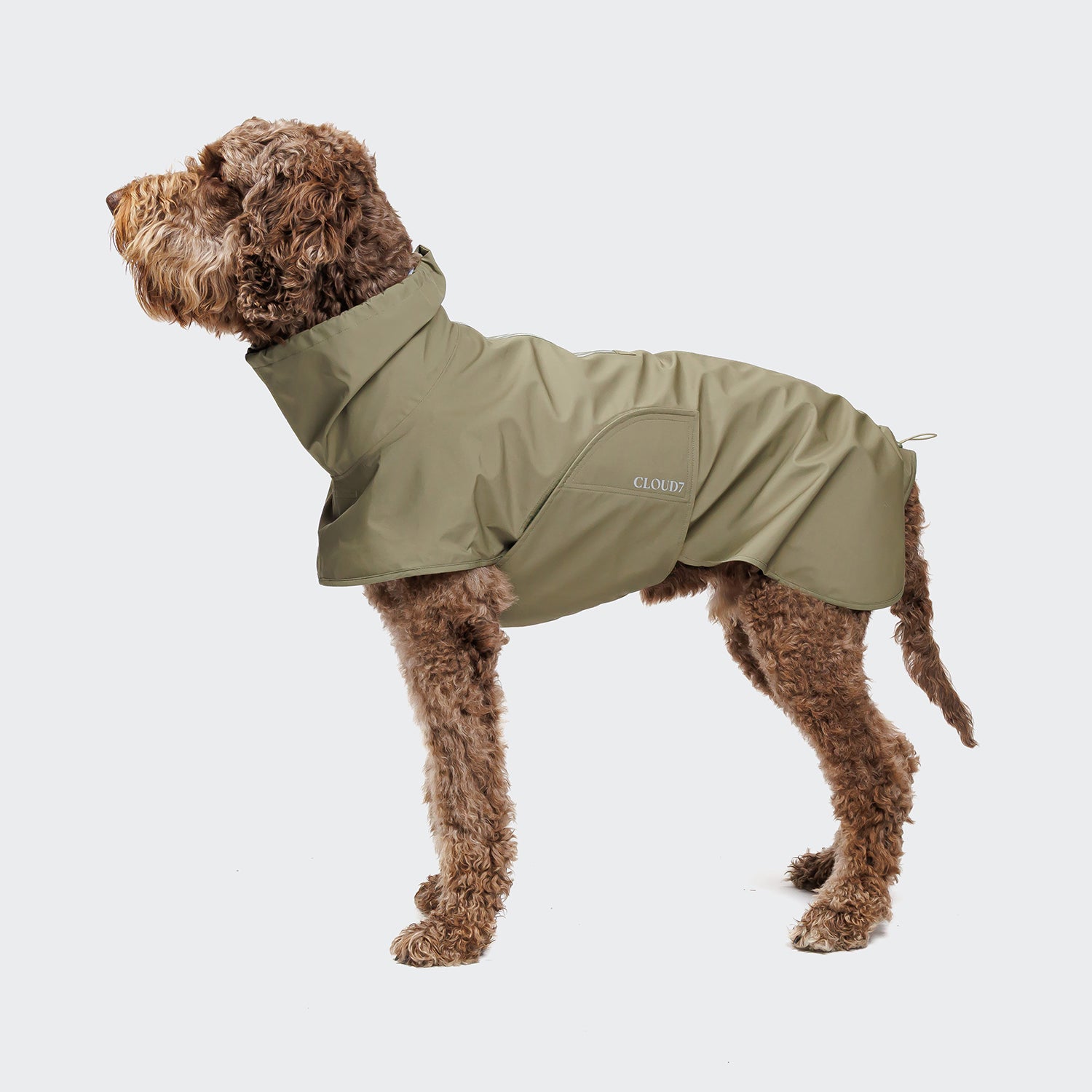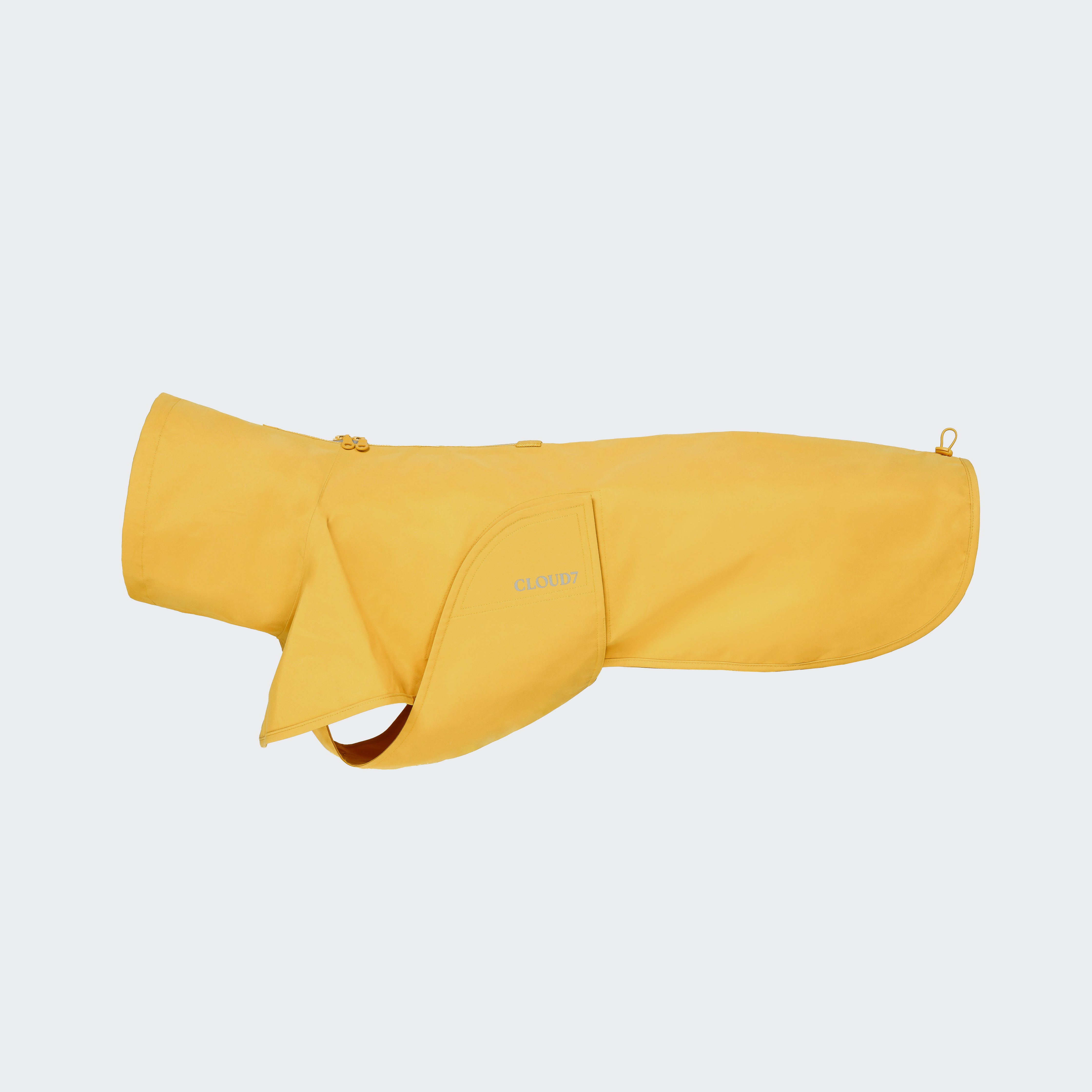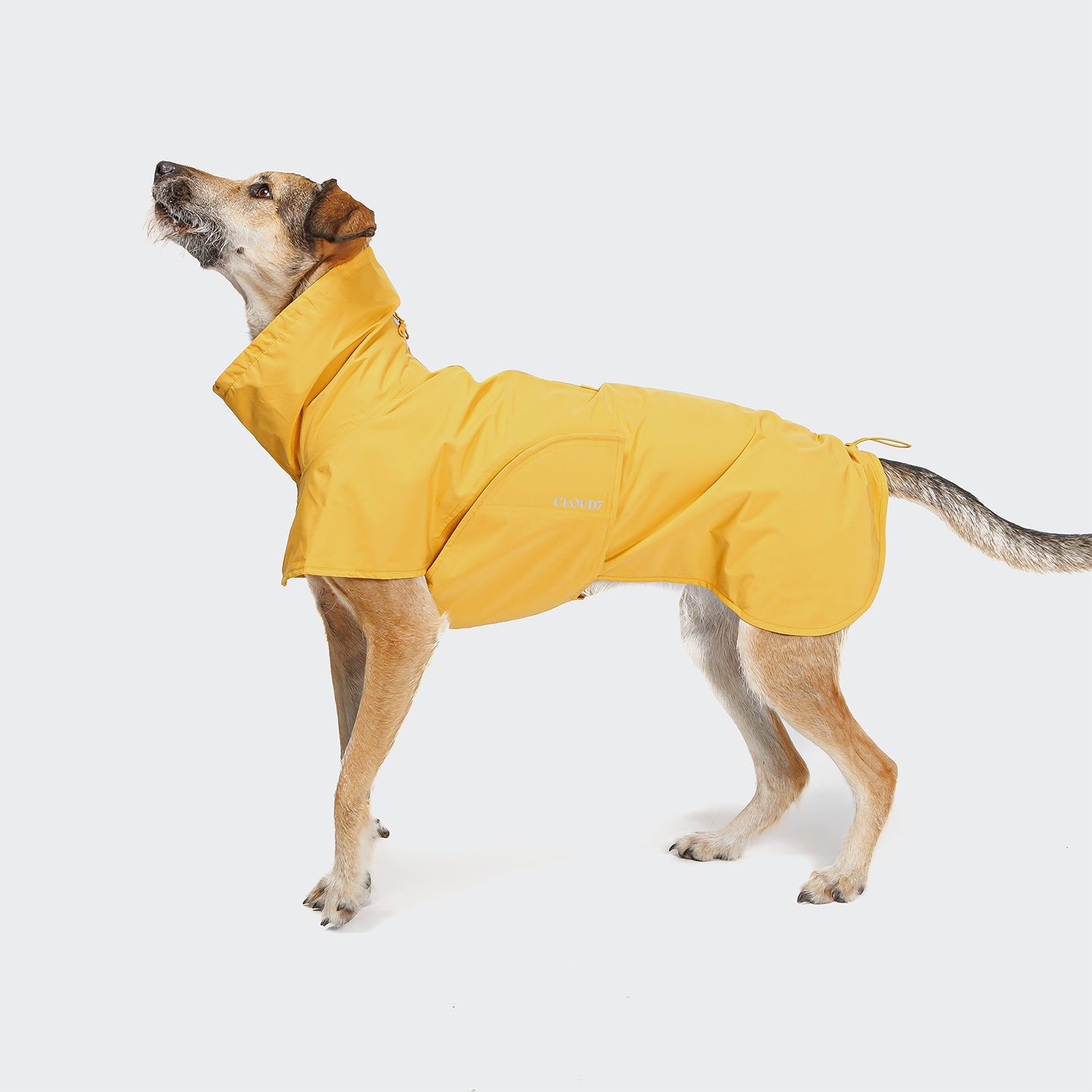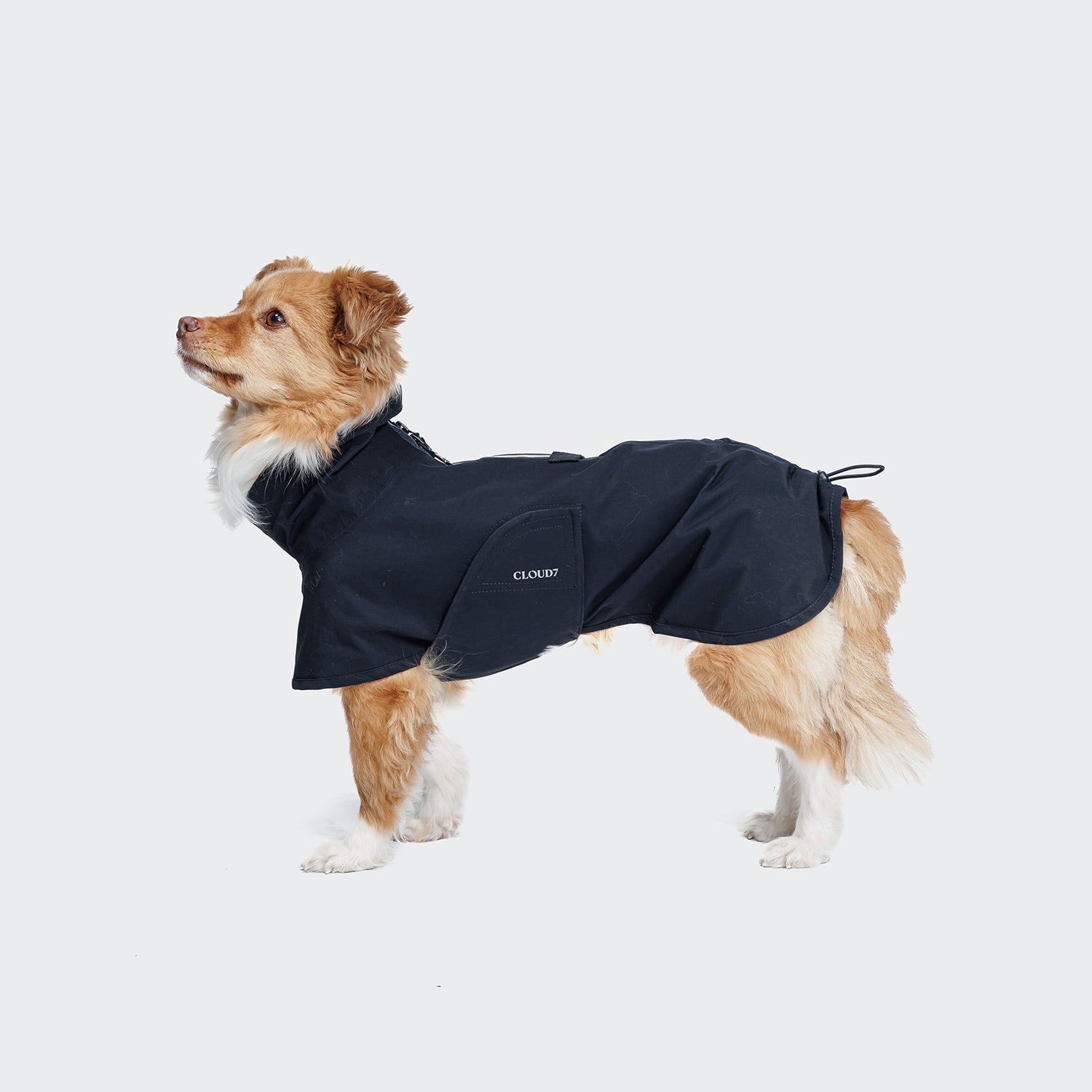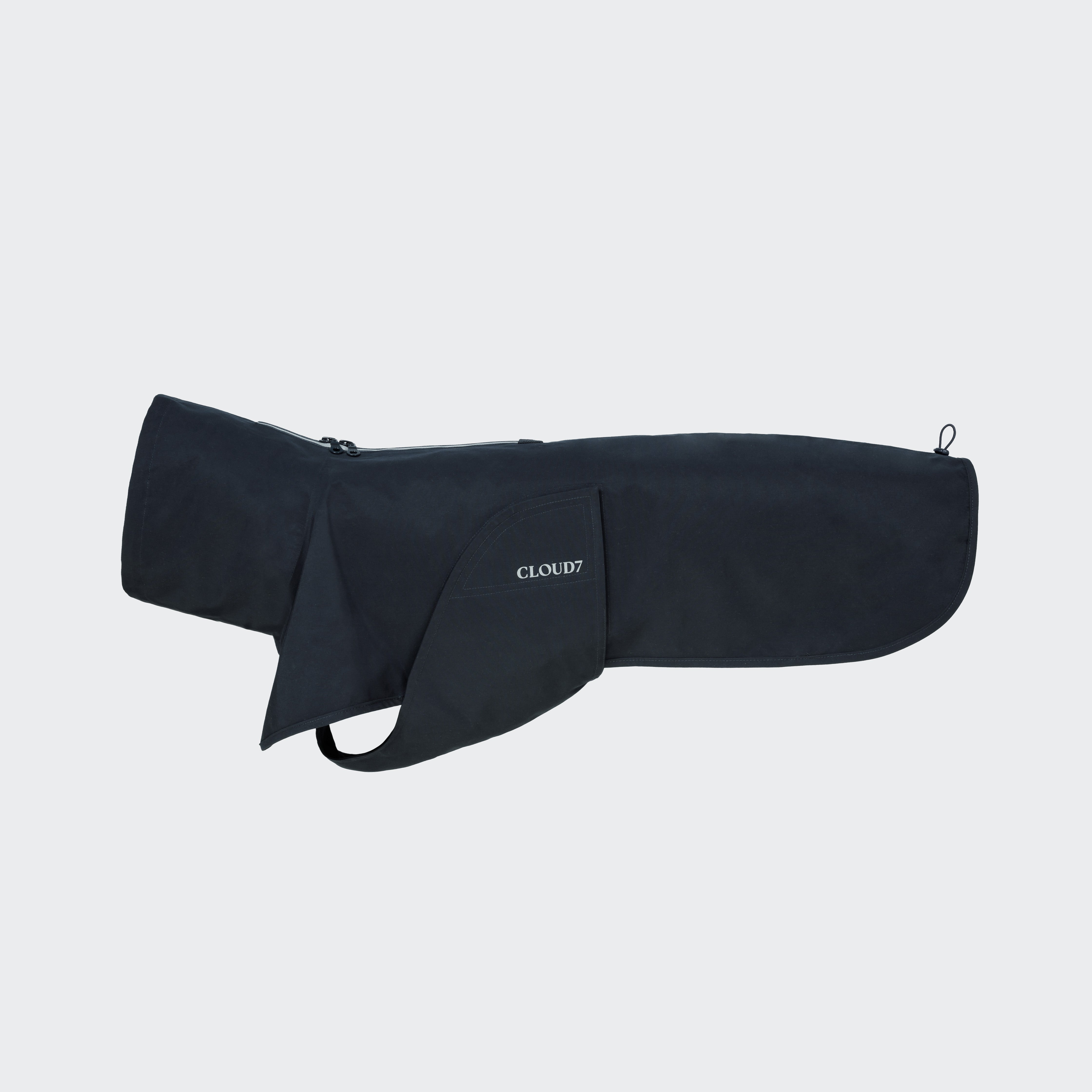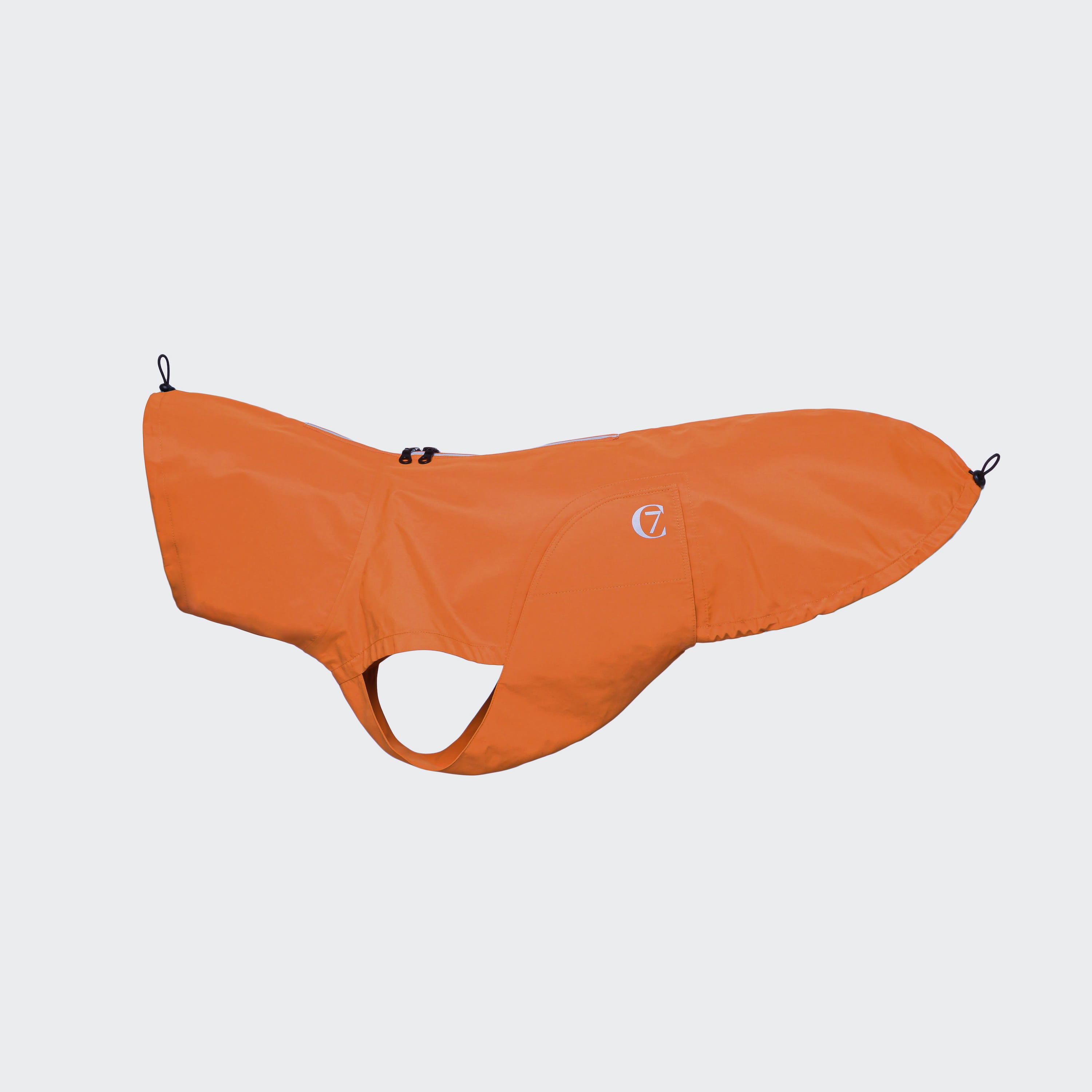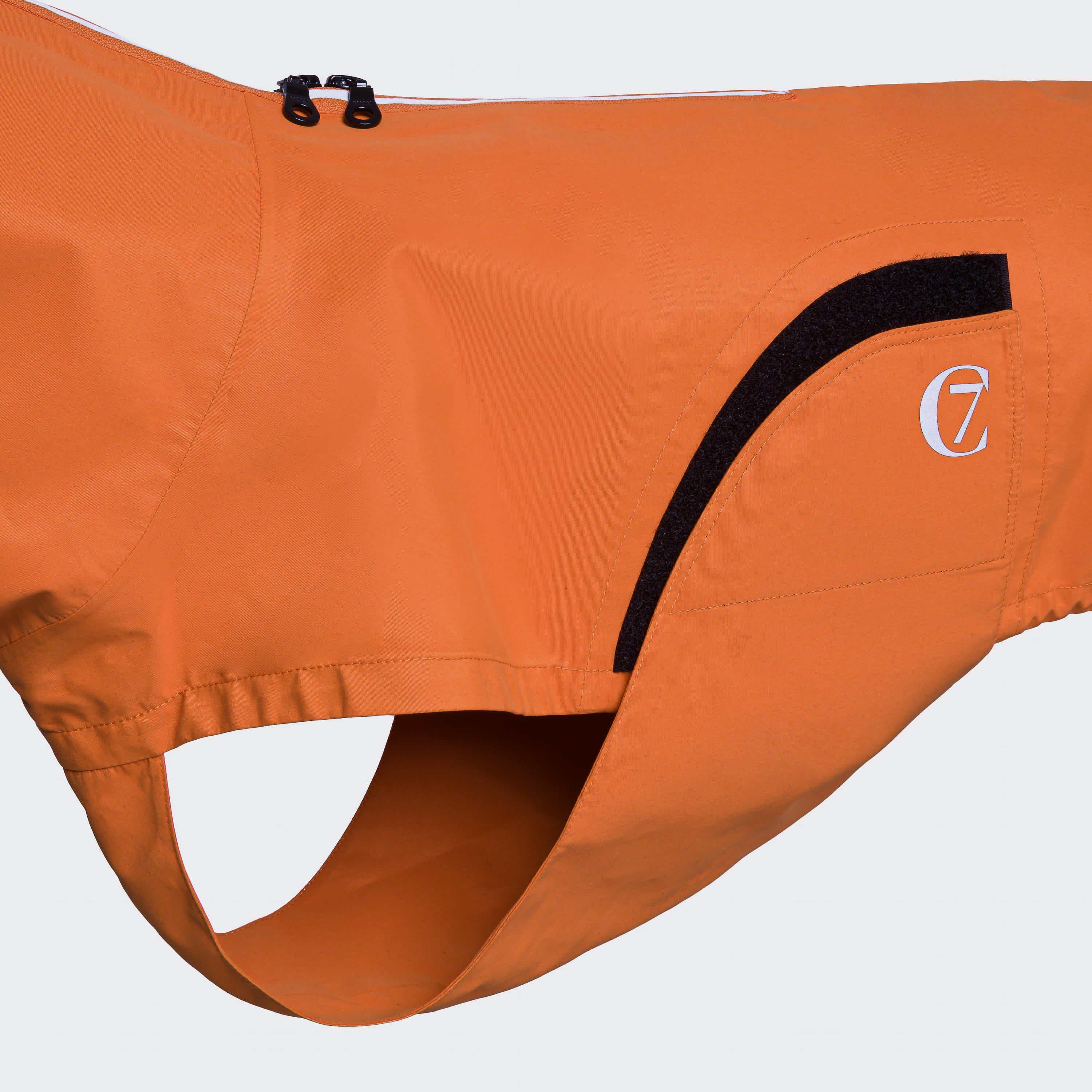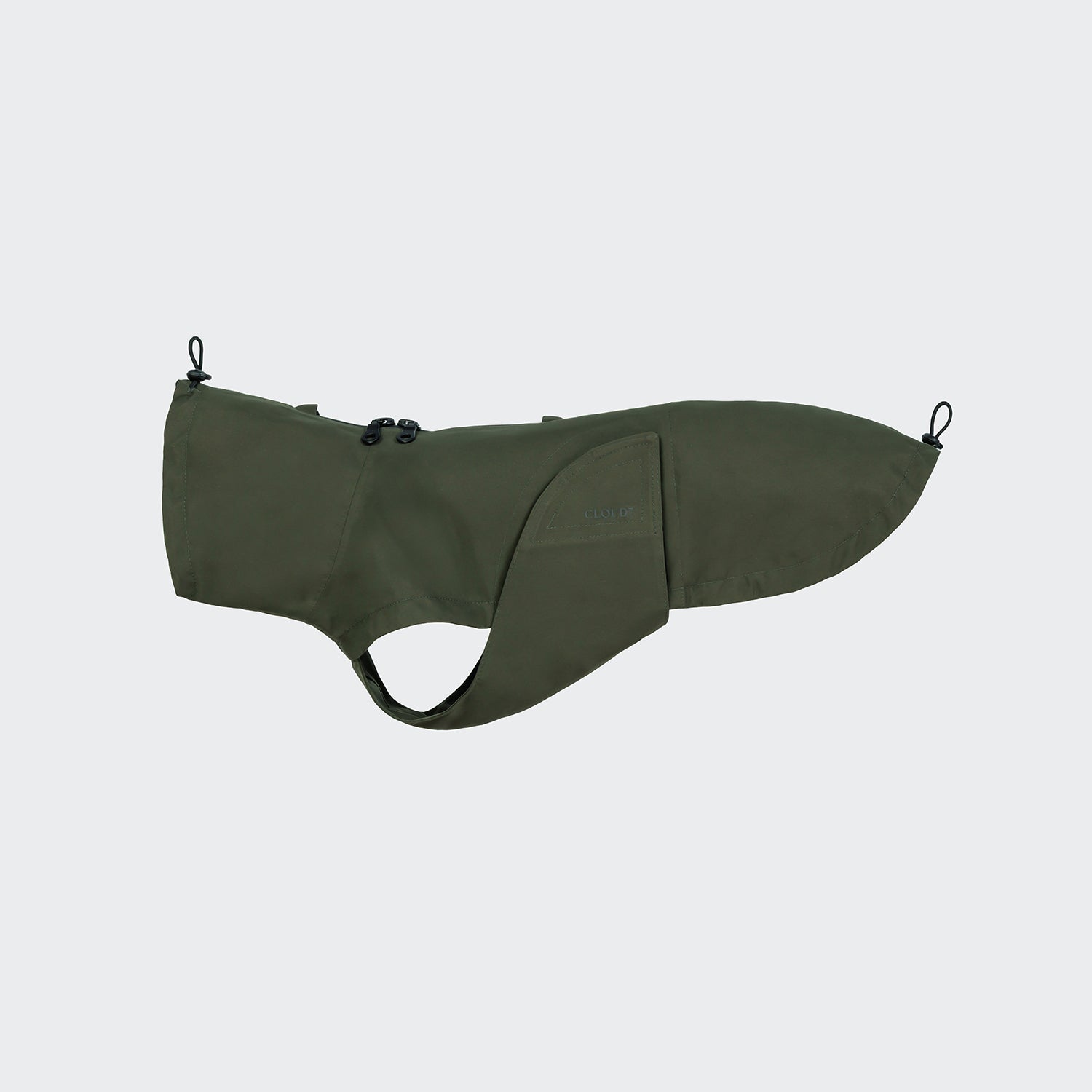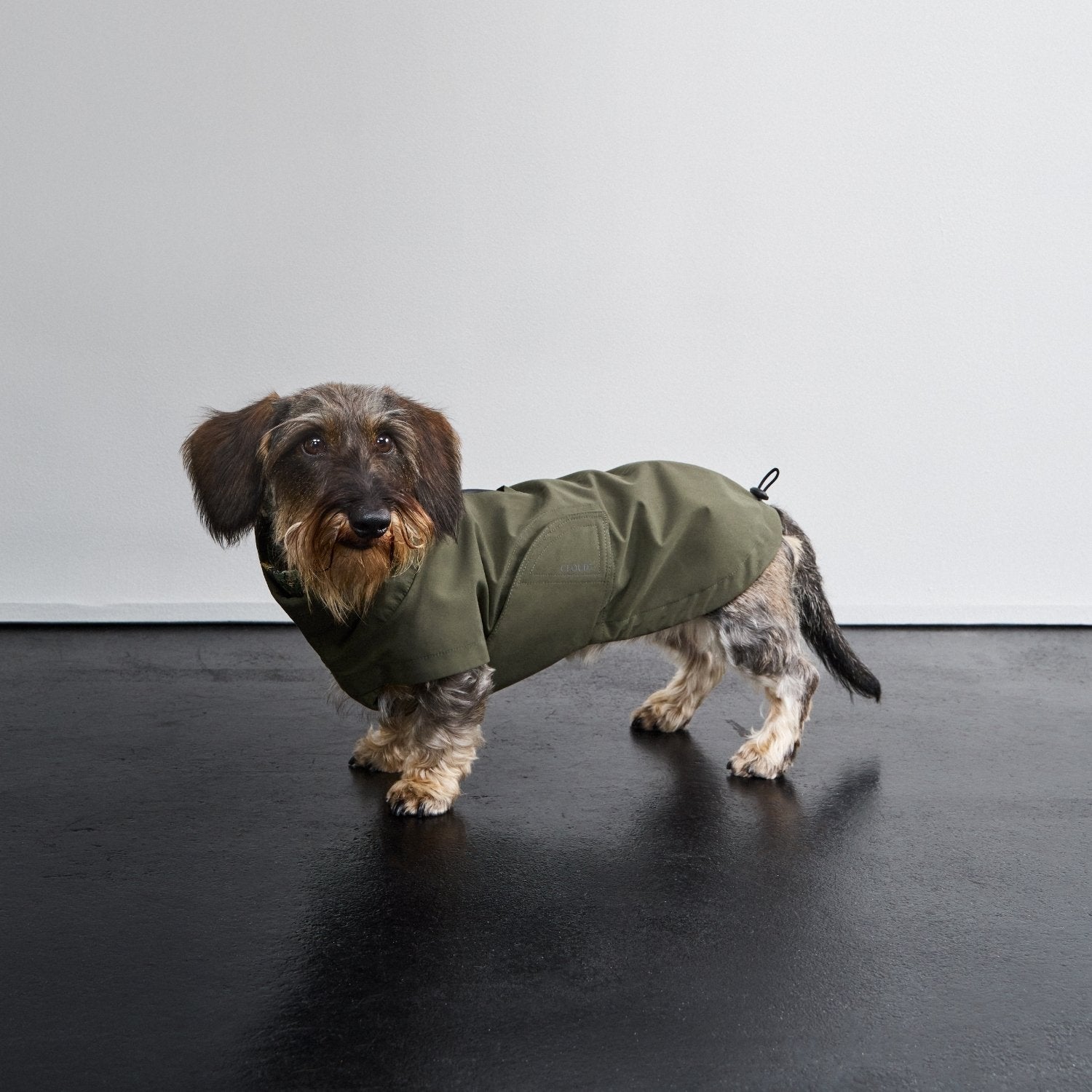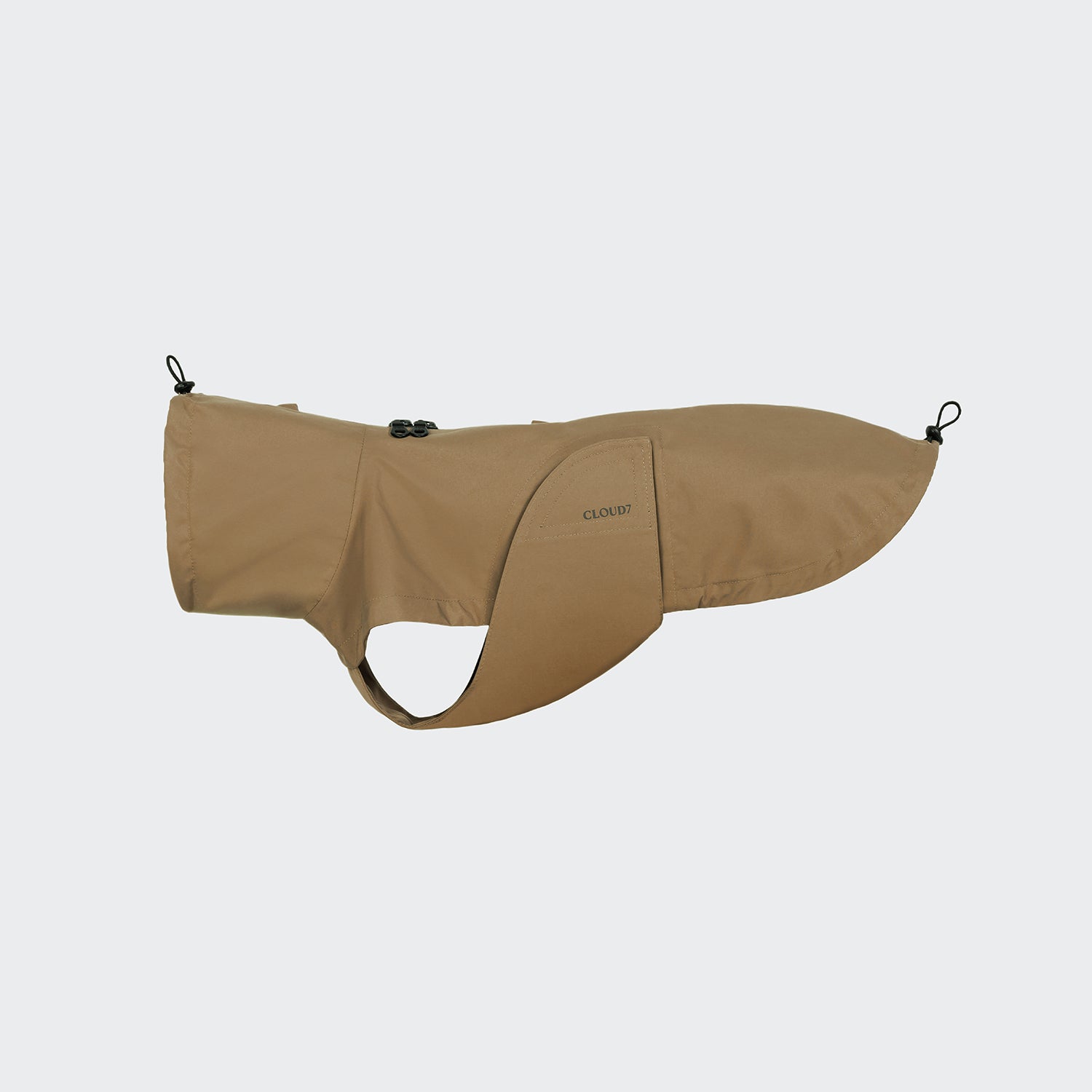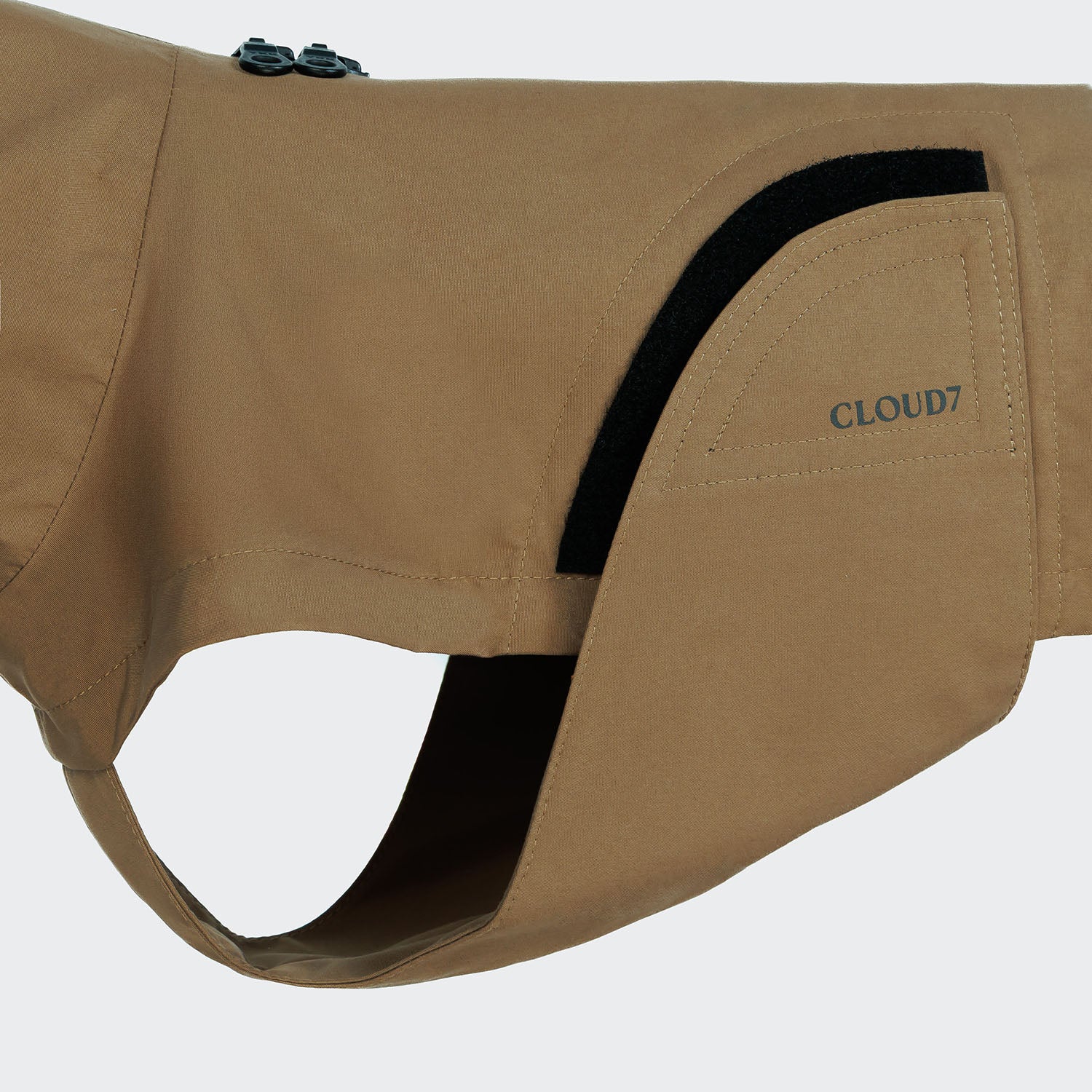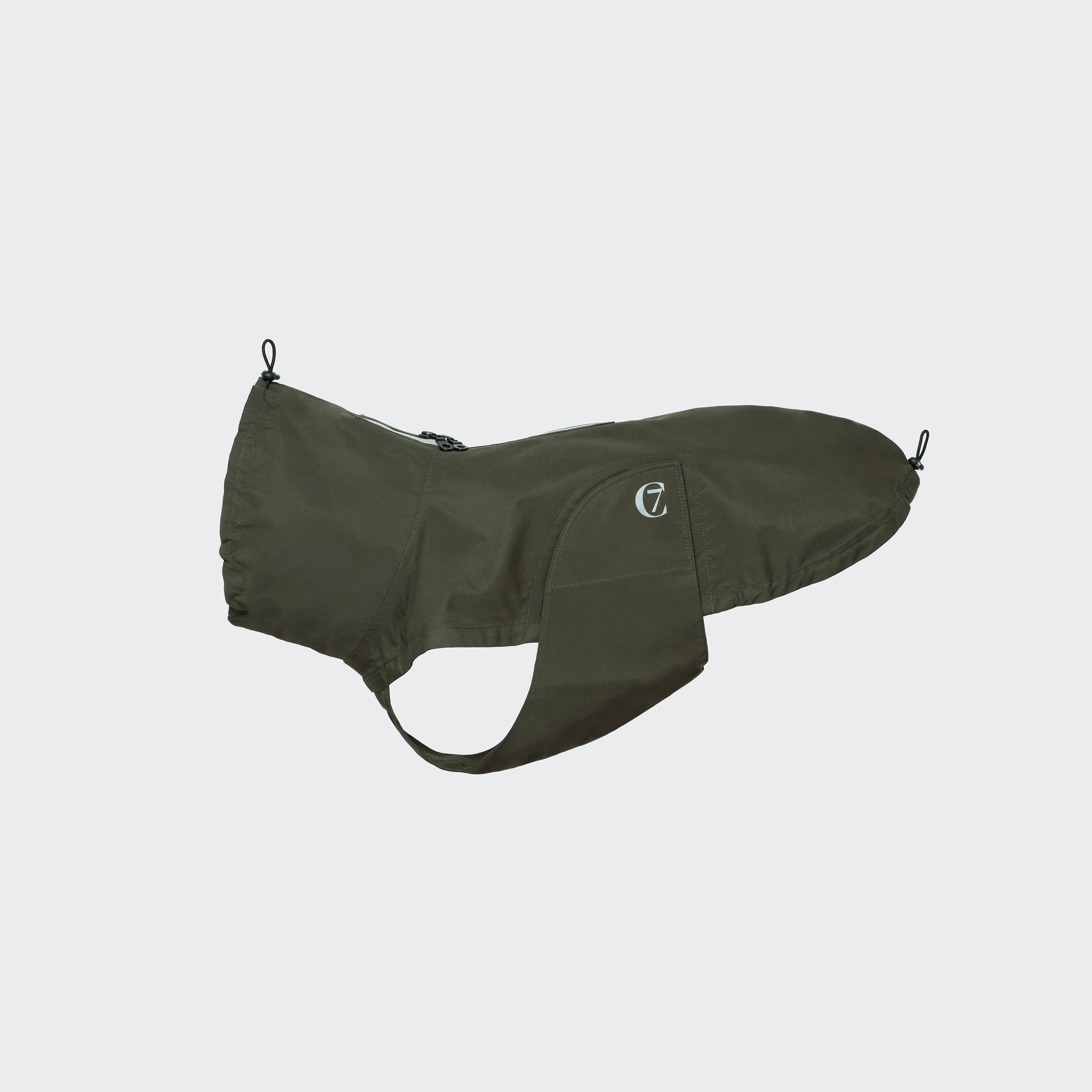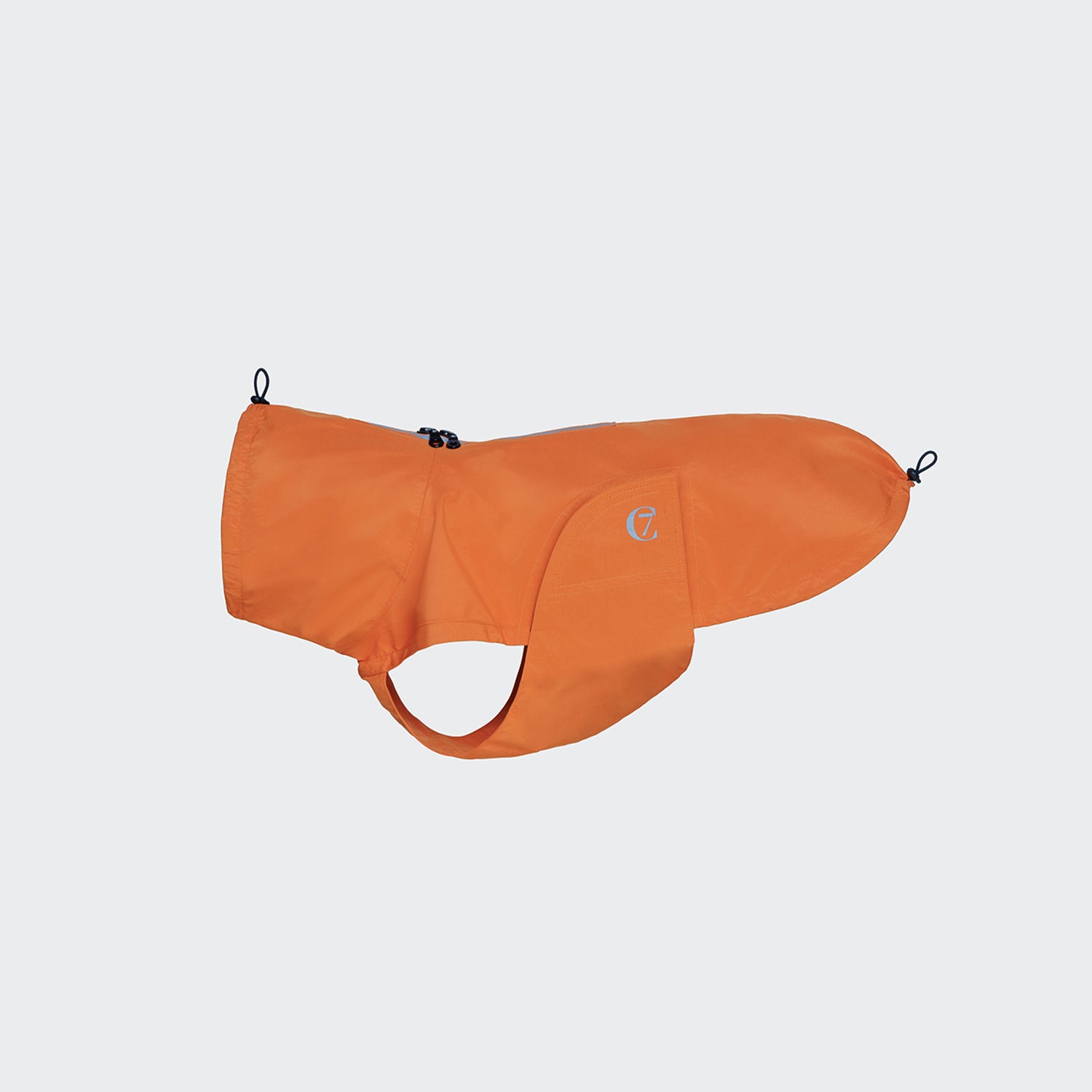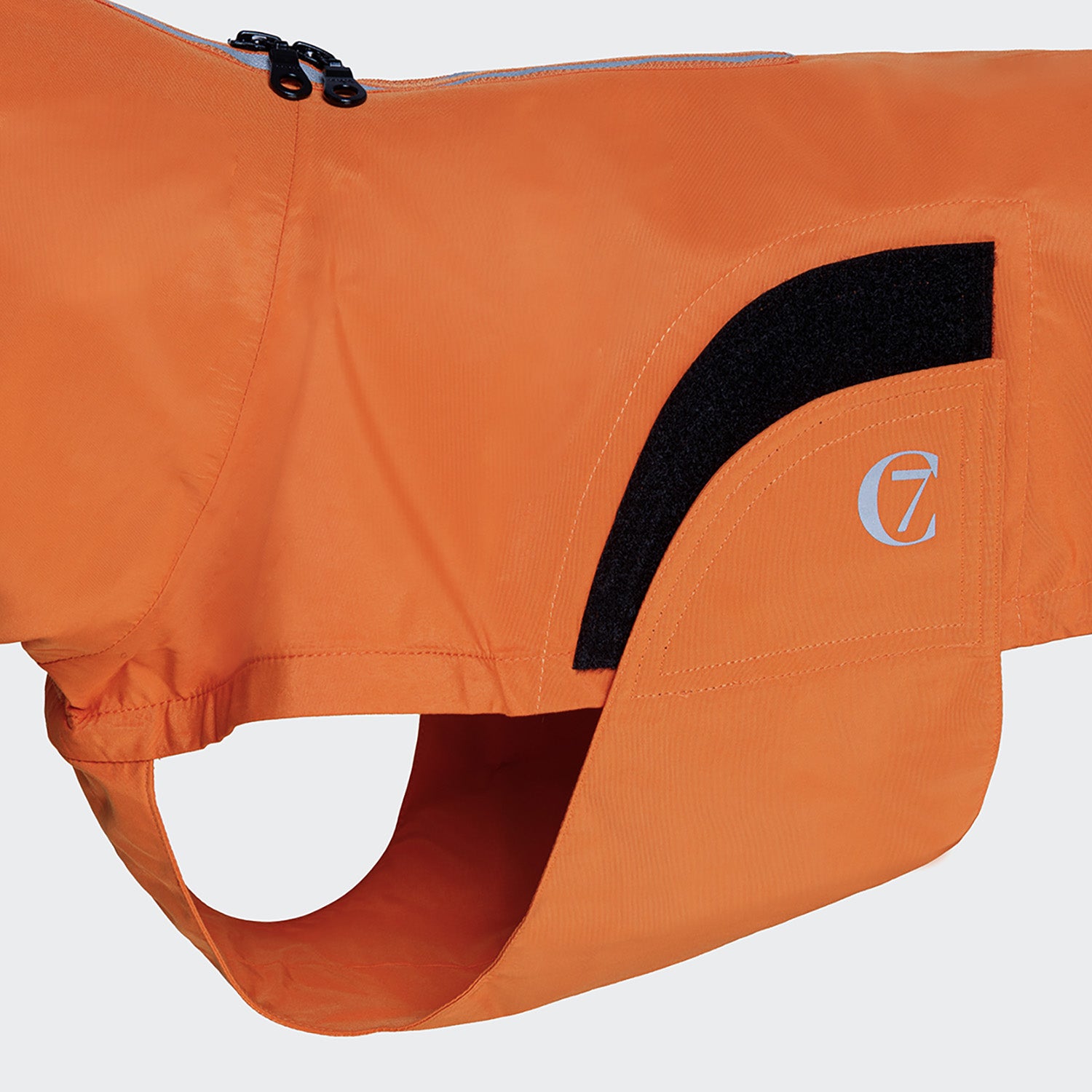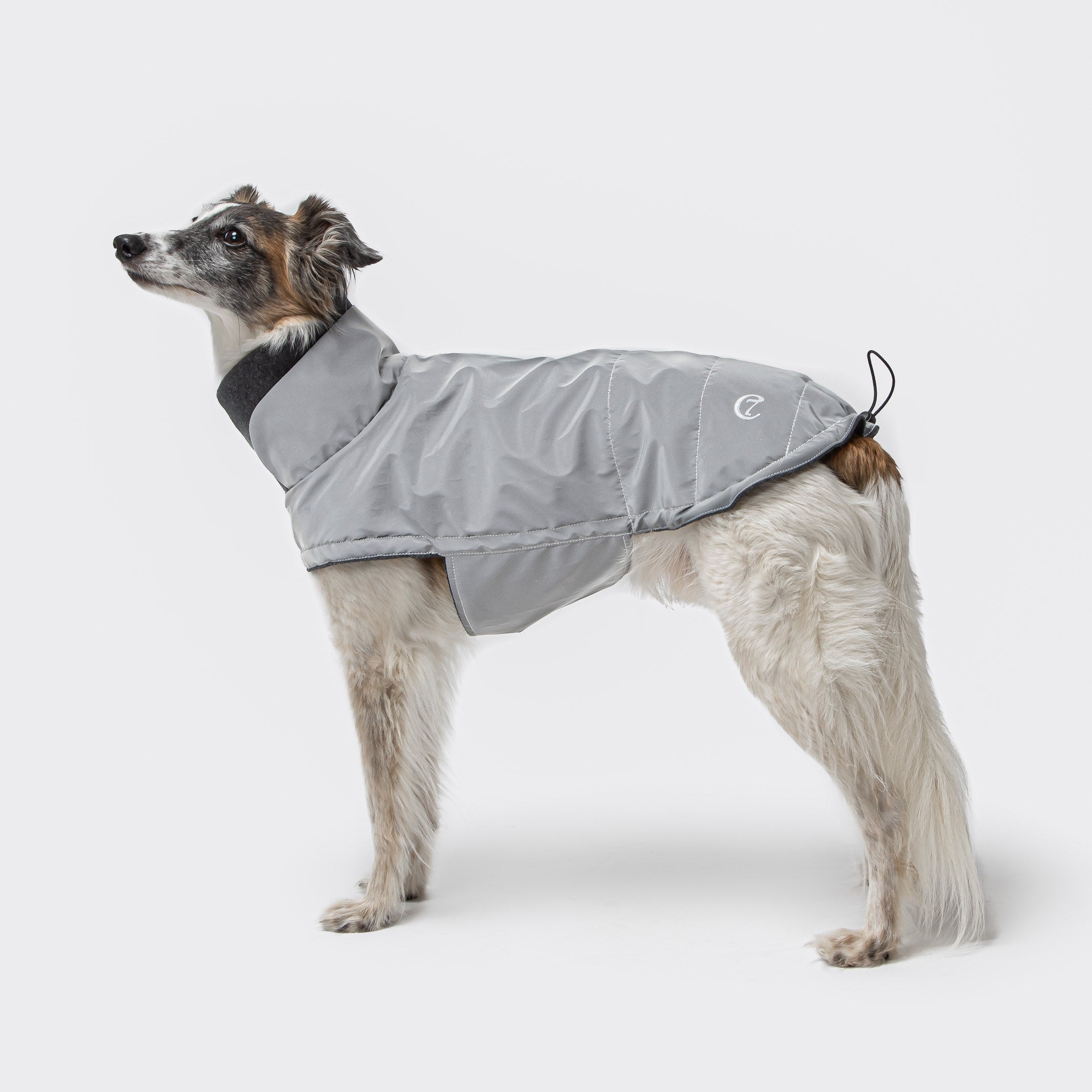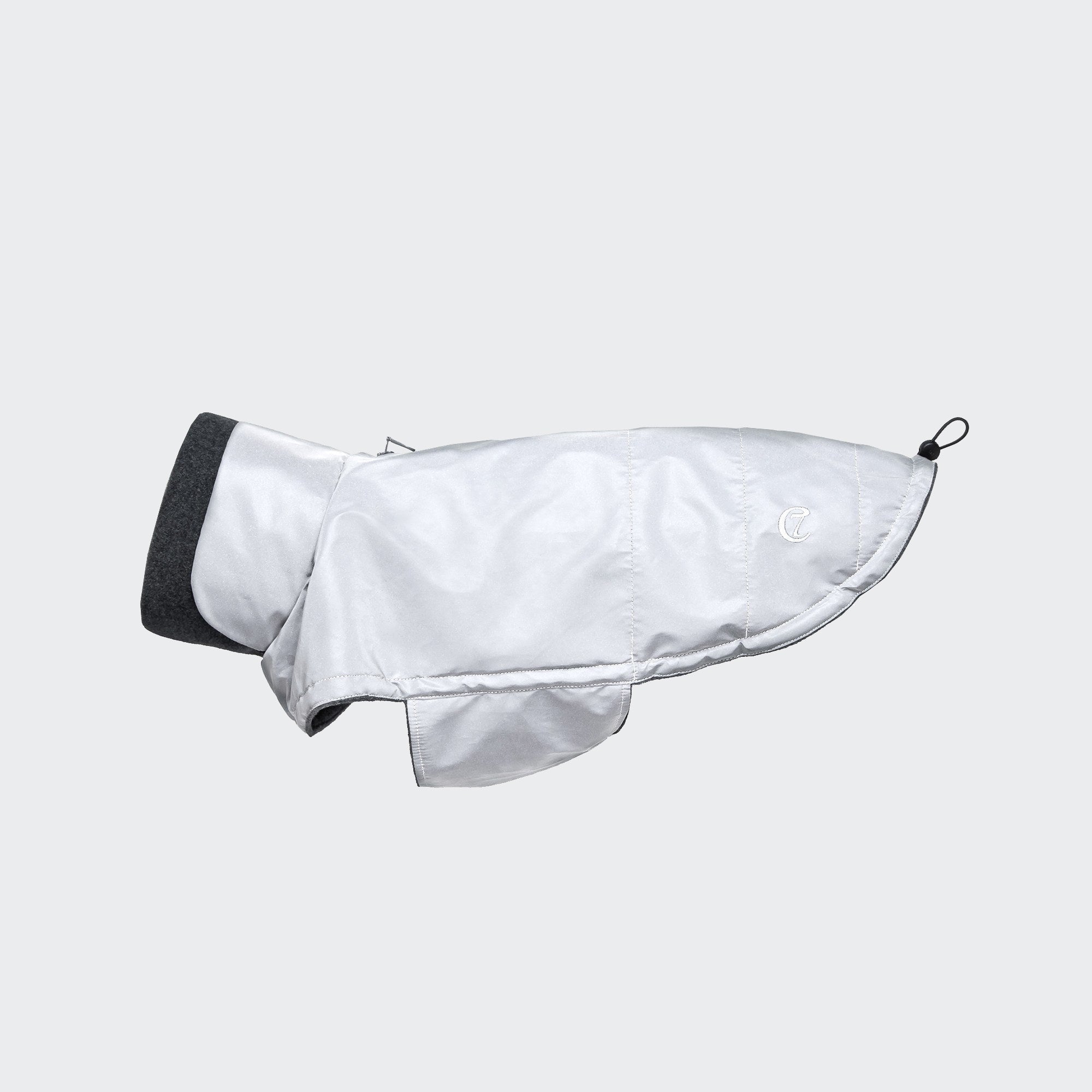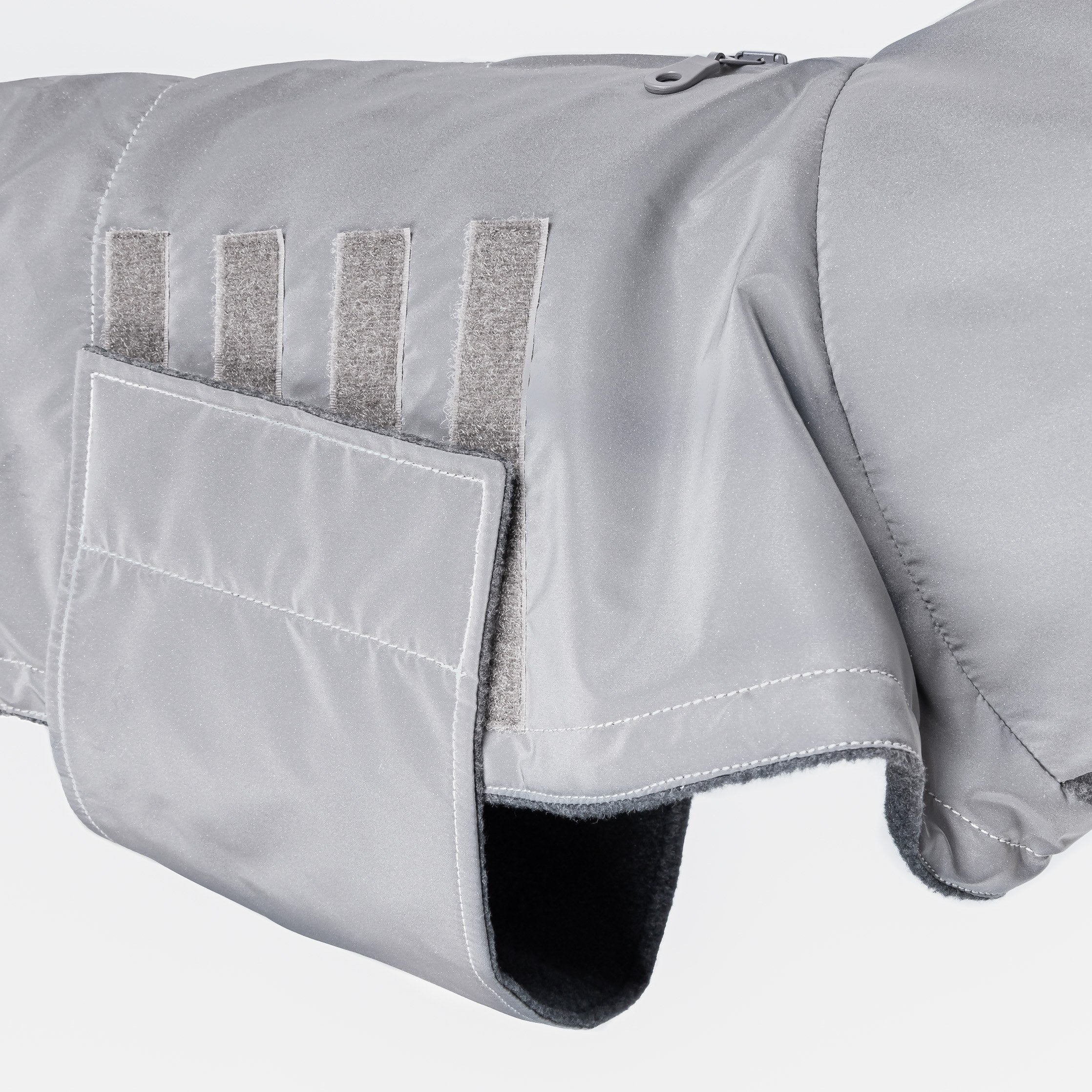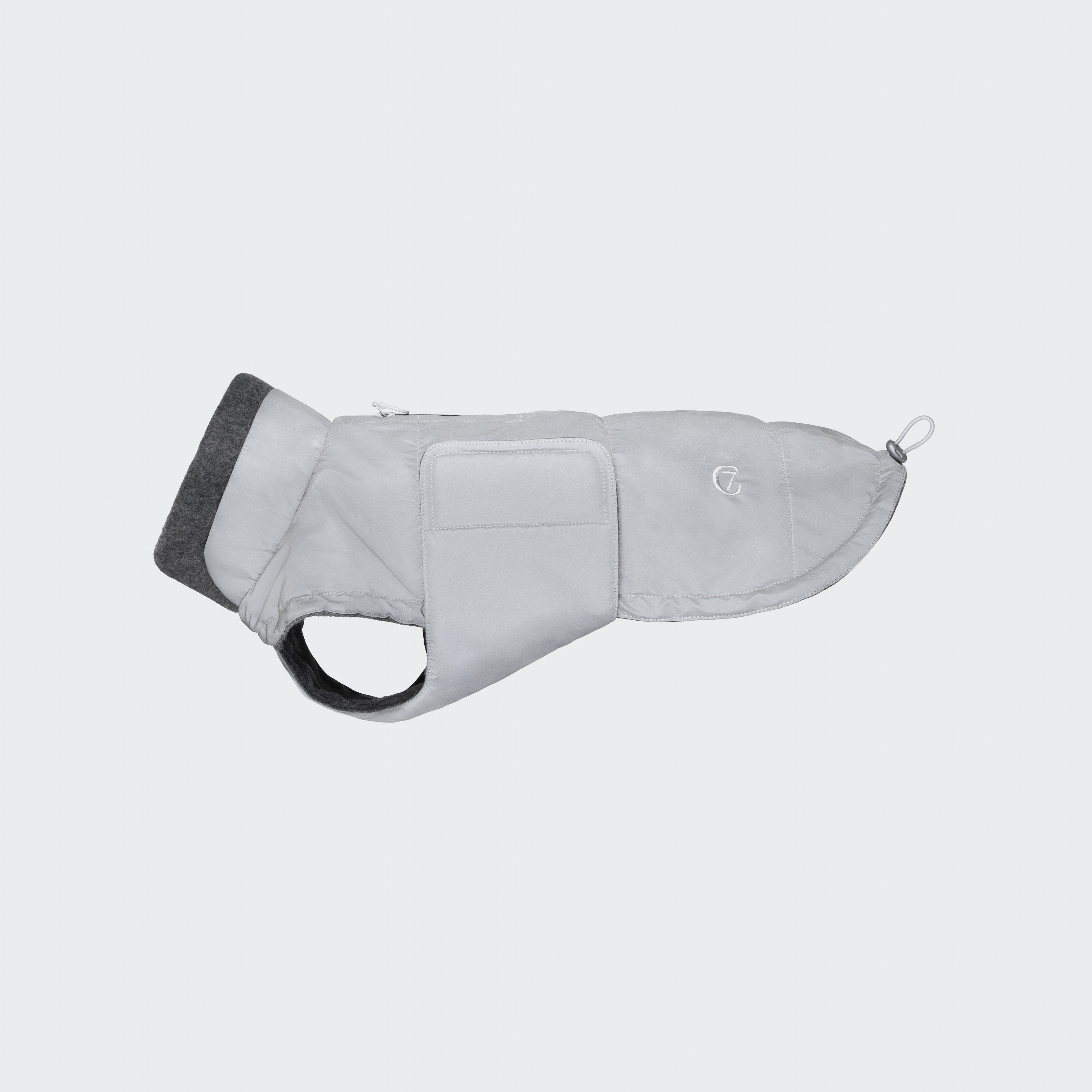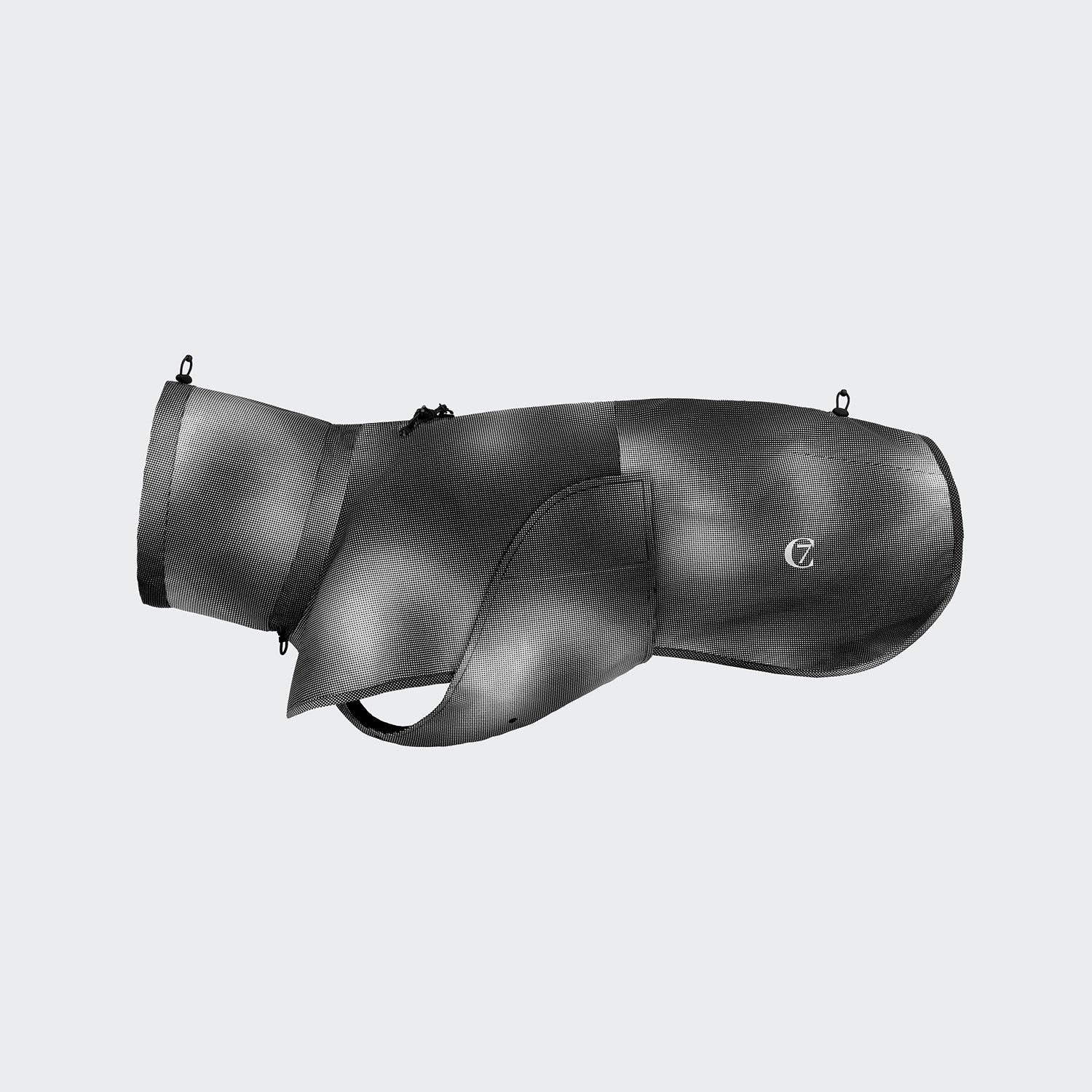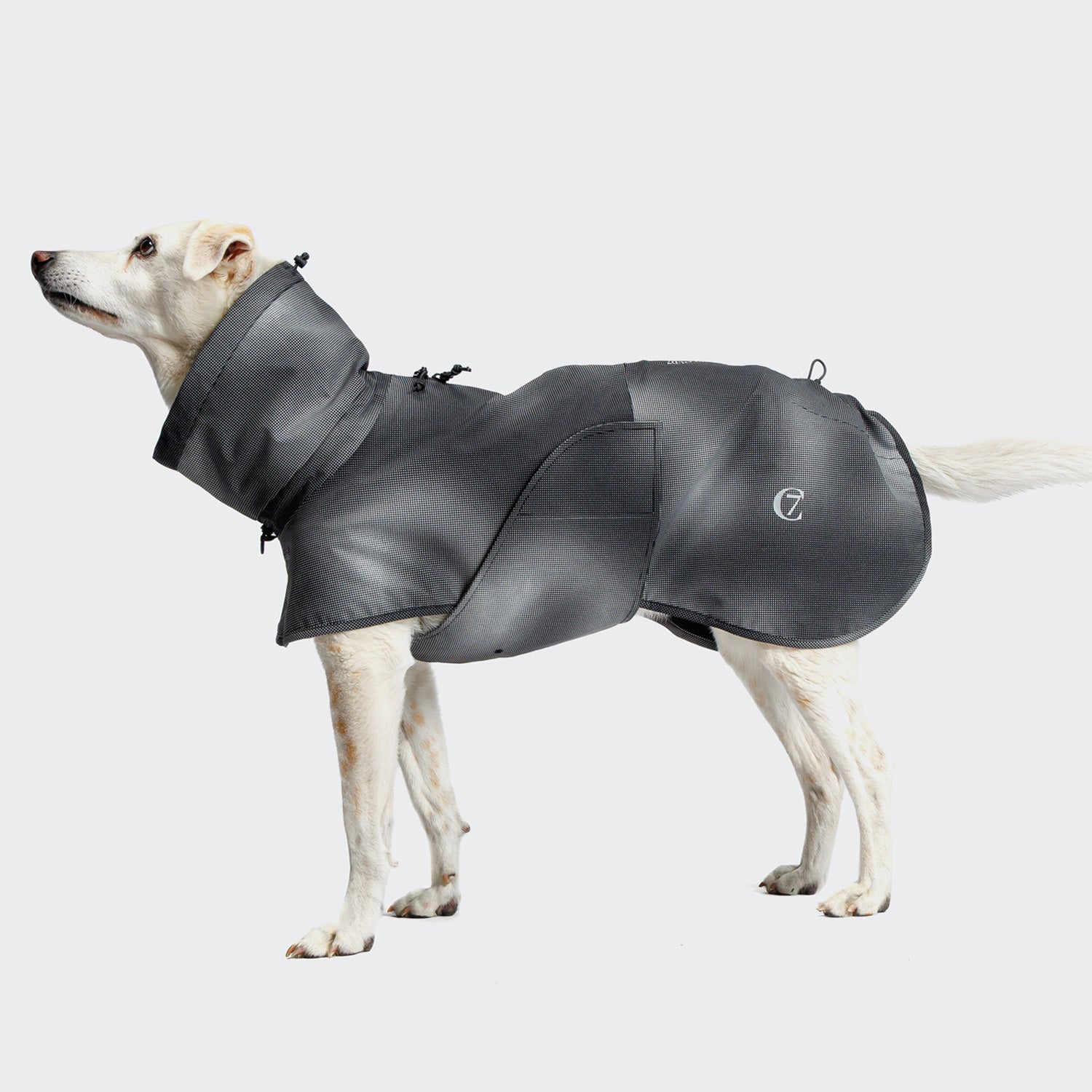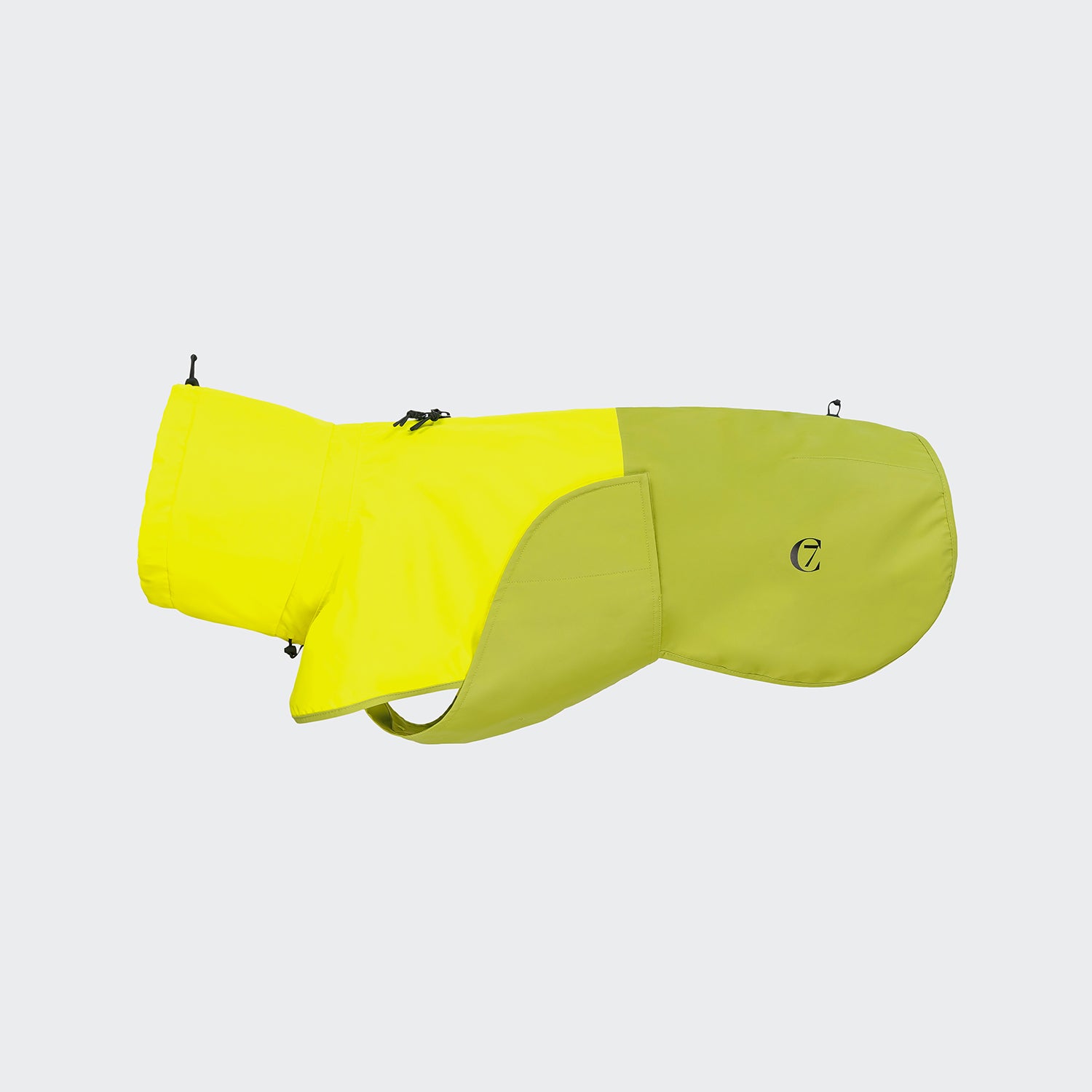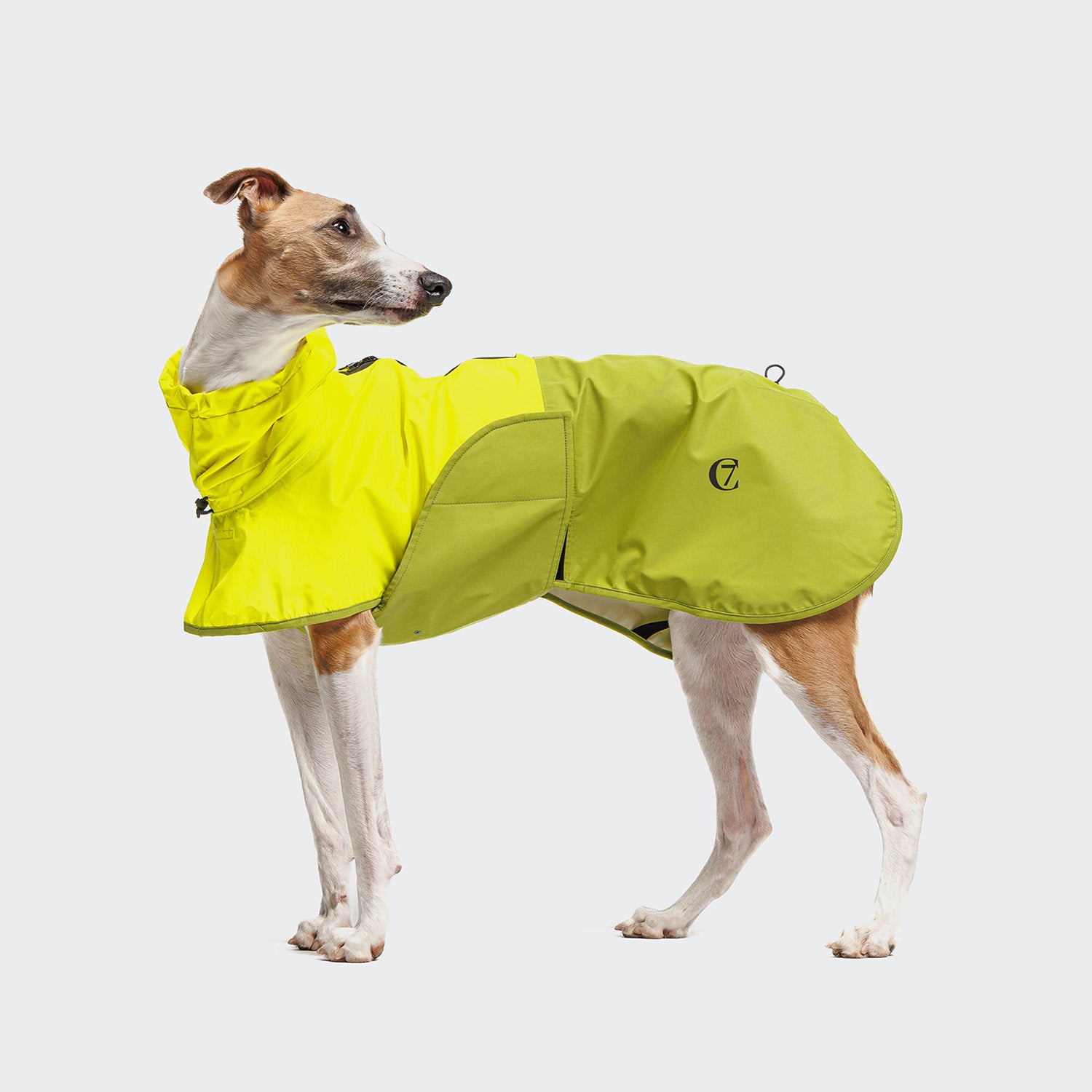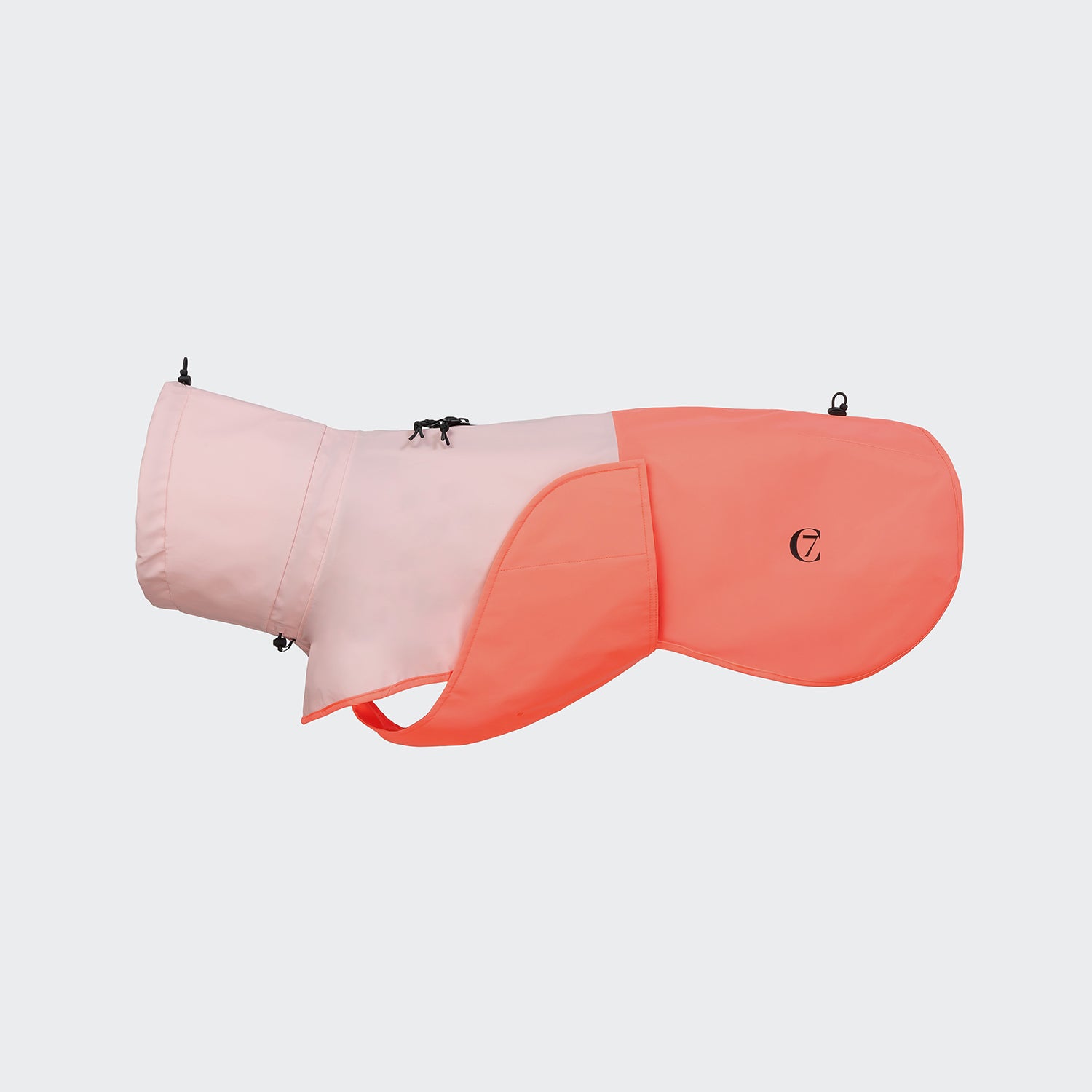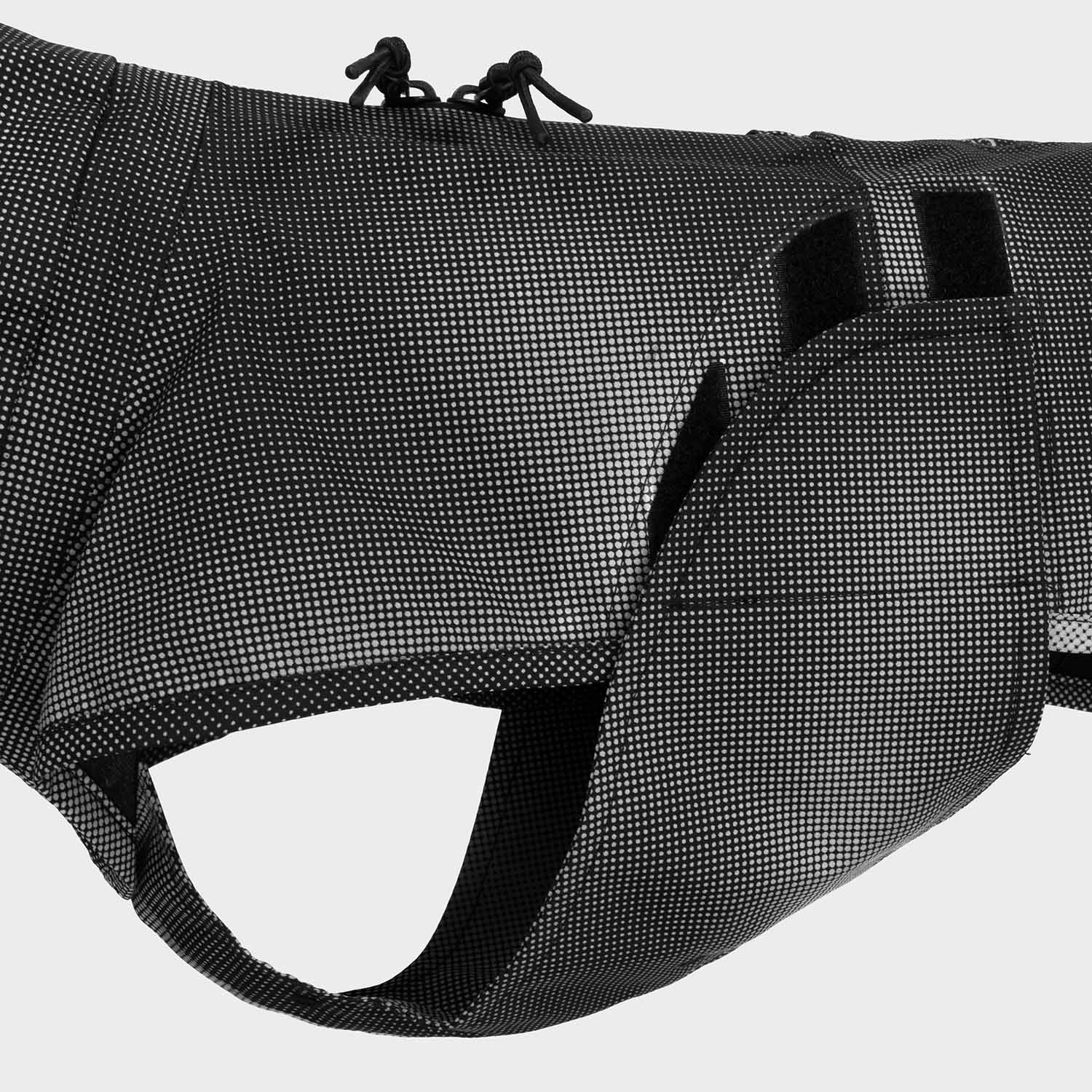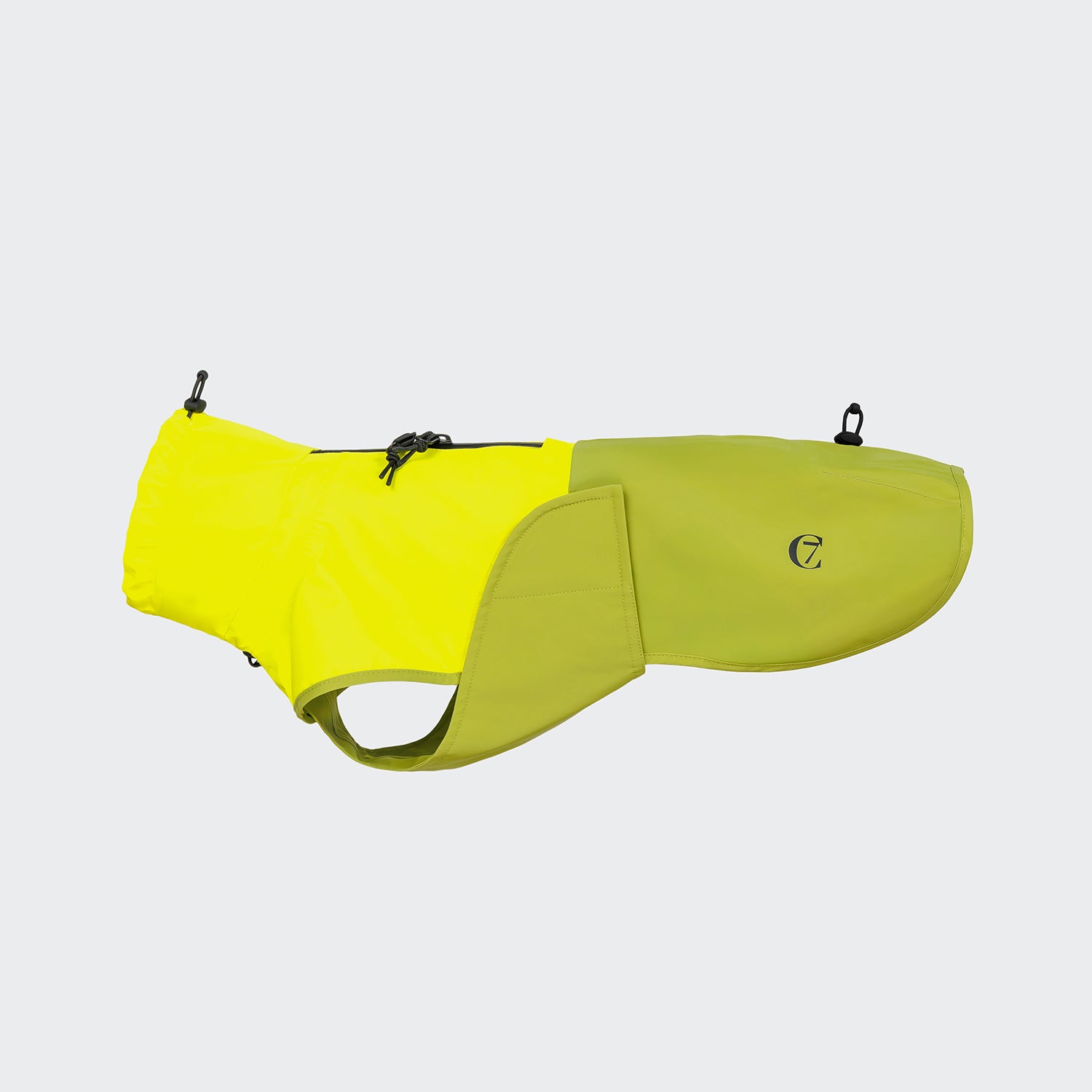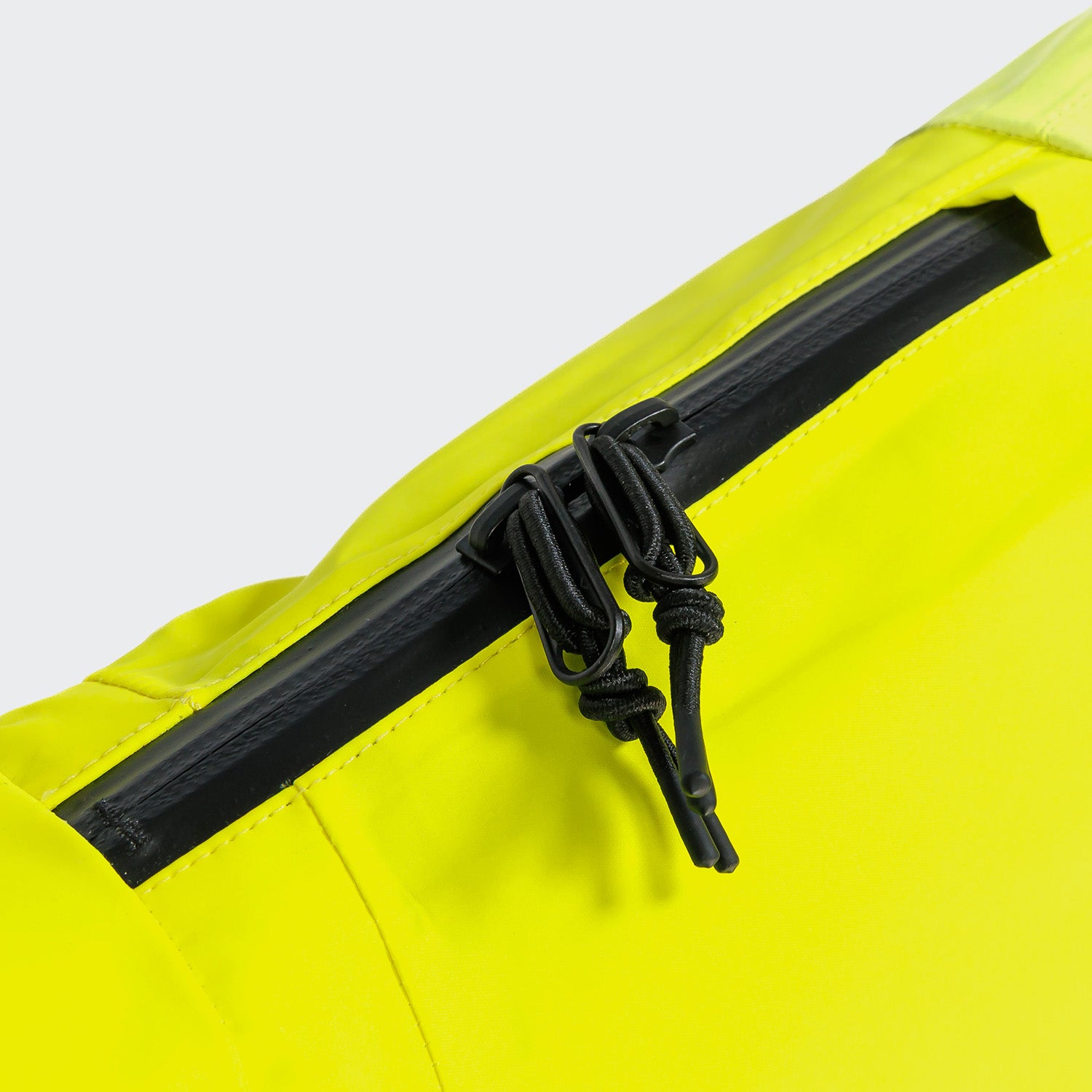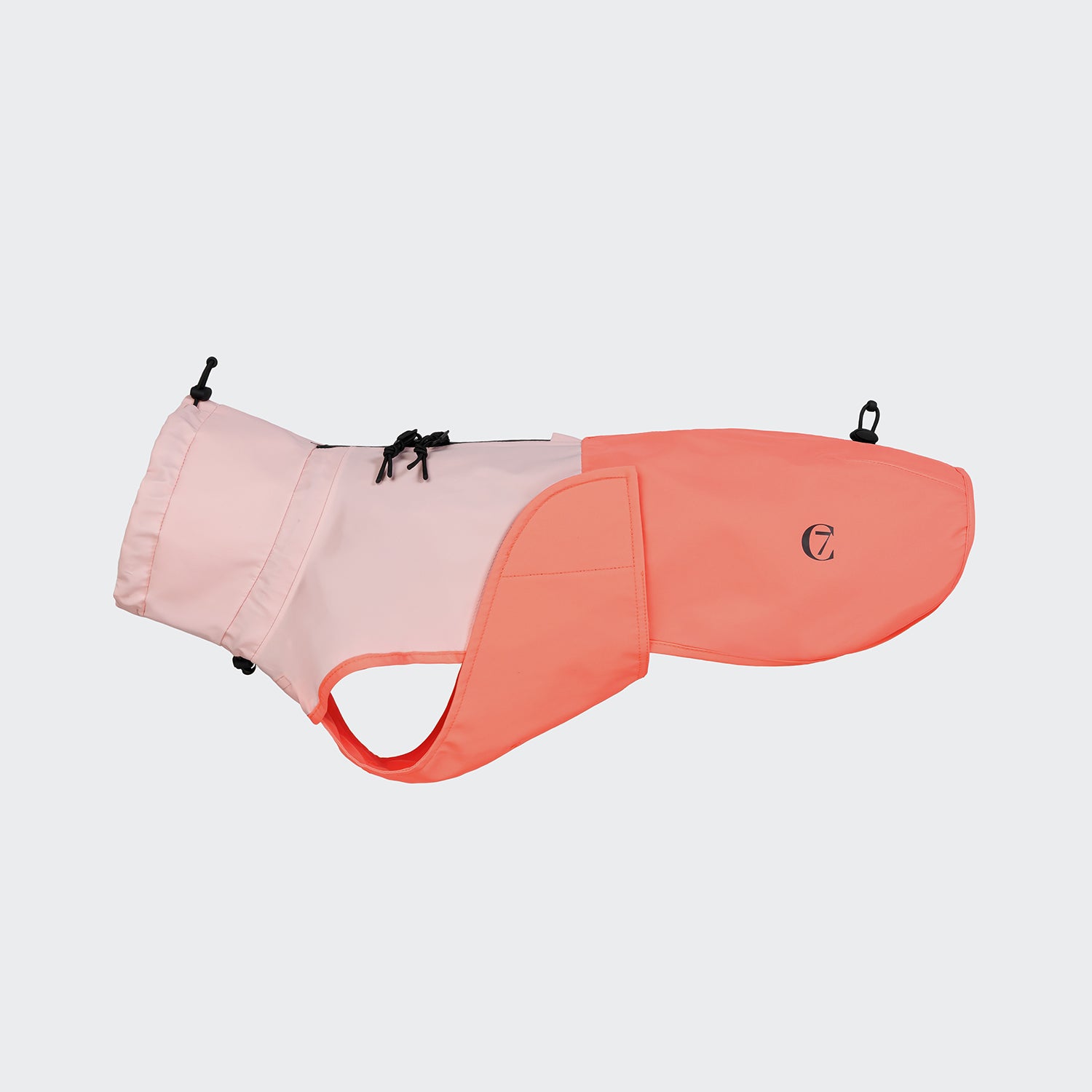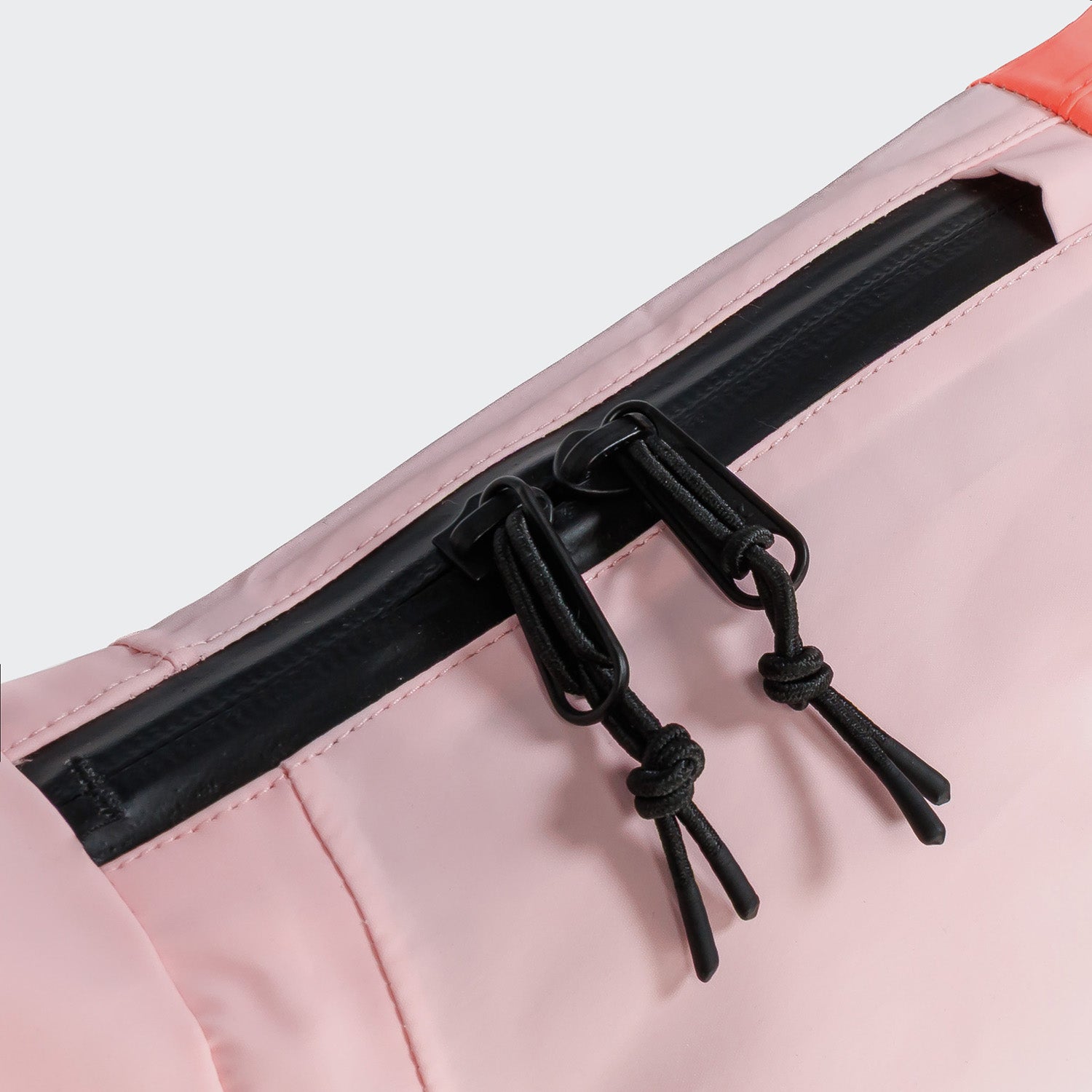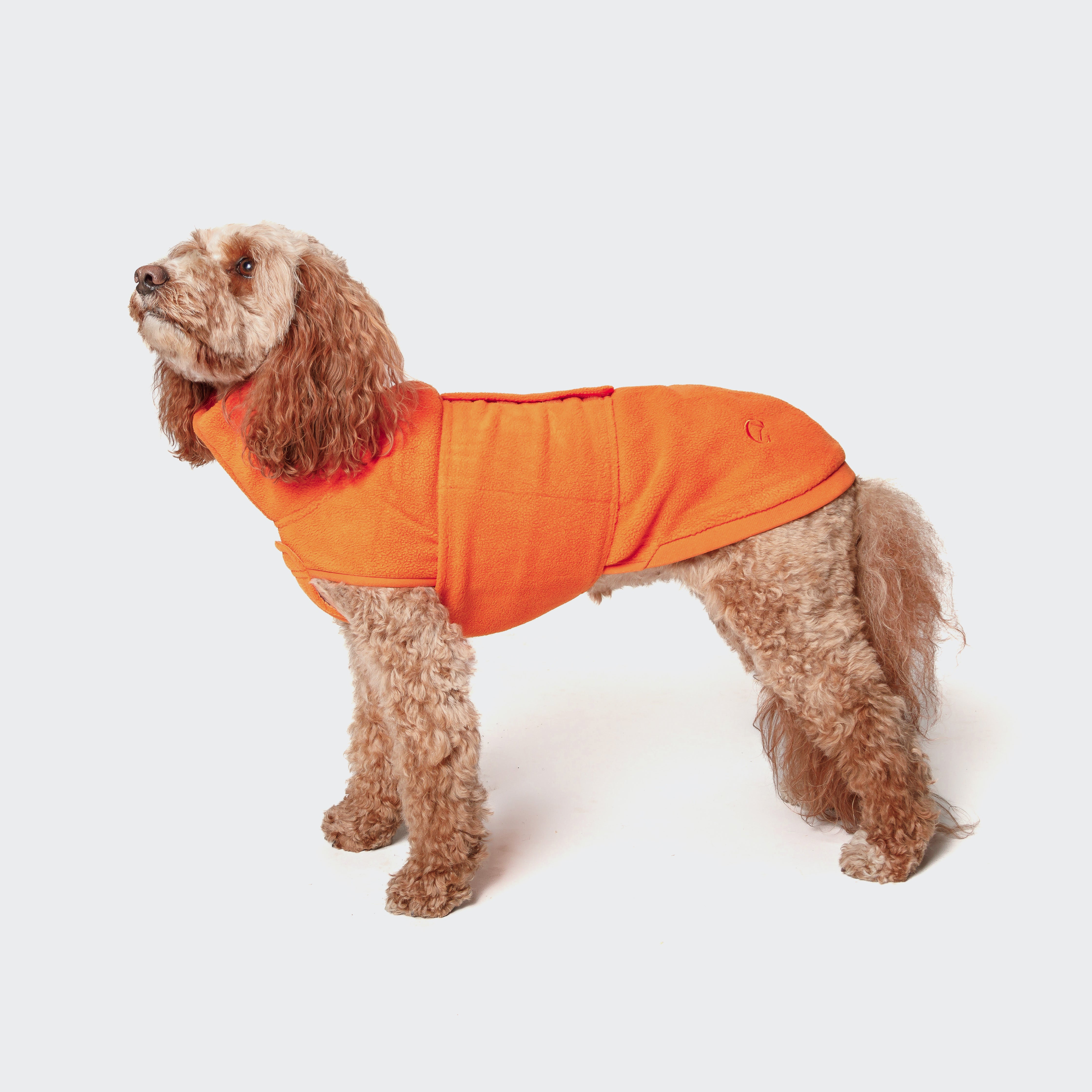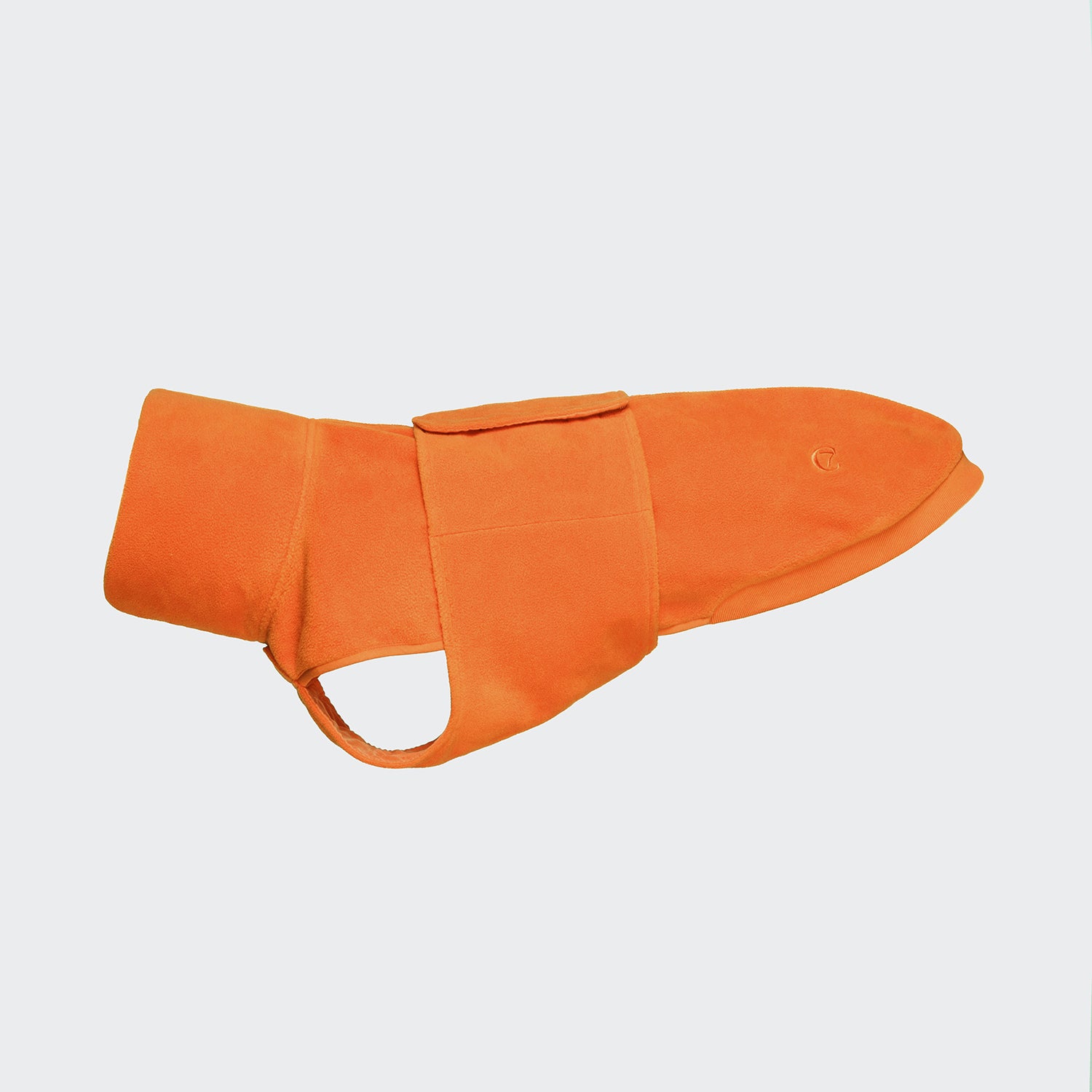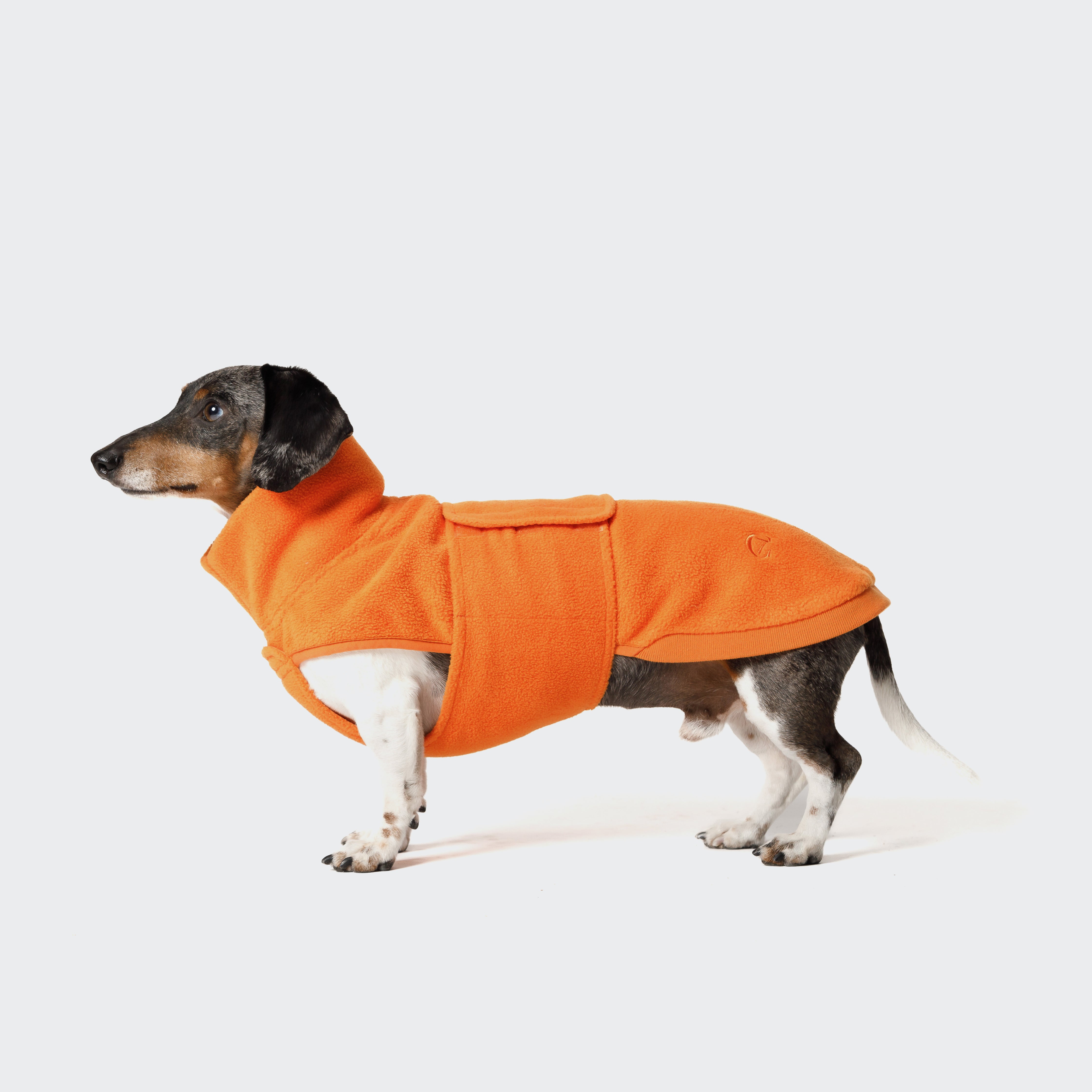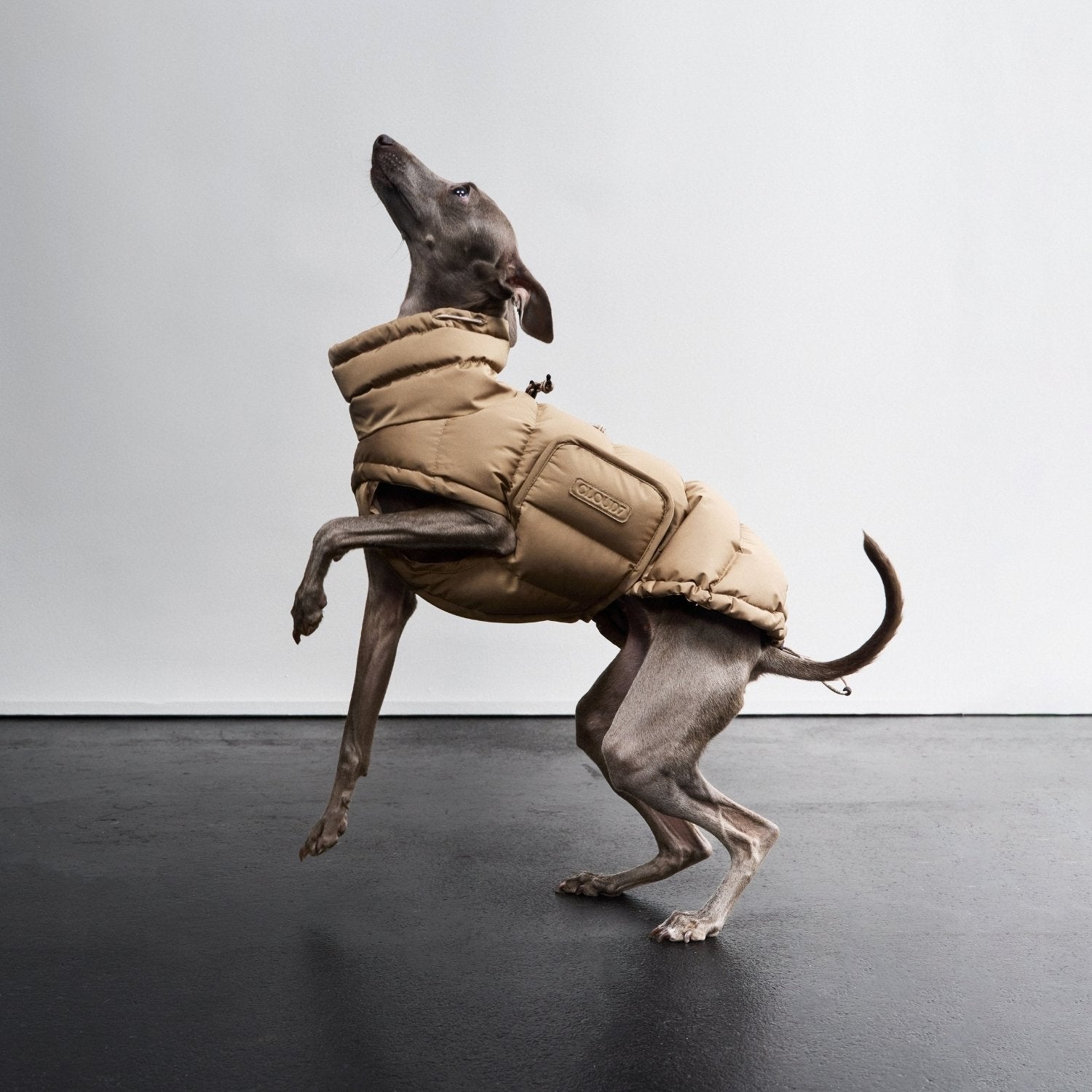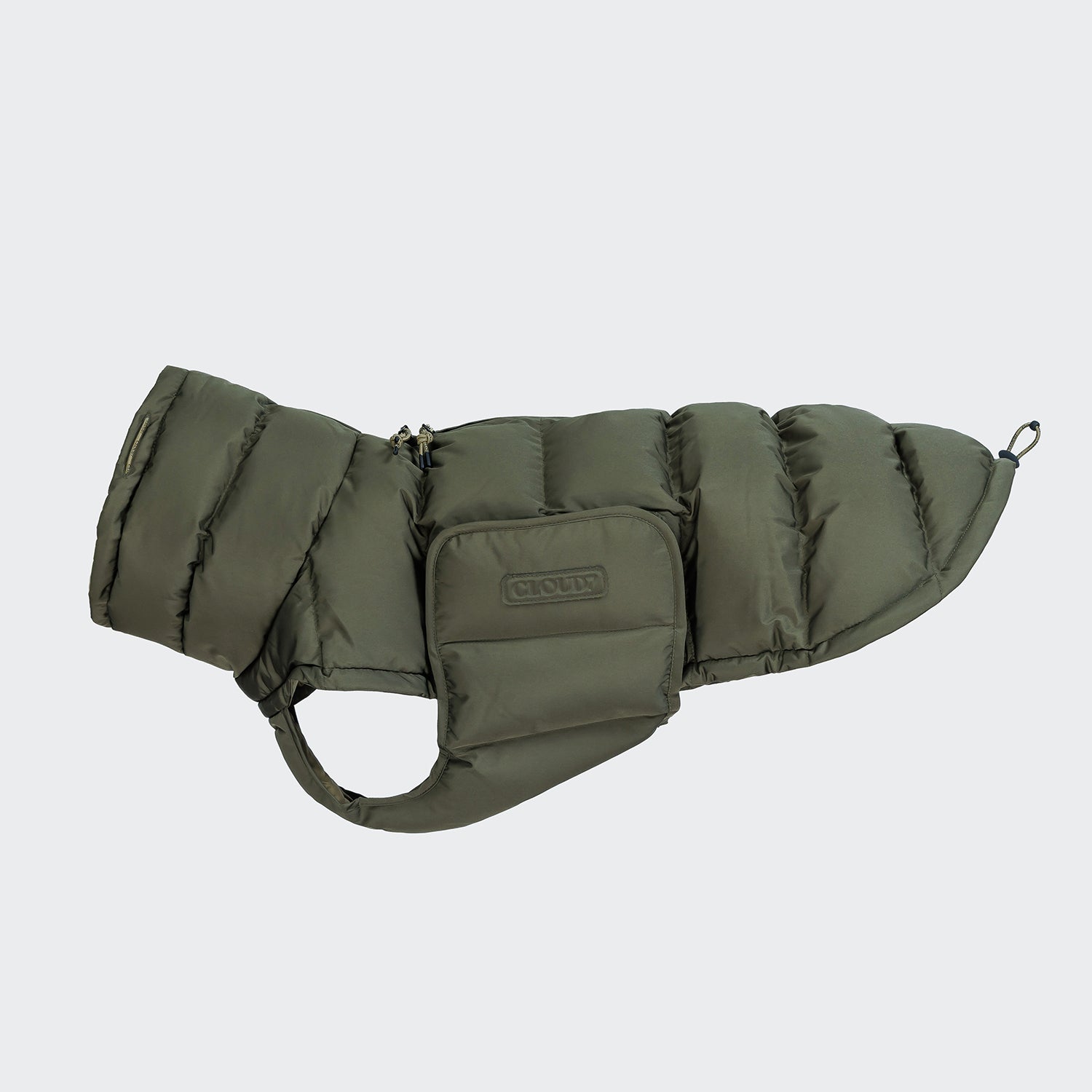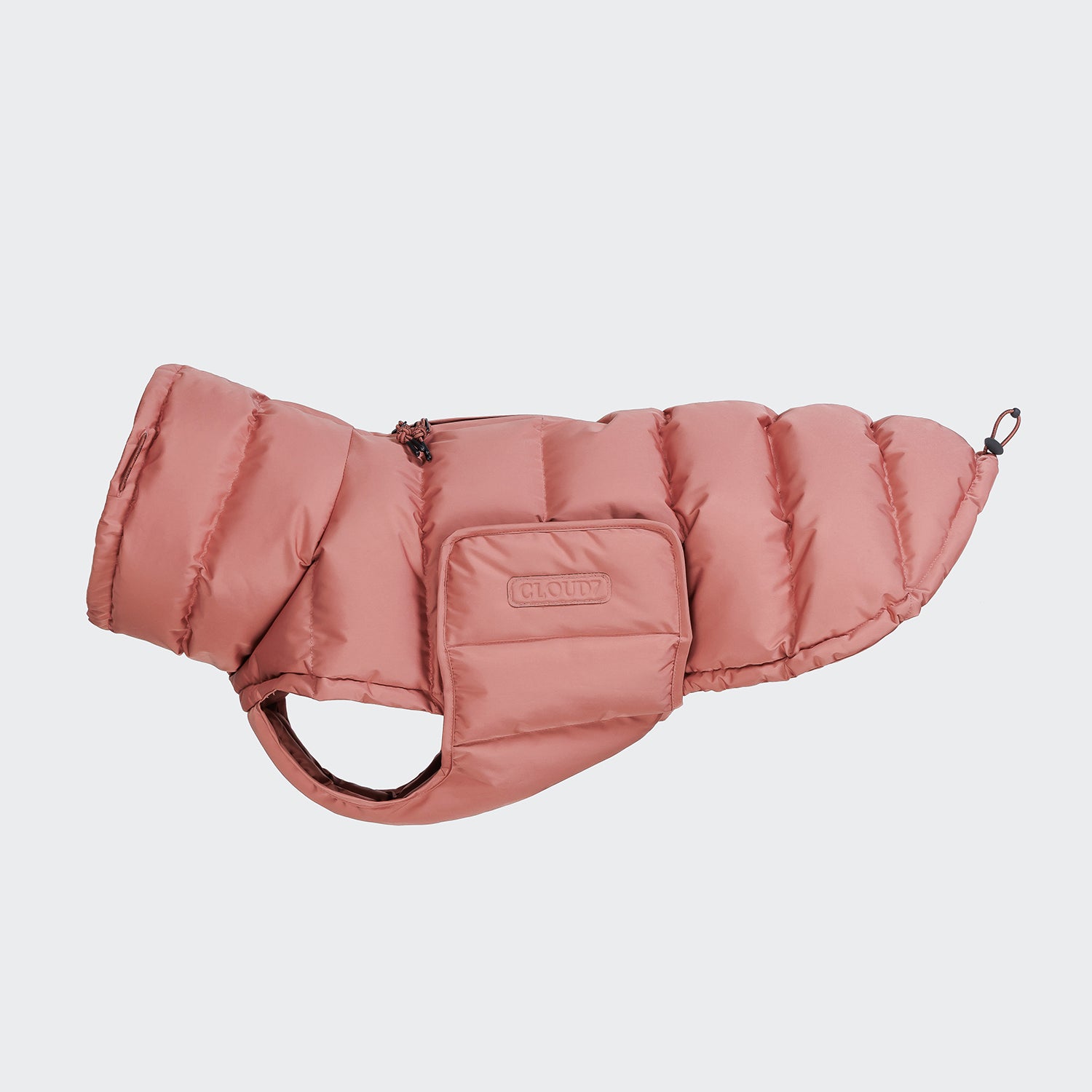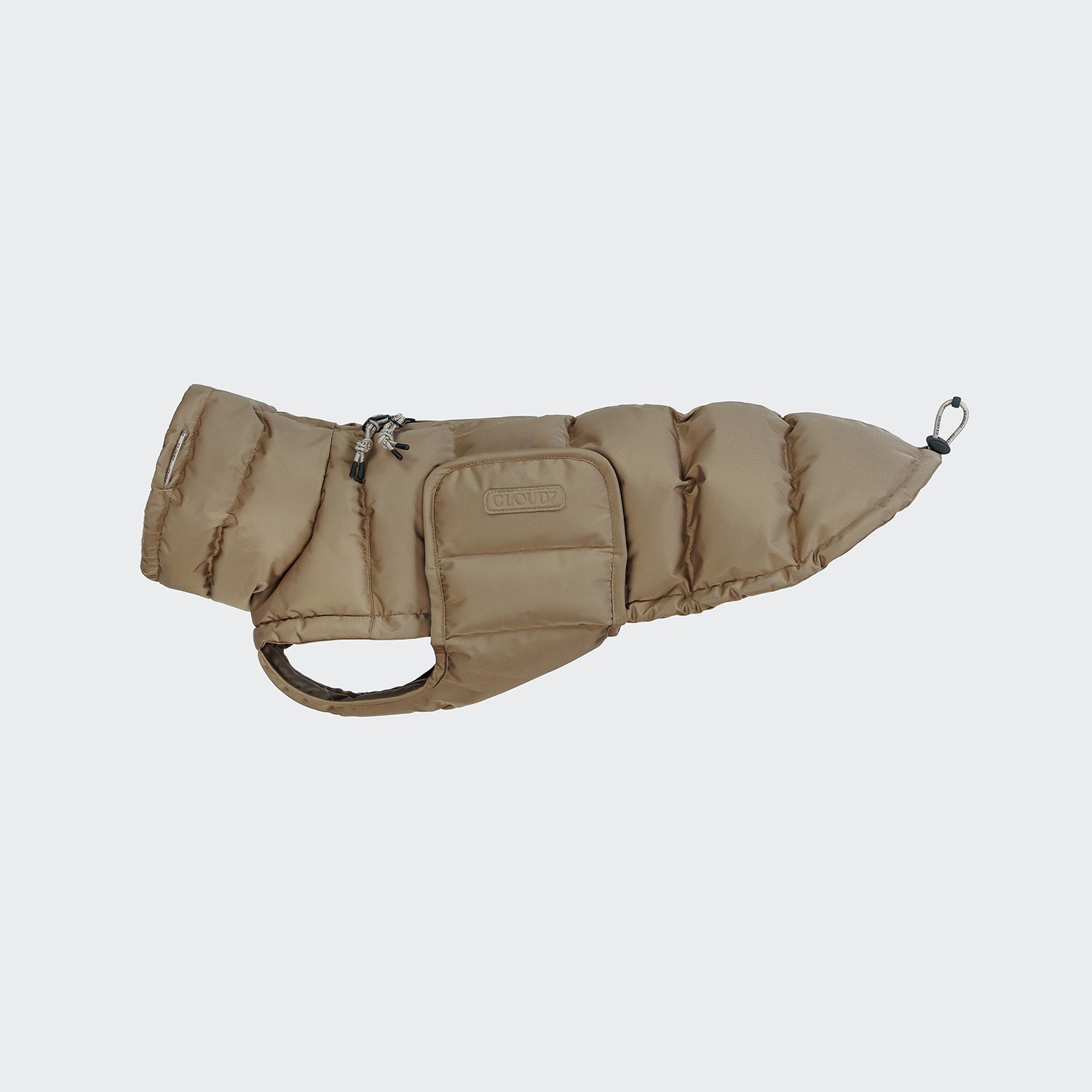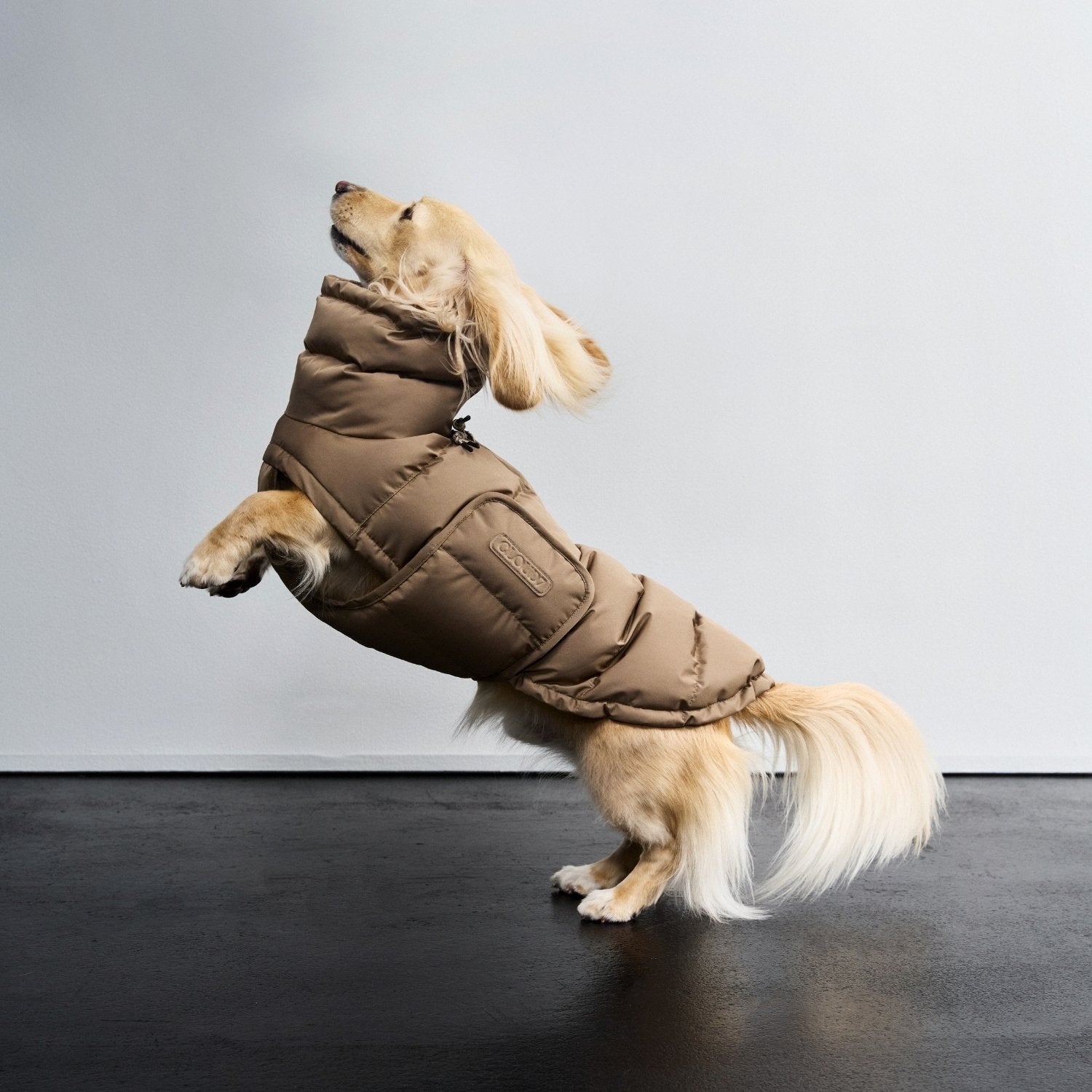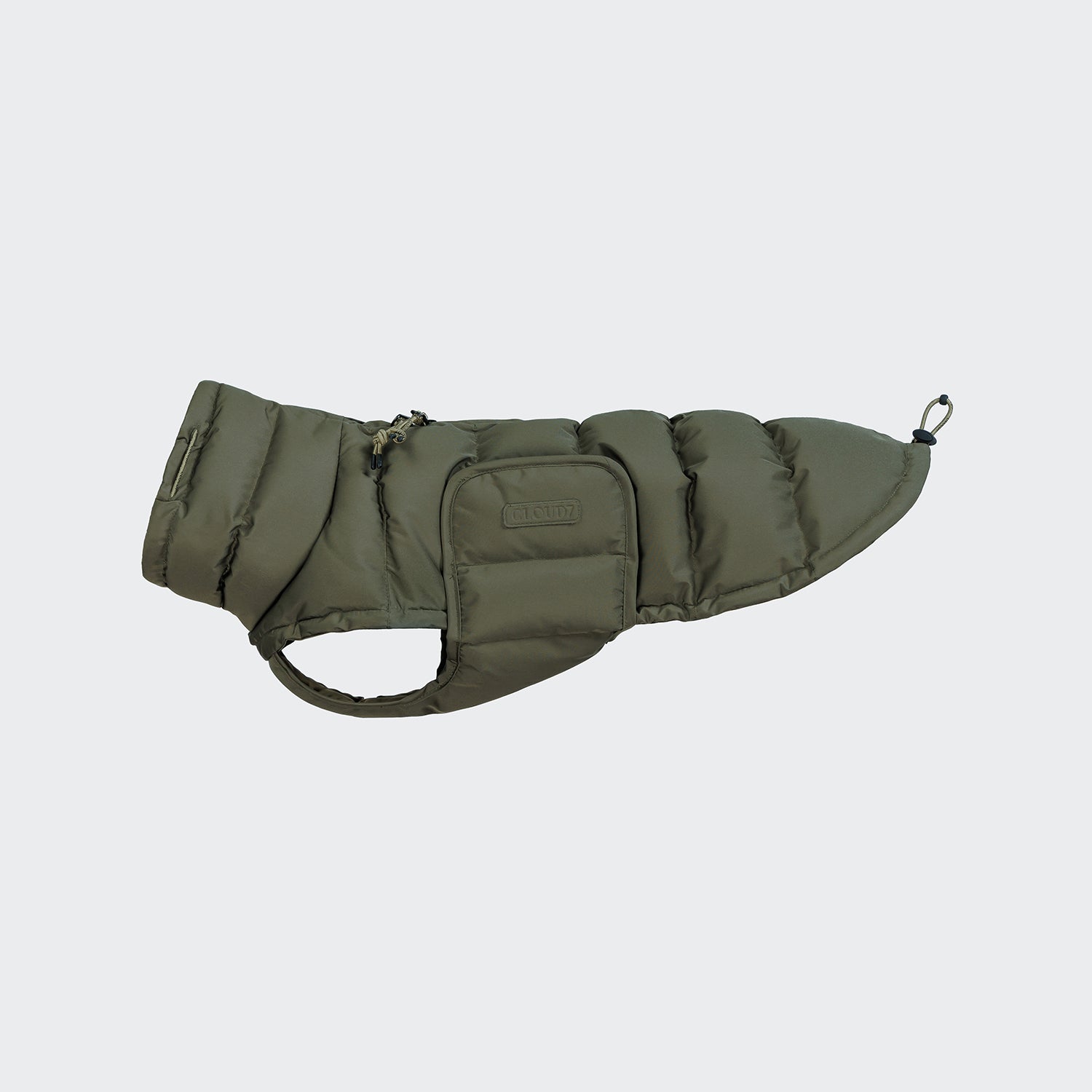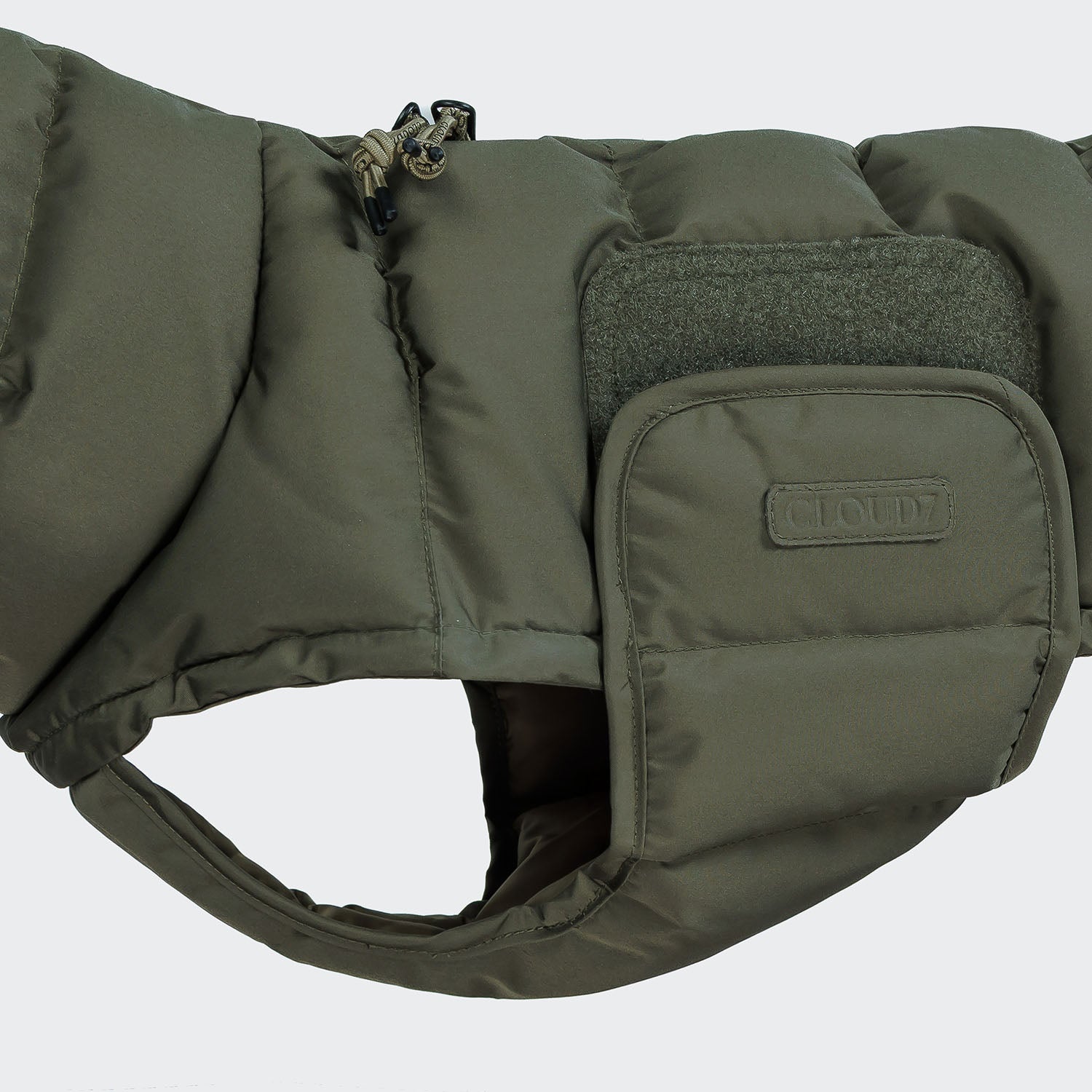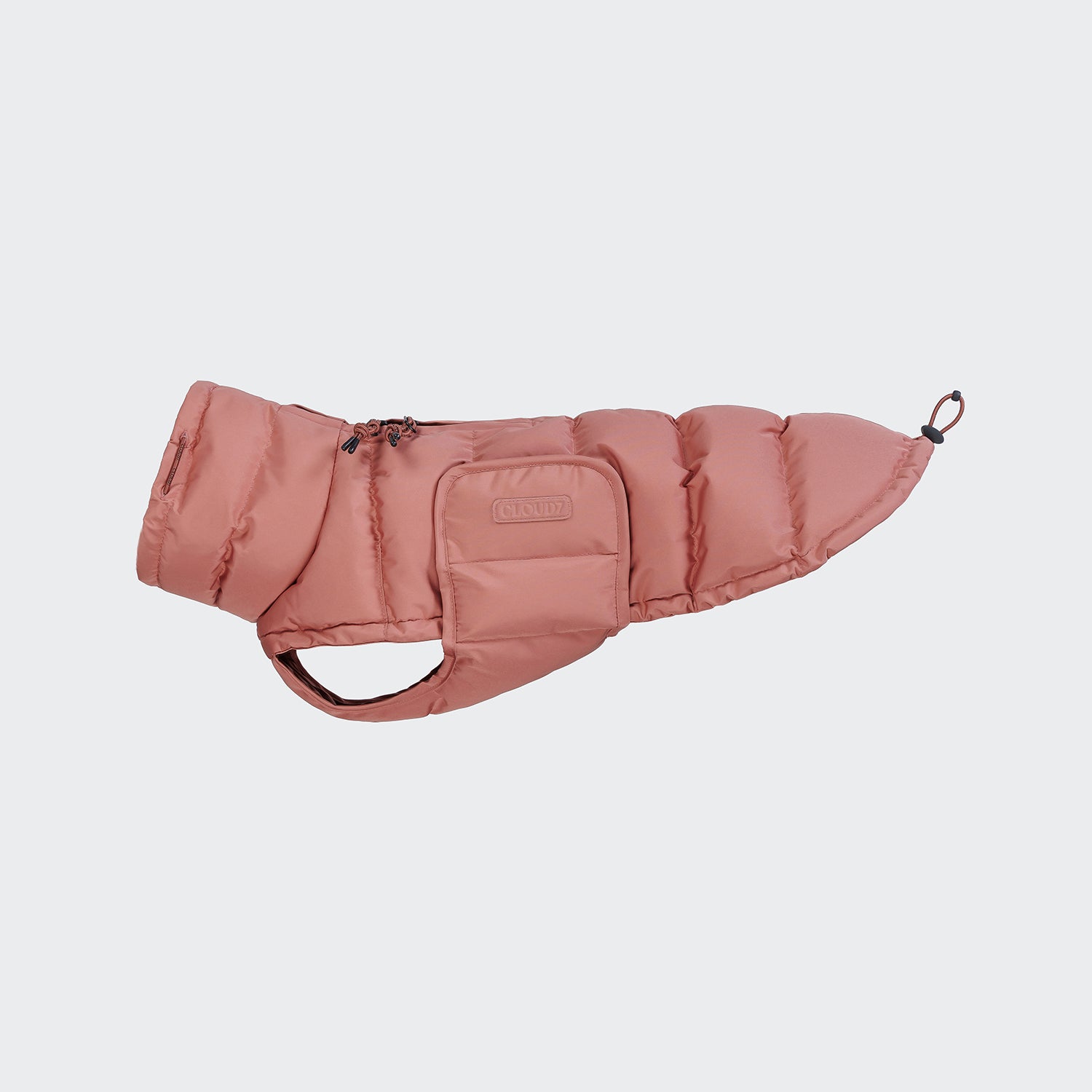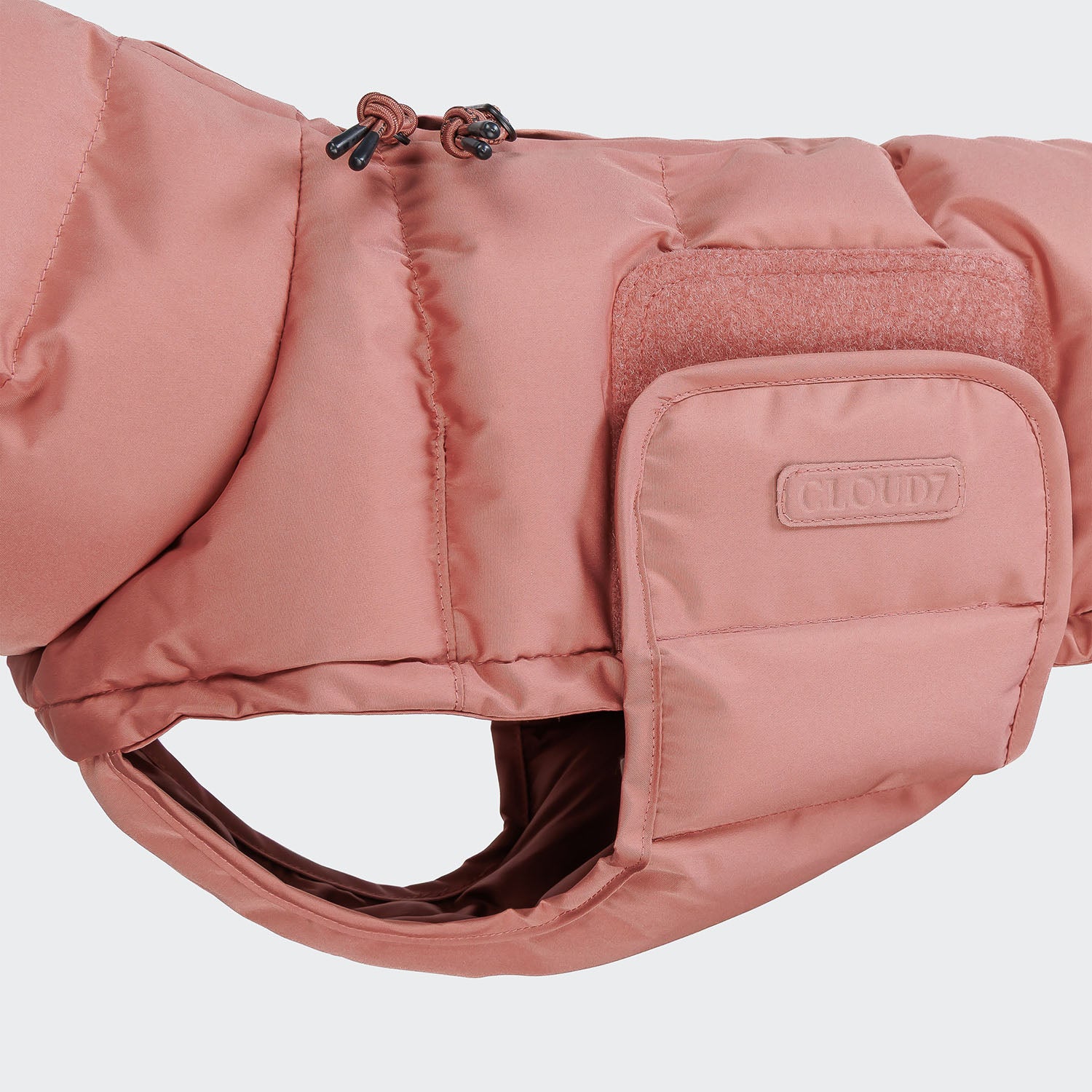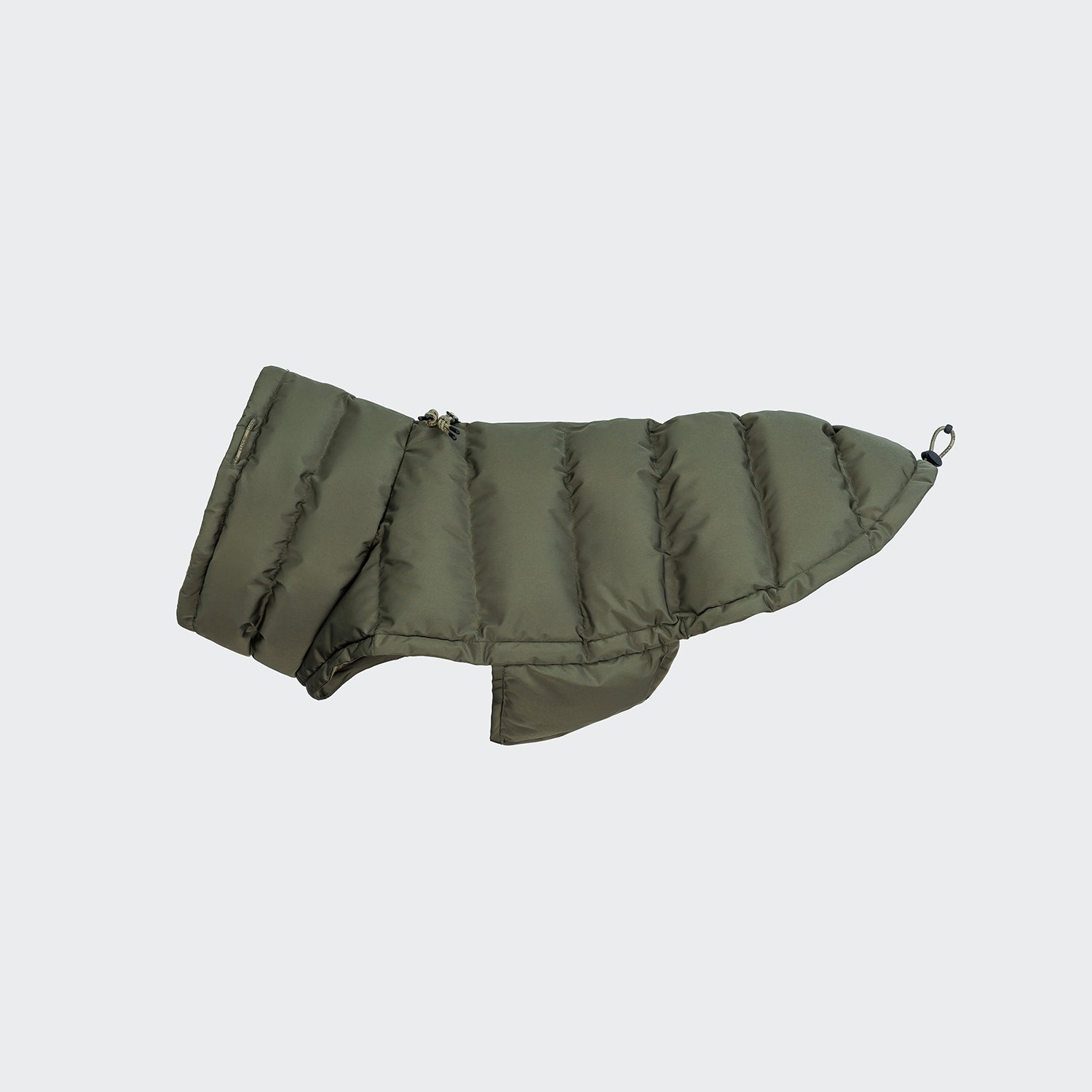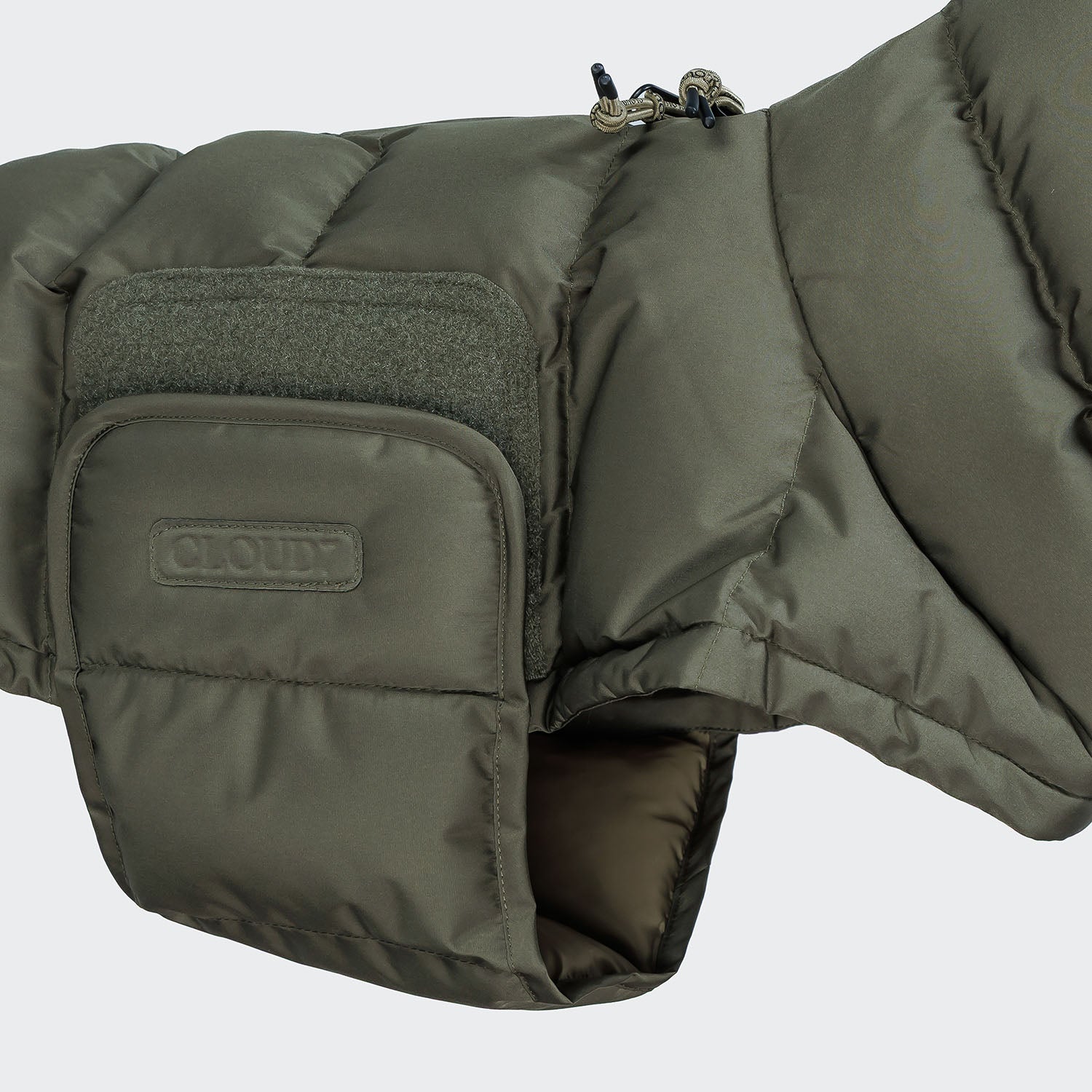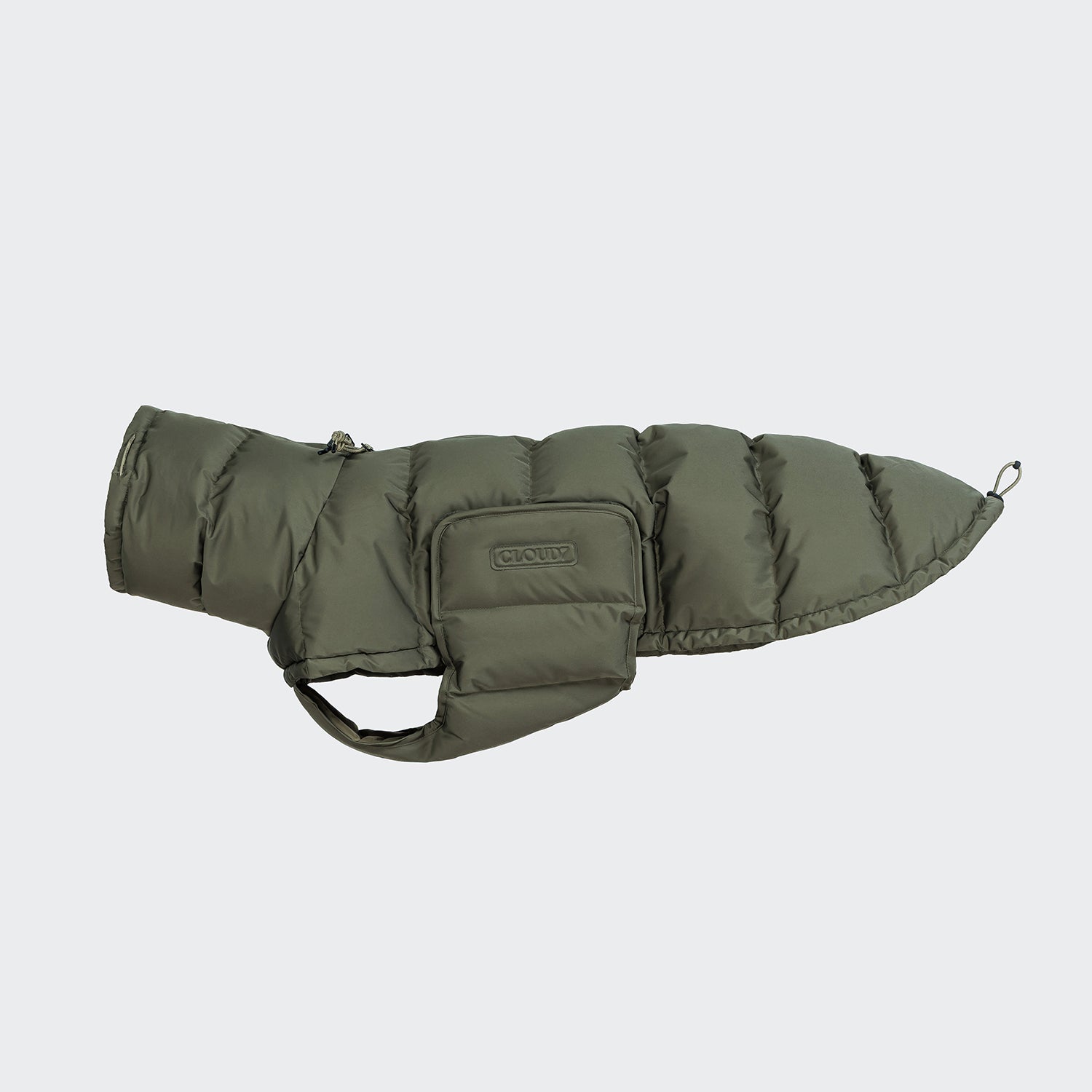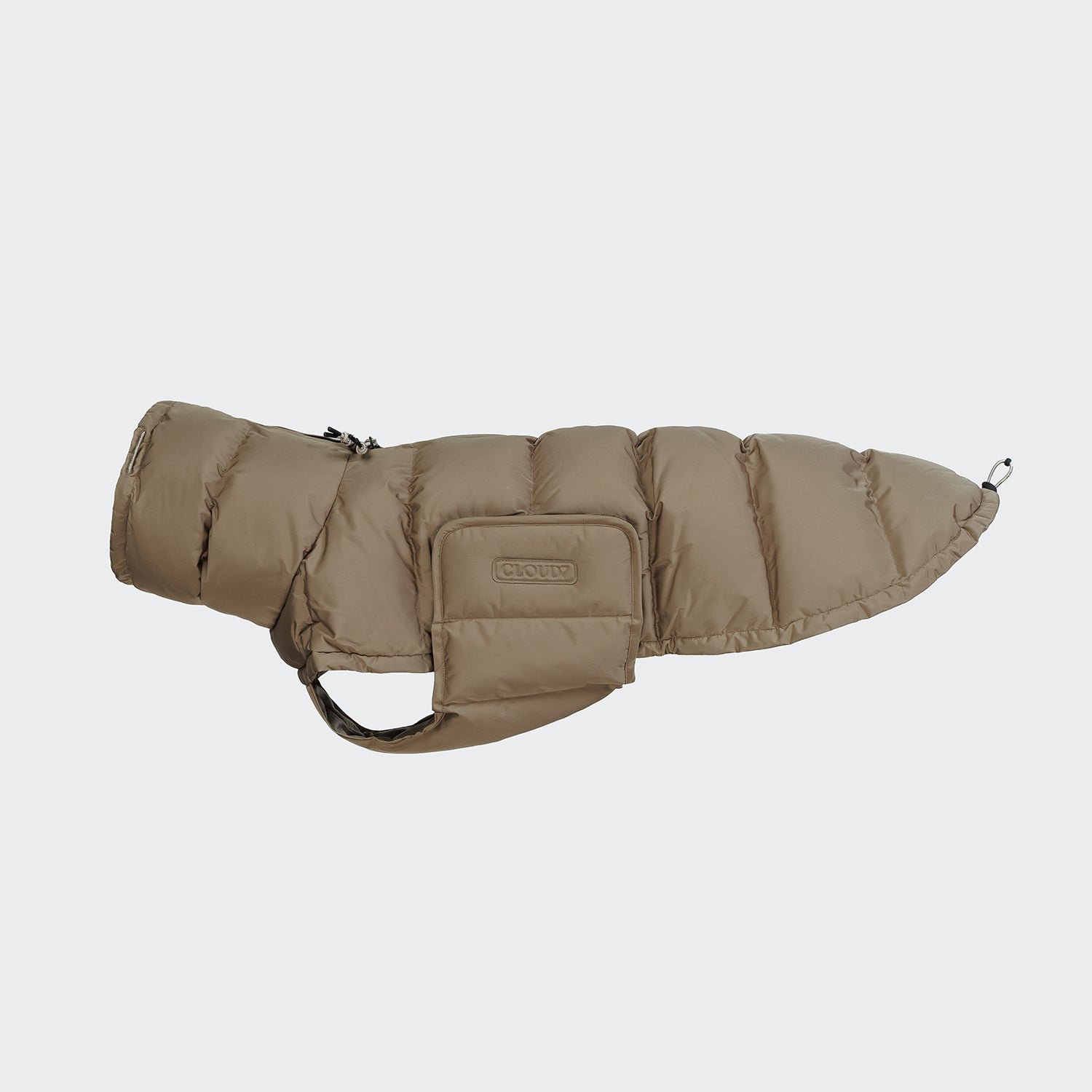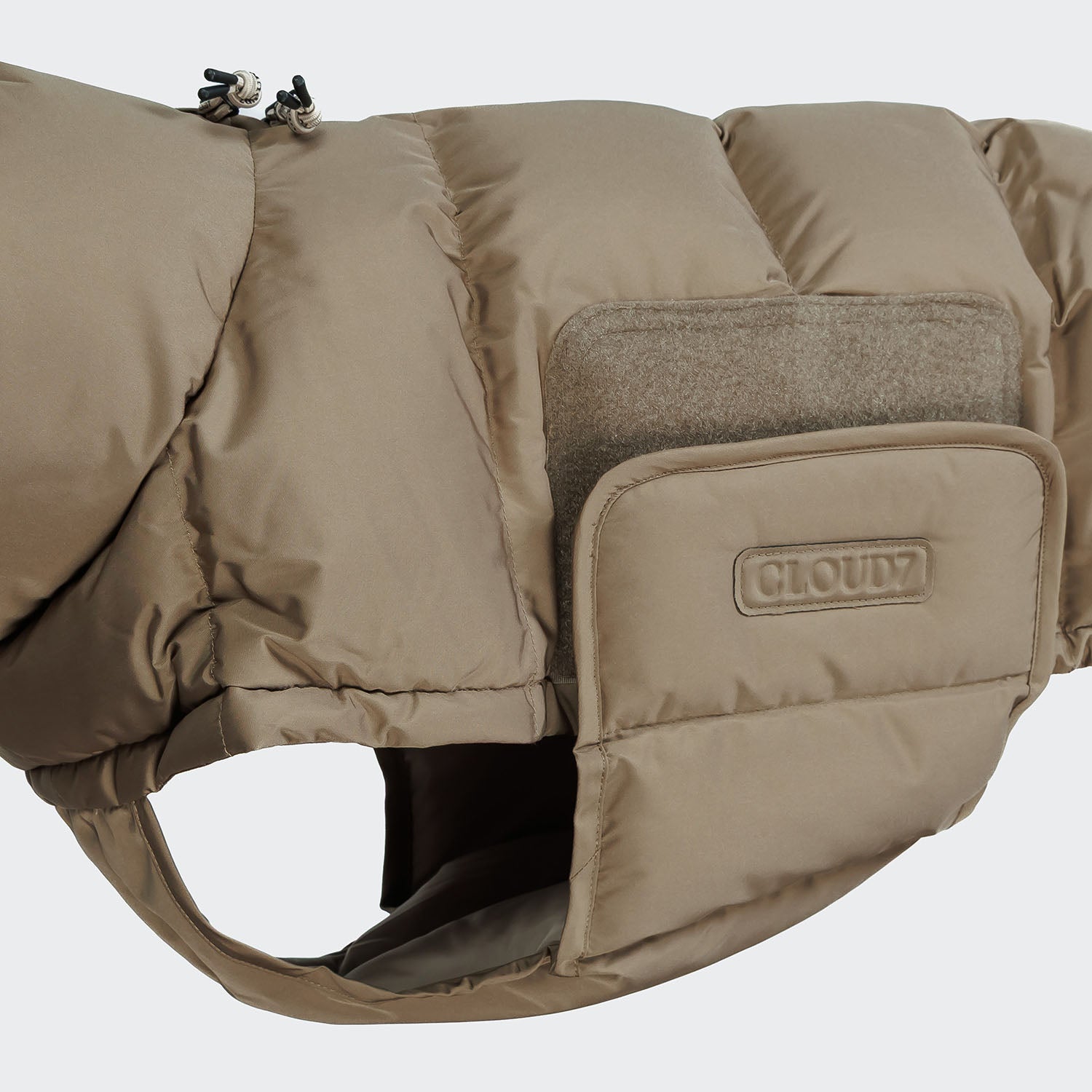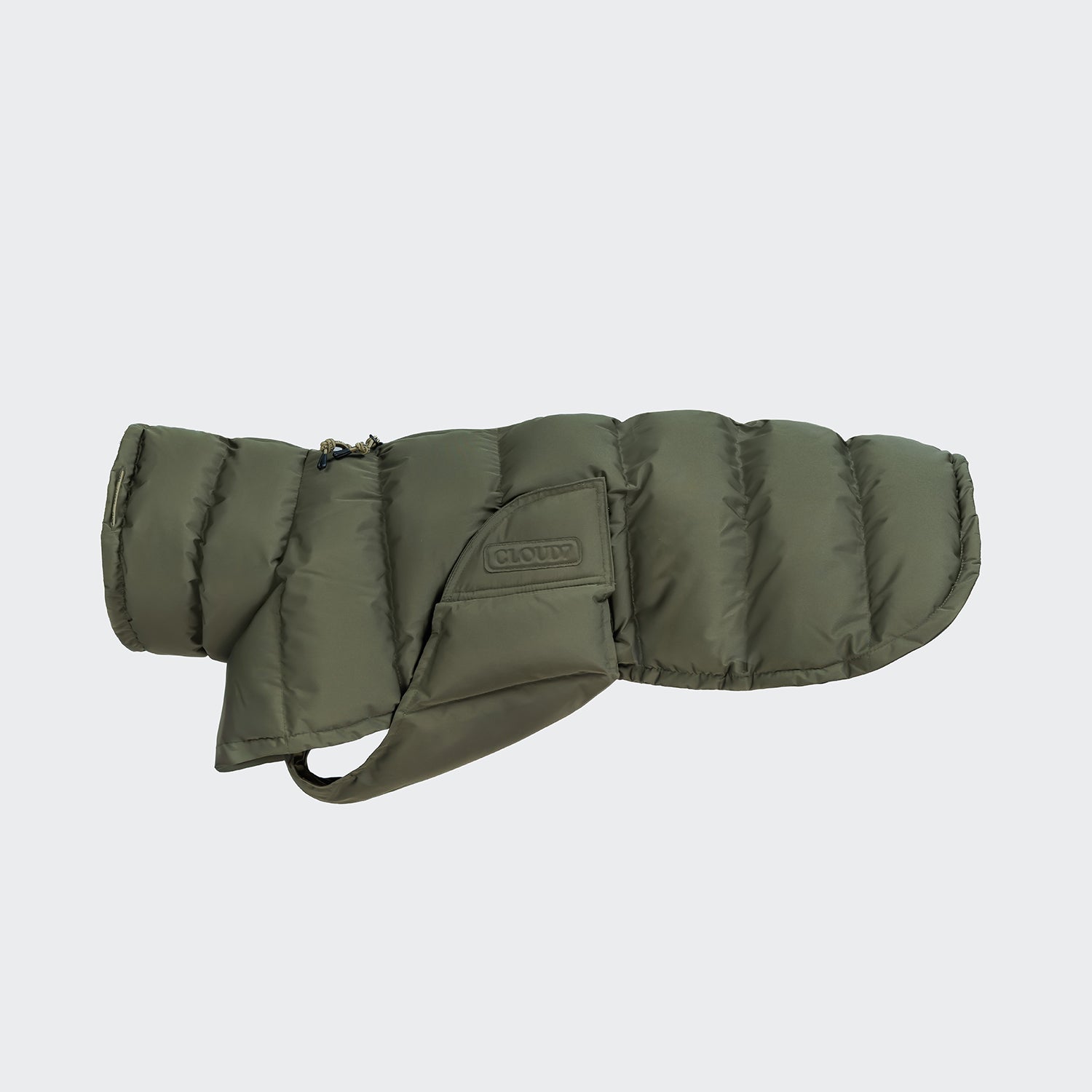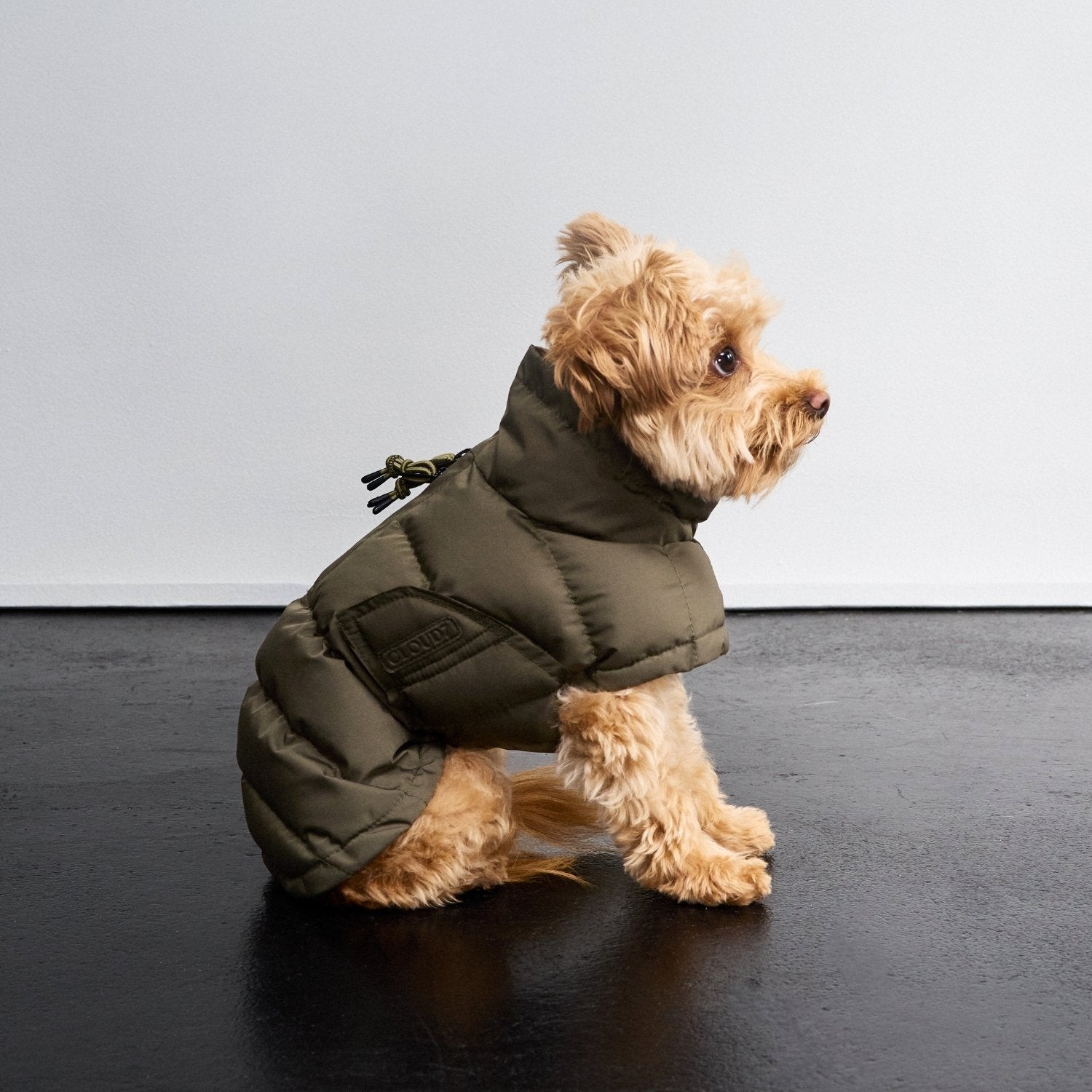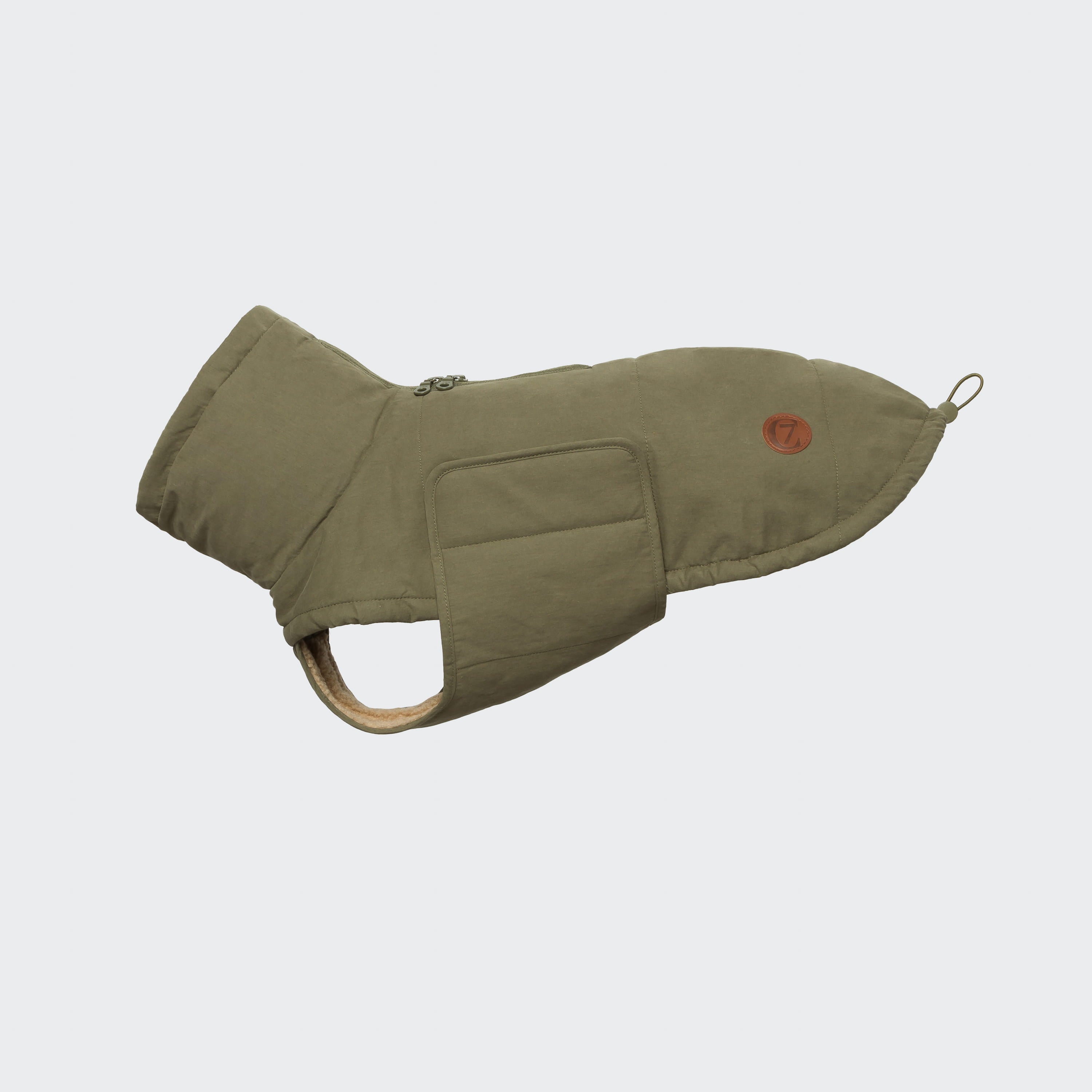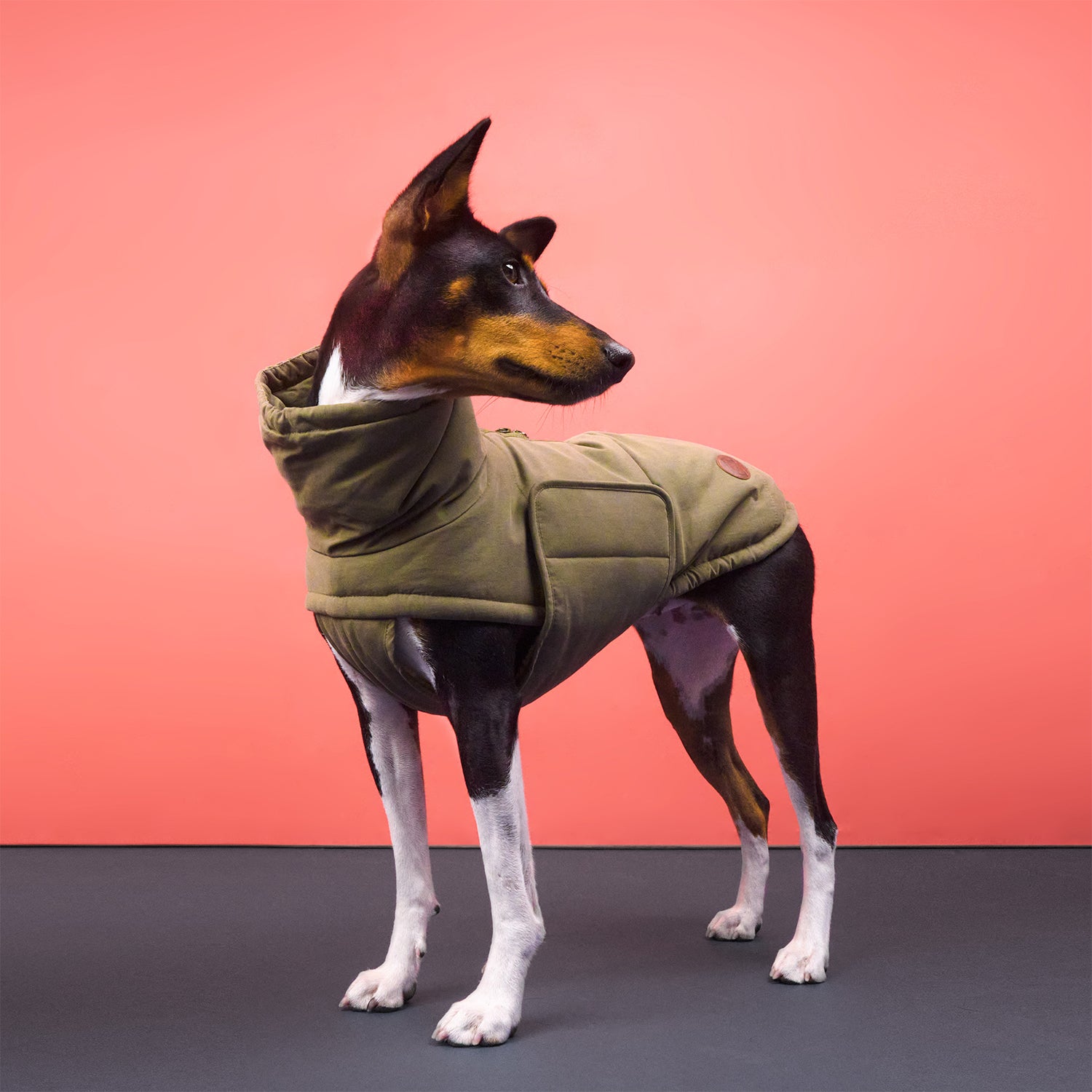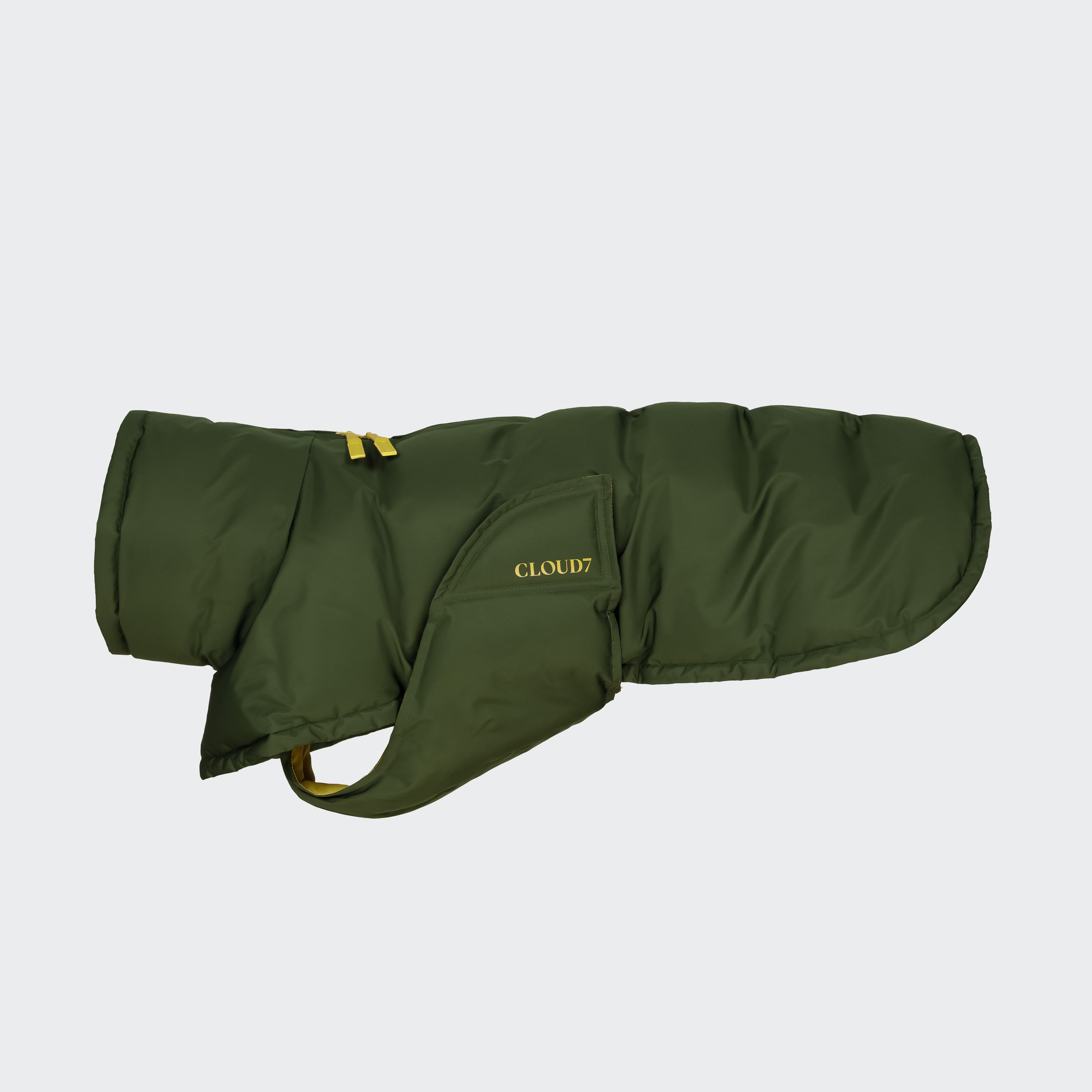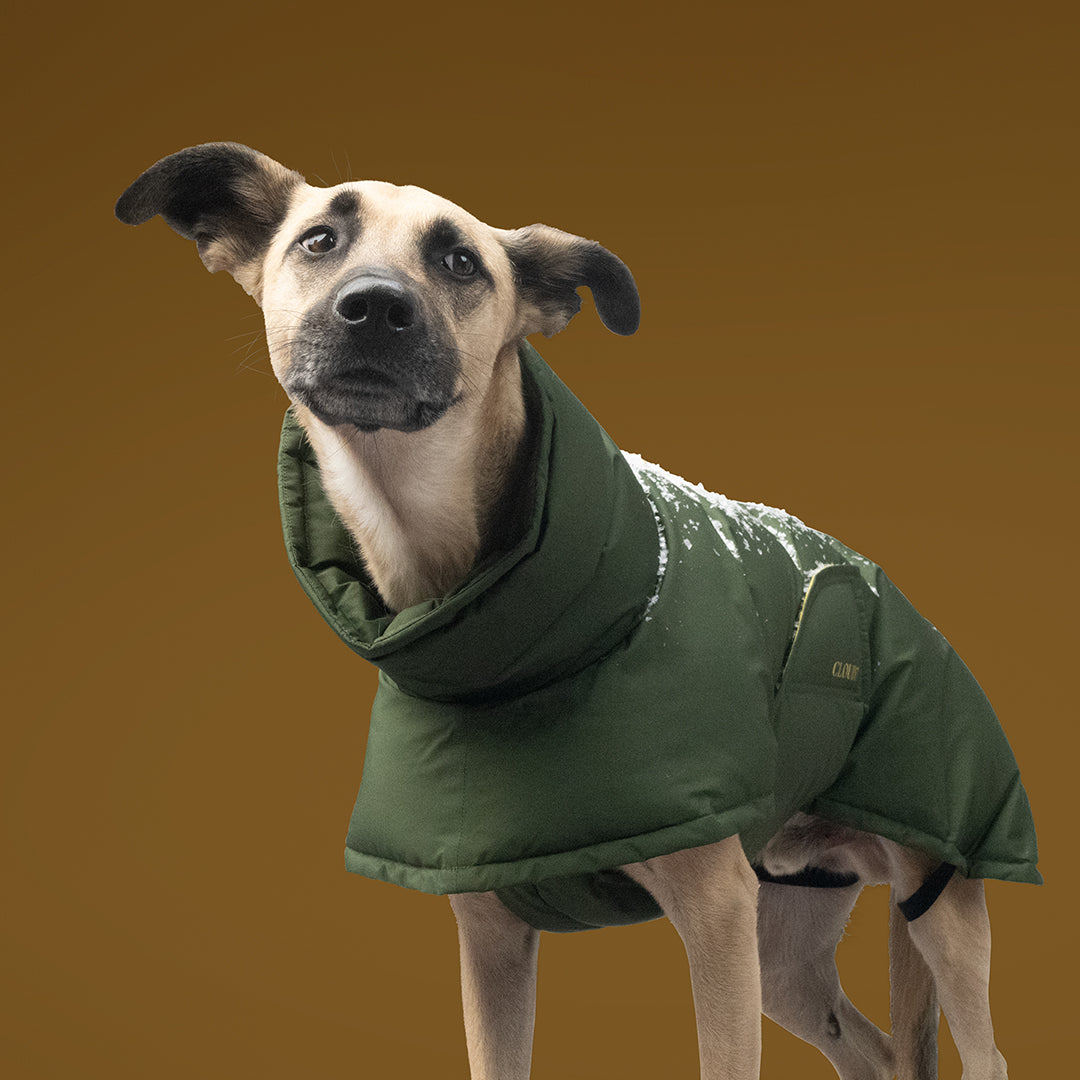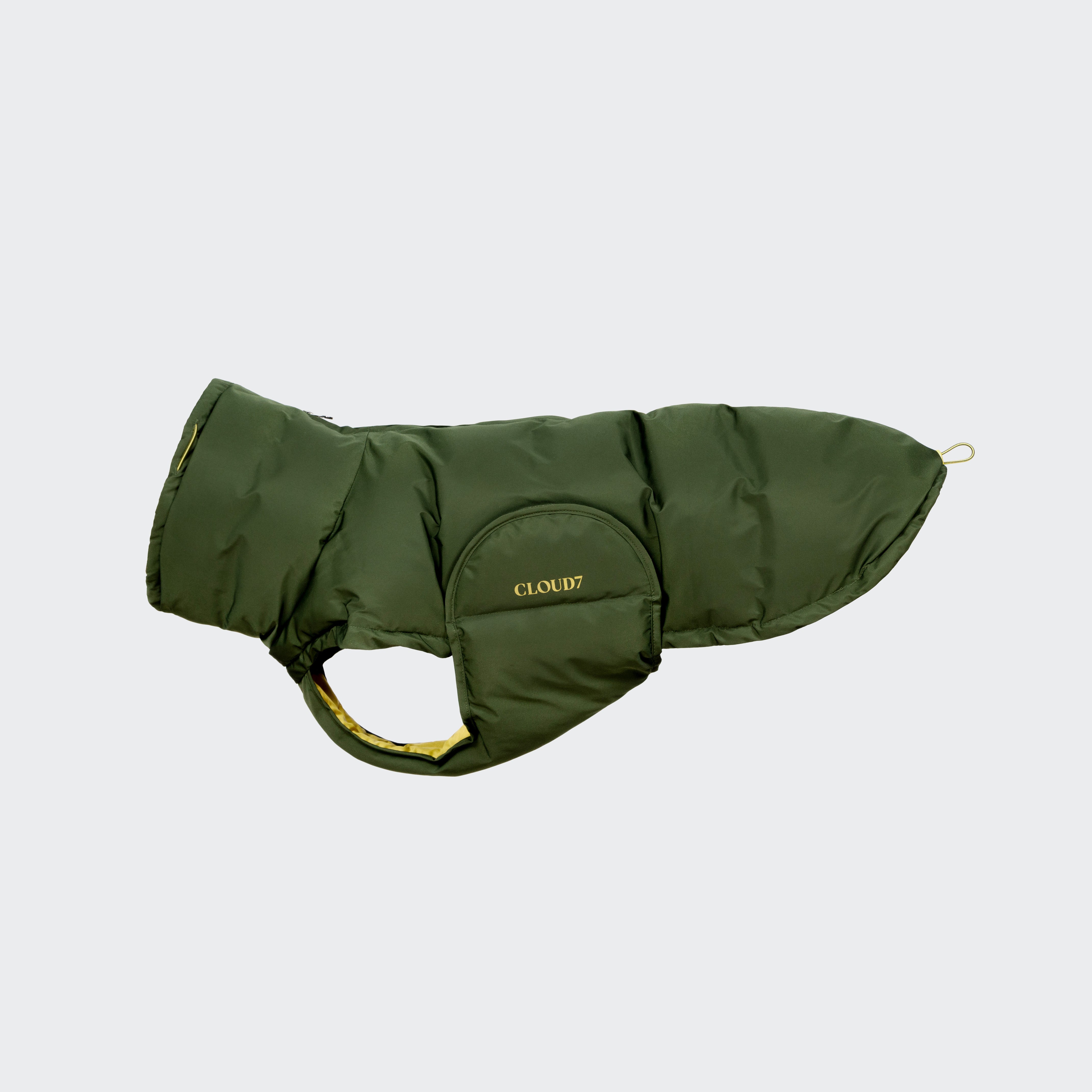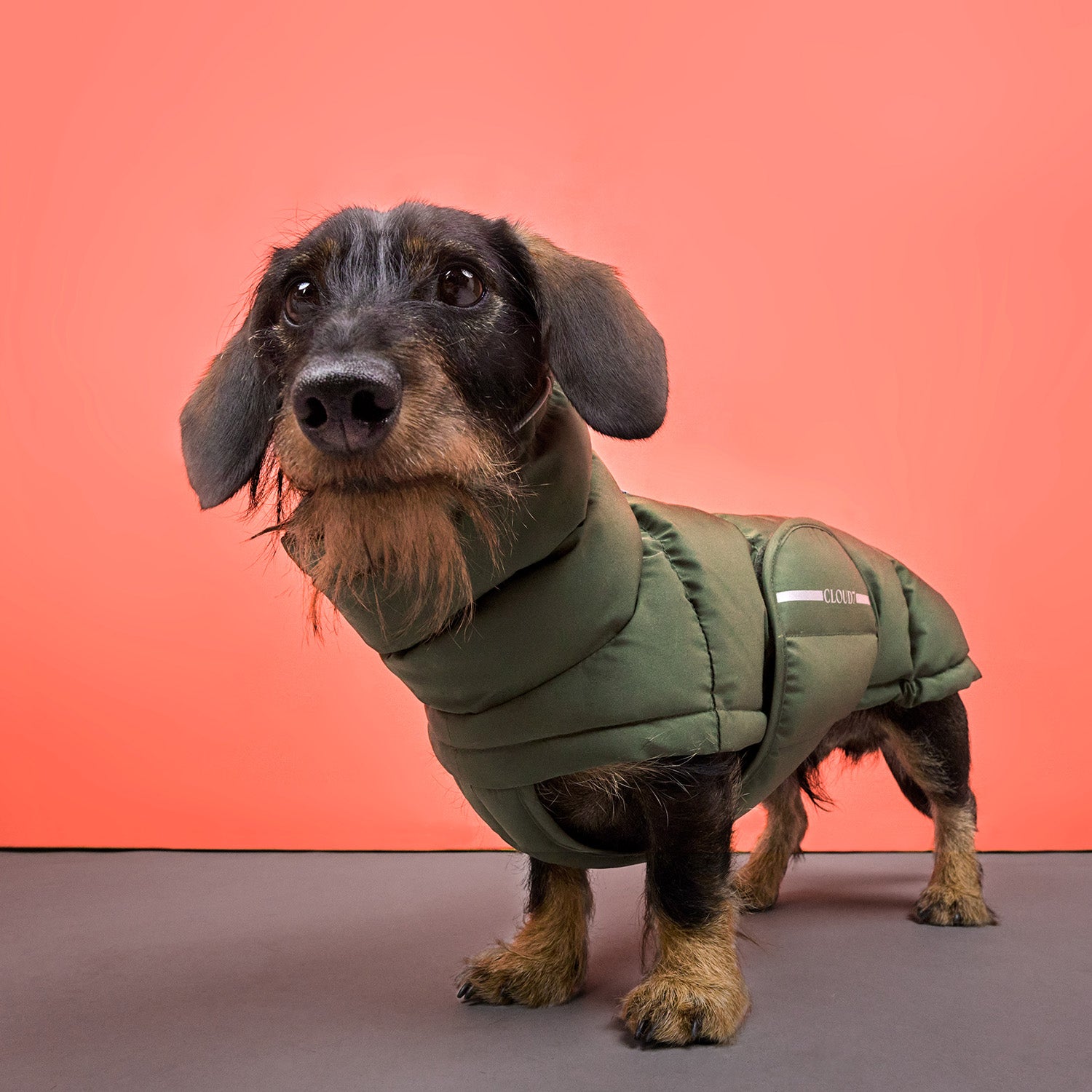GUIDE TO DOG COATS
HOW TO CHOOSE THE PERFECT DOG COAT
What was once considered a fashionable accessory now serves various purposes and can even be essential for certain dog breeds or those with health conditions. In the colder months, some dogs start shivering and feeling cold at temperatures just below 10° Celsius. Especially if outdoor adventures exceed the duration of a regular walk or if you're the owner of a rather indoorsy dog, a dog coat can be very beneficial for your furry friend. Read more to learn about the benefits of a dog coat, what to look for when buying one, and what types of winter coats and dog sweaters are available.
IS A DOG COAT REALLY NECESSARY? WHICH DOG NEEDS A DOG COAT?
Not all dogs require a winter coat in cold weather. However, certain breeds such as dachshunds, French bulldogs, greyhounds and Rhodesian ridgebacks, due to their lack of undercoat, can get cold very quickly. The single-coated coat type usually doesn't suffice for the harsh conditions of winter. Even dogs with sufficient fur should consider a dog coat in cold weather if they are lower to the ground, have joint problems or arthritis. This will keep areas such as the belly warm and protected from the cold. If your dog does not fall into any of these categories, a dog jacket is not absolutely necessary but will not harm it either. However, please make sure that the dog does not get too warm in the clothing. In this guide, we expressly distance ourselves from dog fashion and focus solely on the functional properties of dog clothing.
WHEN DOES A DOG NEED A DOG COAT?
Generally, dog coats are recommended on cold winter days when temperatures drop below 10° Celsius. In damp and chilly weather, our four-legged friends feel the cold even more. If you plan to take your dog to a Christmas market, long walks in the forrest or skiing, even double-coated dogs with thick coats will start to shiver in freezing temperatures. Especially if your dog isn't used to spending long periods of time in snowy mountains, they can quickly become very cold. Even if your dog prefers to wait in the car, it can quickly become too cold as they are unable to move and warm themselves up in freezing temperatures. Under these circumstances, a dog coat is highly recommended.
If your dog is very active at temperatures around 5 degrees Celsius, they usually don't need a winter coat. However, if your dog is shivering, retreating, or very slow-moving or you plan to make several stops during your walk, a dog coat can be very helpful to keep your pet warm in cold weather with little physical activity.
DIFFERENT TYPES OF DOG COATS
FLEECE-LINED DOG COAT
A popular choice for dogs, thanks to its design which allows them to still move naturally are dog jackets. These are often made from wool or outdoor fabrics and have a cosy fleece lining. Fleece is especially soft, quiet and comfortable, so your four-legged friend should feel very at home in it. The fleece lining is very warm, yet robust, easy to care for and dries quickly. This type of winter coat takes up little space in the wardrobe and still offers plenty of protection for the dog's body. Most dogs love to snuggle into fluffy fabrics, which is why these dog jackets are very popular with both dogs and their owners.
DOG SWEATERS
A great option for cooler days above 5° Celsius are dog sweaters. These come in a wide variety of materials such as wool, cashmere, jersey or fleece, so you can find the perfect style for every dog. They differ from dog coats in that they are usually only lightly lined, making them suitable for autumn days and warmer winter days. Some dogs even wear sweaters indoors if they are particularly prone to feeling cold.
DOG COATS WITH BELLY PROTECTION
Some dogs, similarly to puppies in particular, have very little fur on their bellies. Which means that they could benefit from the extra protection and warmth in the area. This means they need extra protection and warmth, especially in this area, to feel comfortable and to prevent health conditions like urinary track infection (UTI) or common colds. Belly protections are attached either from one side to the other or threaded through the chest area between the front legs and then fastened at the waist on both sides which simultaneously provides chest coverage. When choosing a dog coat complete with belly protection, please make sure that the dog can still do their business easily and is not restricted by the clothing. Especially with male dogs, there should be more room in the lower belly area.
ECO PUFFER COATS FOR DOGS
Eco puffer coats for dogs are classic winter coats. They are quilted into chambers, each of which is thickly lined. The padding ensure these dog coats are particularly warm. Eco puffer coats for dogs are also available with hoods and sometimes even with real or faux fur collars (for animal welfare reasons, it is advisable to avoid real fur). These eco puffer coats are especially suitable if you want to spend many hours in the snow or if your dog gets cold very quickly. In the meantime, there is even so-called eco puffer as a filling for these dog coats, which completely dispenses with animal down and is therefore particularly sustainable. This eco puffer is made, for example, from recycled post-consumer PET bottles, so that a new life is breathed into this material and its life cycle is extended. Reflective elements on some winter coats are also particularly practical, so that your four-legged friend is always visible - even in the cold, dark season.
DOG BATHROBE
Dog bathrobes have become increasingly popular in recent years. They are made from highly absorbent materials like terry cloth on both the inside and outside to soak up excess water after bathing, swimming, showering or rainy walks. These dog bathrobes are soft and comfortable to wear, dry your four-legged friend and at the same time protect your home from annoying water splashes when shaking off after water activities.
DOG RAINCOATS
It's not just on cold winter days that dog coats are practical. There are some four-legged friends who really dislike being out in the rain and would rather not take a step outside in wet weather. For these dogs, a dog raincoat is extremely convenient, ideally one that protects not only from above but also the sensitive belly area from below. These raincoats are usually waterproof, so that the fur stays dry while outdoors. This is made possible by specially taped or laminated seams on the inside of the raincoat, as water-permeable stitches are avoided. A useful side effect of these dog raincoats is that your home also remains free of mud, puddle water and dirt after these wet and cheerful walks. Only the paws still need to be dried after the walk.
WHICH MATERIAL FOR A DOG COAT?
When choosing the right material for a dog coat, you should definitely make sure that it is easy to wash. Most four-legged friends will romp around with their dog clothes on, which can get quite muddy and dirty. It's really convenient if a dog coat can simply be cleaned in the washing machine once you're back home. At the same time, a dog coat should be as robust as possible for the same reasons. The material should not tear if your dog, including the coat, gets caught on a tree or similar objects. Due to their durability, materials such as polyester with a special polyurethane coating, recycled polyester, nylon, a wool-polyester mix or a polyester-polyethylene mix are suitable here.
Especially in the damp autumn and winter months, a functional dog coat is characterised not only by tear-resistant, hard-wearing material, but also by water-repellent properties to protect the dog from moisture. A suitable dog coat should therefore offer protection from wind, rain and snow and reduce heat loss as much as possible.
WATERPROOF OPTIONS
To keep your furry friend as dry and warm as possible, there are various weatherproof options available. When looking for waterproof materials, please ensure that the fabrics are also breathable. This is the only way your dog will feel truly comfortable.
- Weatherproof waxed
- Polyurethane coating
- Dirt-repellent coating
REFLECTIVE ELEMENTS
The winter season is usually grey and dark. Dogs can be easily overlooked in low light, so it's important to make sure they're visible. A dog coat with reflective stripes or other features can help keep your furry friend safe.
- Reflective elements such as stripes
- Reflective seams
- Polyester with incorporated glass fibres
SUITABLE LINING FOR DOG COATS
Once you’ve chosen the outer material, it’s time to think about the lining. Consider your dog’s comfort and the coat’s purpose – how warm does it need to be? Popular lining options include:
- Teddy lining
- Cuddly fleece
- Viscose lining
- Down or eco puffer
HOW DO YOU MEASURE THE SIZE FOR A DOG COAT?
First, the most important measurements are the chest circumference and the back length. Measure from the base of the neck (where the collar sits) to the base of the tail. It's best to measure your dog standing up to accurately determine the back length that will ultimately be covered by the coat. The head should be held straight and upright. A well-fitting dog coat should be neither too short nor too long. Manufacturers' size charts will indicate whether the side length of the dog coat is shorter or longer depending on the model.
For sizing, only the length of the actual back, excluding the neck and tail, is important. The chest circumference is measured at the widest point. So, loosely wrap the measuring tape around your dog's chest to read the correct width. As a rule, the measured chest circumference is longer than the back length. This is even true for the relatively long dachshund breed.
Once you have these two measurements, you can use the back length and chest circumference to find the right size for your dog's coat. Most dog clothing is available in a size range from XXS to XXL, and sometimes even in 12 different sizes. Depending on your dog's body shape, special breed-specific fits may also be available. You can learn more about this later in the guide. You have found the right size for your dog when your dog can move freely enough and the coat doesn't twist or cut in when moving. It's often worth trying different sizes and models on your dog when choosing a dog coat, to finally find the perfect model for you and your four-legged friend.
WHAT ARE THE CHARACTERISTICS OF A HIGH-QUALITY DOG COAT
Not every dog enjoys getting into a coat or jumper. To ensure your pet doesn't develop a negative association with clothing, it should be as quick and easy to put on as possible. Ease of use is crucial.
A dog coat should allow plenty of freedom of movement and not restrict your dog. After all, they should still be able to romp around as usual. A well-fitting coat shouldn't pinch at the front or back legs and should fasten loosely without any pressure. It should be comfortable and hardly noticeable to your dog when wearing it.
It can also be uncomfortable for your dog if the coat moves around as they walk. Finding a good fit without the coat twisting is essential for comfort. There are now sophisticated systems with elastic and cord stoppers to make a dog coat as flexible and adjustable as possible in the back length. It is also recommended to use dog coats with Velcro fasteners, as these can be put on in a flash and easily adjusted in the chest area. Velcro remains one of the few fastening techniques that stays in place without slipping after closing. In the lower belly area, the dog coat should also offer your pet sufficient freedom of movement.
Depending on whether your dog prefers a harness or collar, dog coats with openings for these can also be considered. With a zipper or slit, your dog can wear the harness comfortably and hidden under the coat, and you can still easily reach it to attach the leash.
Depending on the intended use of the dog coat, it should be waterproof, warmly padded and insulating. The focus is therefore on choosing a suitable outer material as well as the inner lining and filling - according to your dog's individual needs and your own preferences. You can find more information on this under the previous point "Which material for a dog coat?". What is often overlooked, but greatly contributes to your dog's well-being, is the choice of a fabric that does not rustle. A dog jacket should therefore be as quiet as possible in movement so that your pet enjoys romping around in it just as much as usual. A long, integrated collar makes a dog coat even more cozy. It protects your darling from drafts and rain and provides additional warmth.
TIPS & TRICKS
Dog coat or dog sweater?
Dog jumpers are not usually waterproof. They're mostly made of wool, cotton or fleece, making them more suitable for dry weather above 5° Celsius. Some dogs, especially those without an undercoat, can get cold quickly even indoors in winter, so a dog jumper can provide a comfortable way to keep them warm and boost their well-being. However, if temperatures are heading towards 5° Celsius or below in winter, experts recommend a dog coat for outdoor walks for dogs that get cold. A coat not only provides warmth but also protects against wind and rain. If you're planning longer trips in the snow with your pet, a dog coat is also the better choice.
Another, less well-known option is dog overalls. These are particularly practical for sighthounds as they provide additional warmth for the belly, back, neck, and legs. In cold weather, these dog overalls cover the entire dog except for the paws, head, and lower belly area. For dogs that get very cold, these overalls are great to wear under a winter coat.
How is a dog coat put on?
As mentioned under "What are the benefits of a high-quality dog coat", a suitable dog coat should be quick and easy to put on and take off. Most outdoor dog coats are put on over the head and then secured with a belly band. This belly band can either run from one side to the other or be threaded frontally in the chest area between the two front legs and then closed in the belly area. The fasteners are usually Velcro, snap fasteners or belt-like straps. The dog coat should never be tied or buckled too tightly, but should always allow sufficient freedom of movement.
If you want to combine the dog coat with a harness, this is no problem. If the dog parka has an opening for the harness, simply put it on underneath and attach the leash to the slit provided for this purpose. If the dog coat you have chosen does not have an opening for a harness, in most cases you can also have your four-legged friend wear the harness over the coat without much effort. People and dogs who prefer a dog collar can continue to do so when using a dog coat. To do this, either attach the leash to the collar via the coat collar or use an opening provided for this purpose if available.
How do I get my dog used to wearing a dog coat?
It's best to put your dog's coat on at home, in a safe place, before a long walk. Let your four-legged friend wear the coat for a few minutes so they can get used to it. Only when they feel comfortable wearing the coat indoors should you start your outing with the coat on. Your furry friend will quickly realise how much more pleasant it is to go for a walk in a coat on cold winter days and avoid feeling cold.
Dog coats for aging dogs and dogs with osteoarthritis
Not only do dogs with a thin undercoat benefit from dog coats in cold weather, but also older dogs with reduced muscle mass, bone and joint problems such as arthritis. Wearing a dog coat in winter offers several advantages for these dogs. Due to pain and lethargy, these dogs often find it difficult to stay sufficiently active and therefore warm themselves up through exercise. Older dogs also have a weaker immune system than younger dogs, so a dog coat can provide additional protection.
DOG COATS FOR SPECIAL BREEDS
Nowadays, dog coats come in a wide range of sizes to fit different breeds. Breeds like dachshunds, French bulldogs, greyhounds, pugs, or small breeds like chihuahuas and pinschers have unique body shapes, so a well-fitting coat is essential for keeping them warm and comfortable.
For dachshunds, a shorter chest area and longer back are ideal. French bulldogs need a wider chest and a larger collar to accommodate their heads. Greyhound coats should have a narrower collar and chest area, as well as a longer back. These specially designed coats are not only stylish but also provide the best comfort for your dog.
COATS FOR LARGE DOGS
Even though many large dogs appear strong and powerful, some breeds have thin undercoats and can get cold very easily. Rhodesian Ridgebacks, for example, originally come from warmer regions and are therefore single-coated. Other large dog breeds with little undercoat include Poodles, Dobermans, Weimaraners, and all sighthounds and terrier breeds. Labradors, on the other hand, have undercoats; they are usually very active animals, but even they might need a warming dog coat as they get older.
Luckily, there's now a wide range of dog coats available for XXL breeds to help them stay warm and comfortable during the cold winter months. These coats can also be beneficial for dogs with joint problems.
